EXTREMELY RARE! WWII No. 1 SECRET 1941-1942 Pearl Harbor to Midway Headquarters of the Commander in Chief Military Intelligence Report
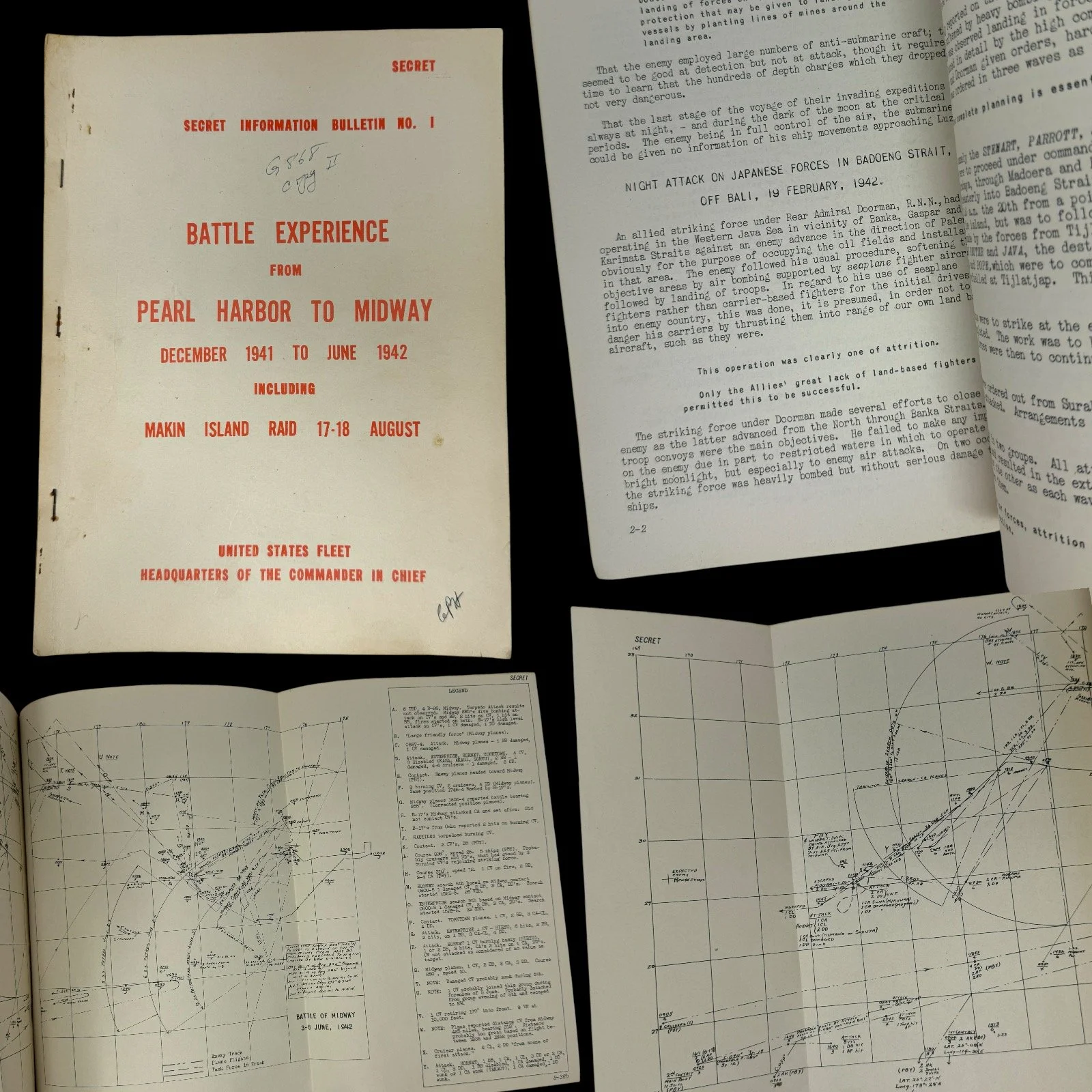

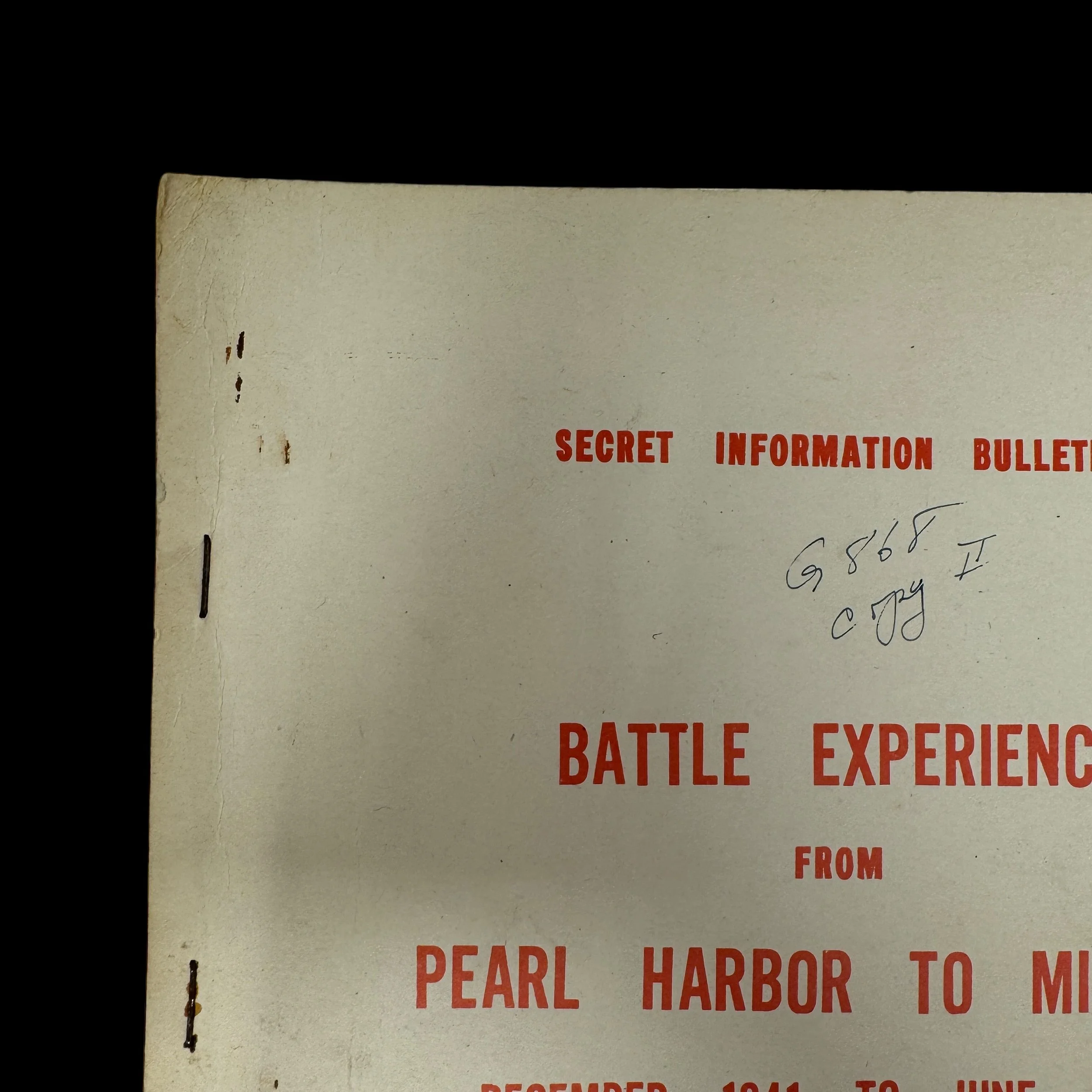
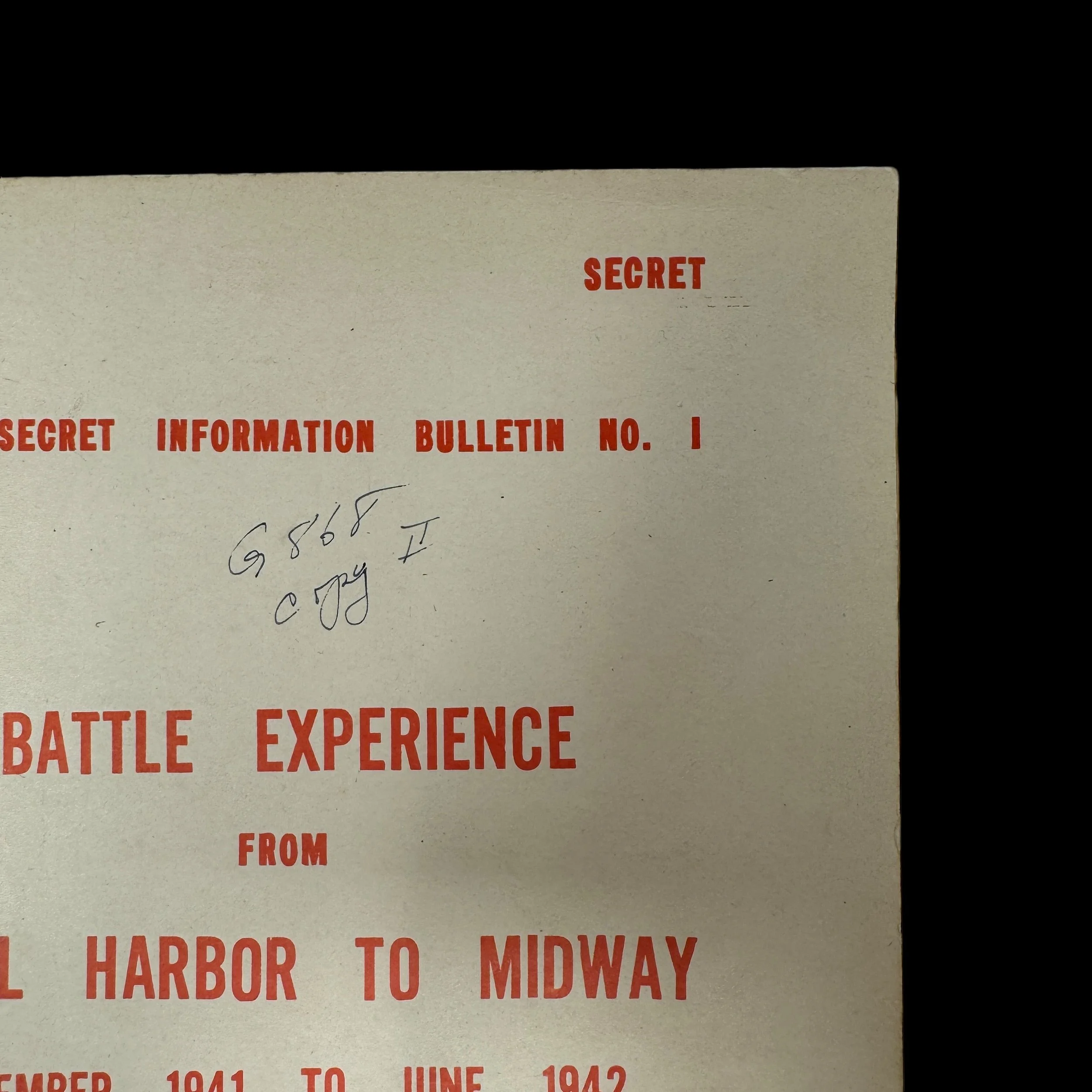
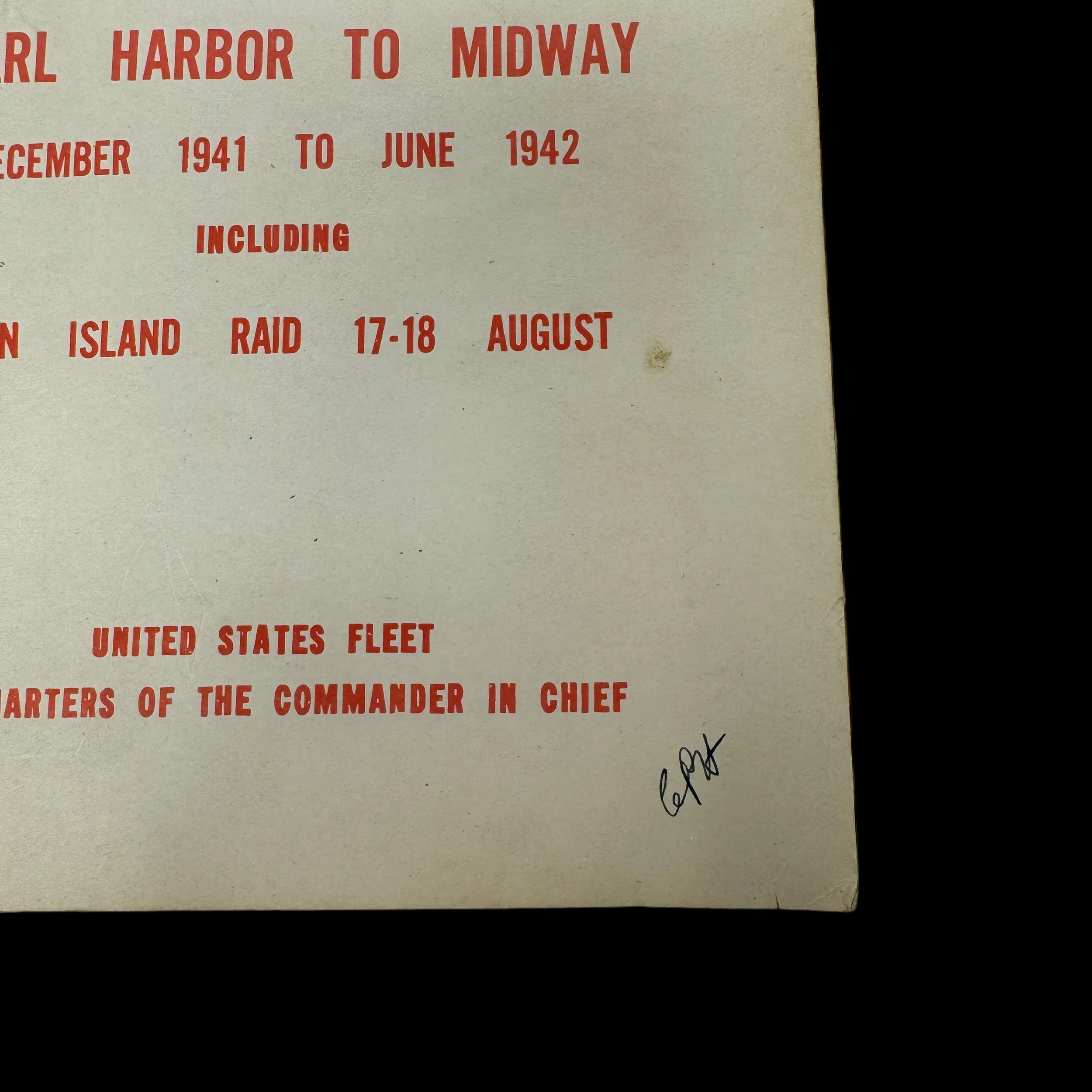
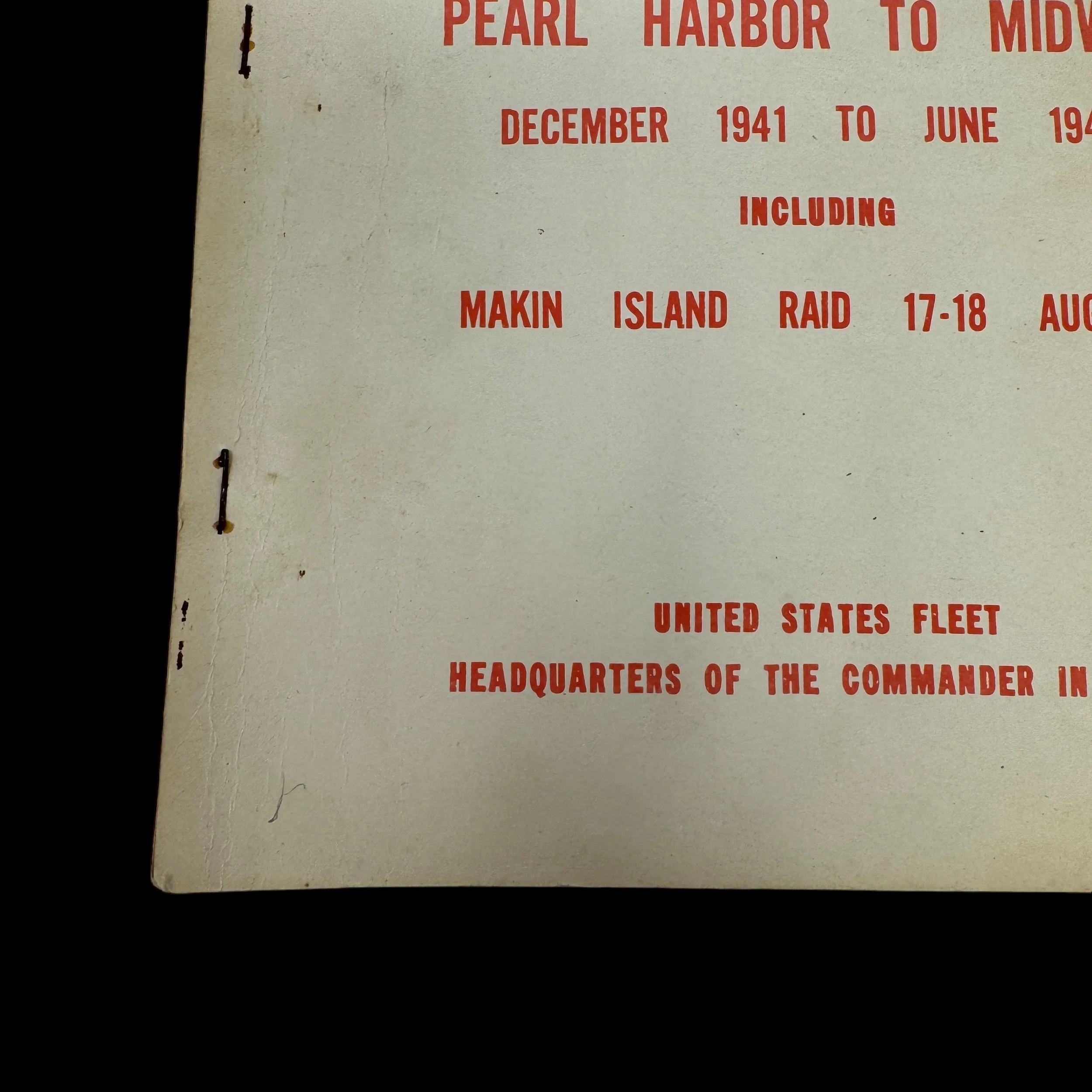

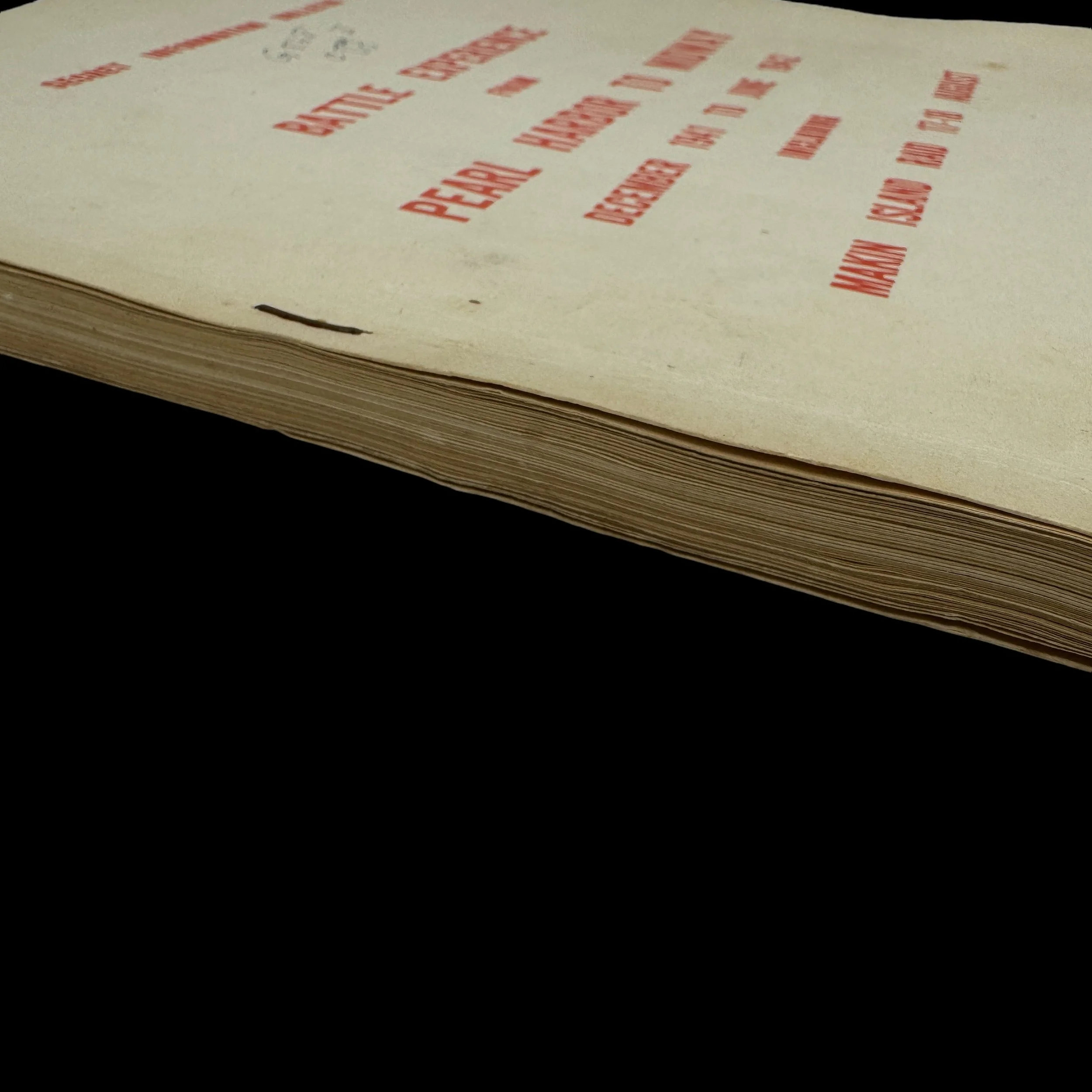
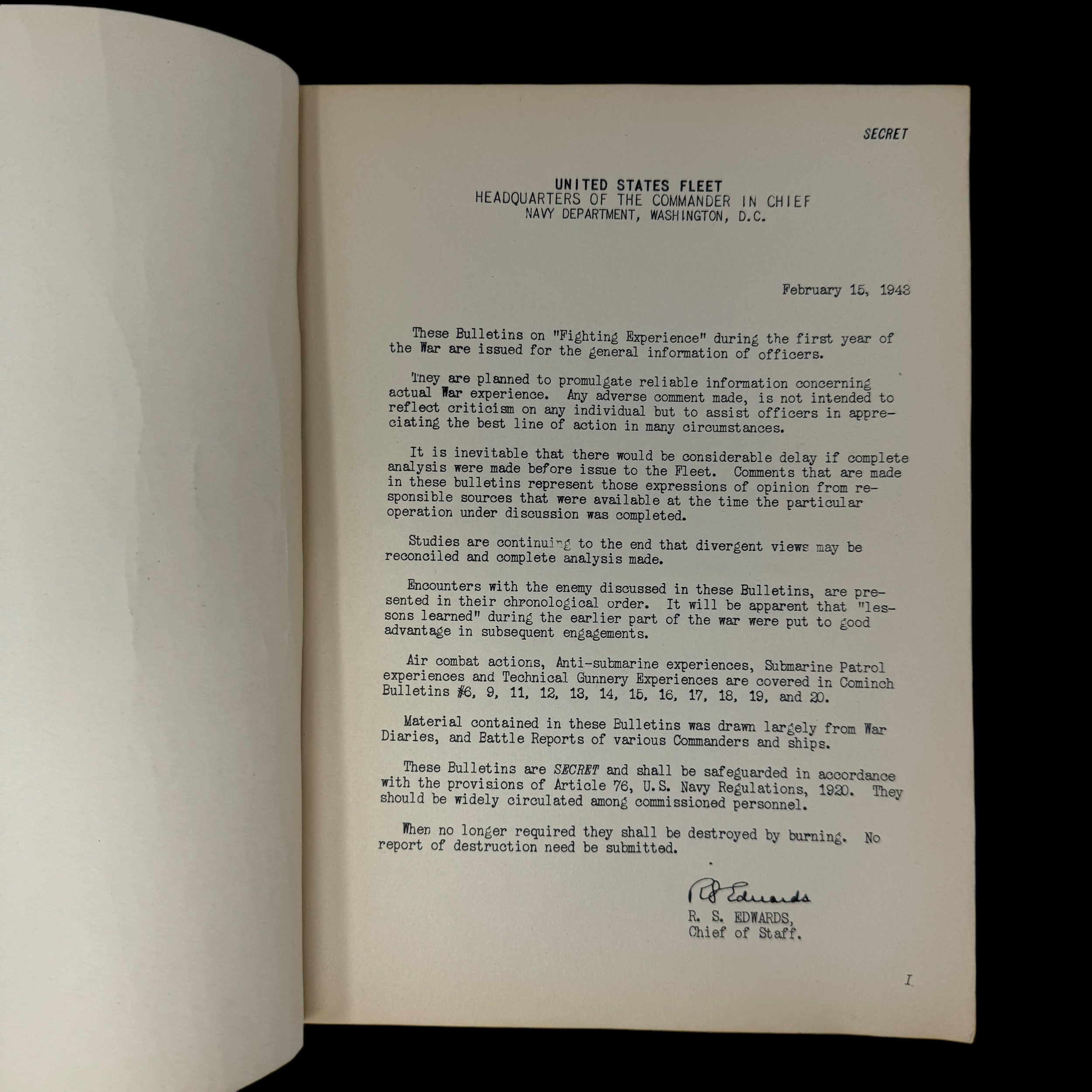
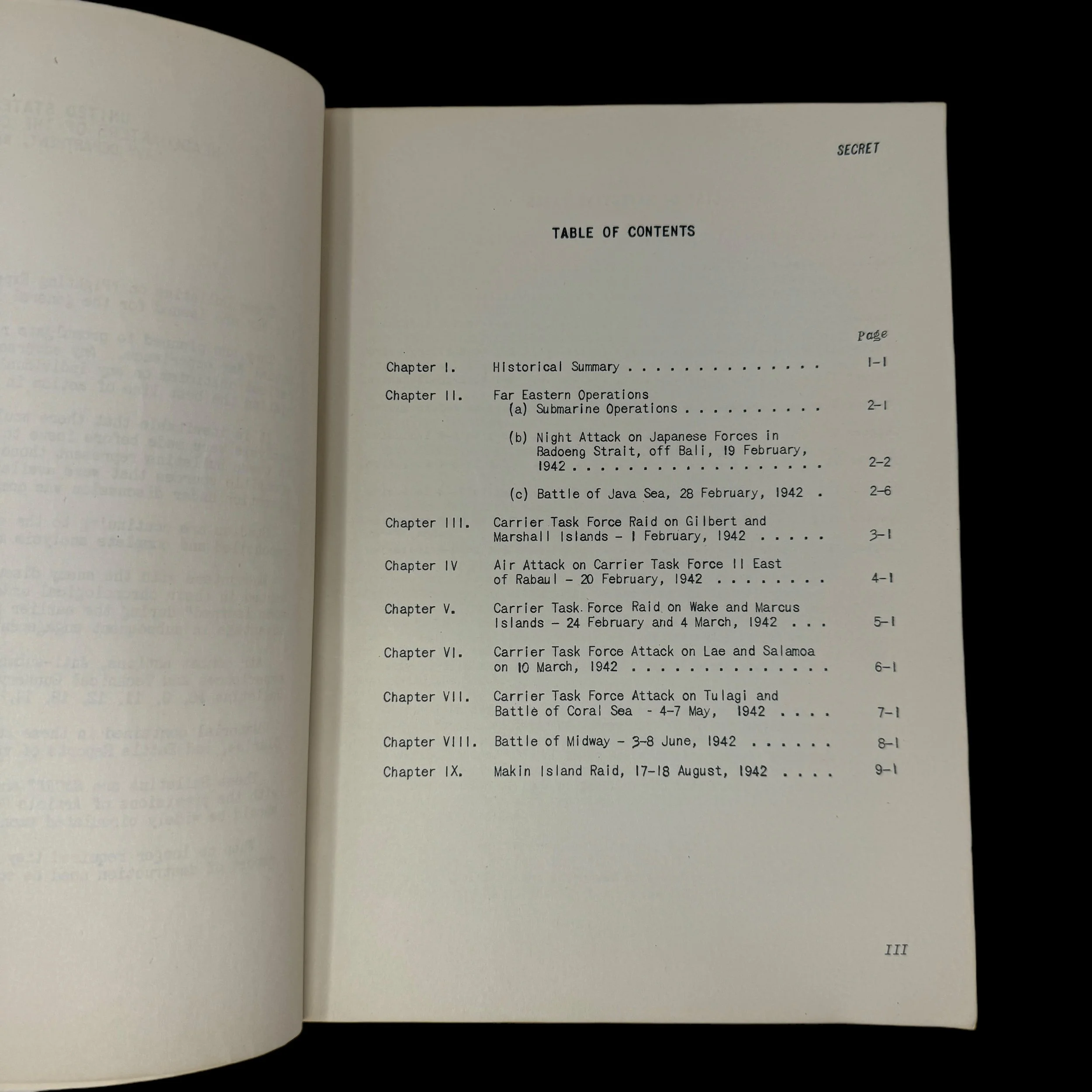


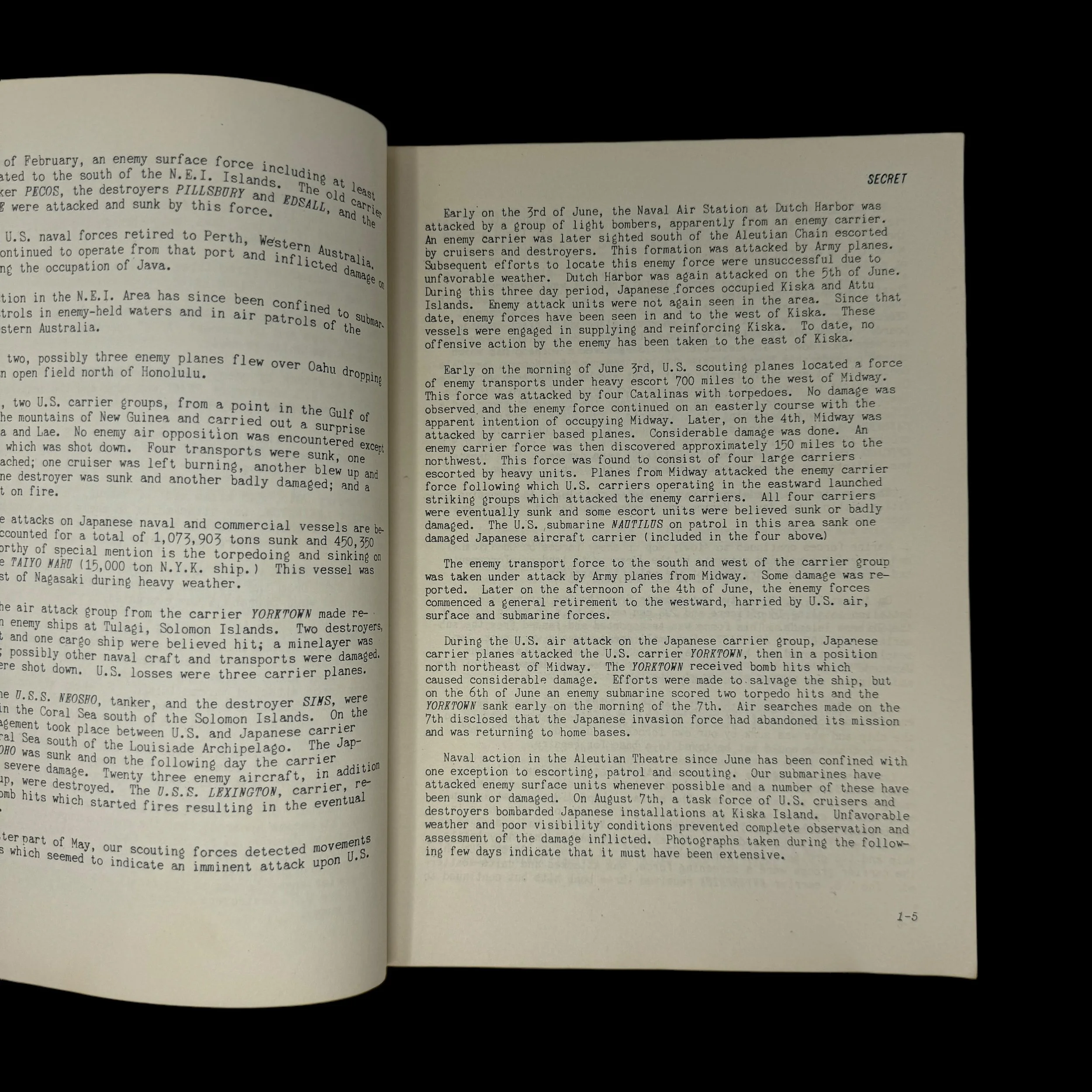
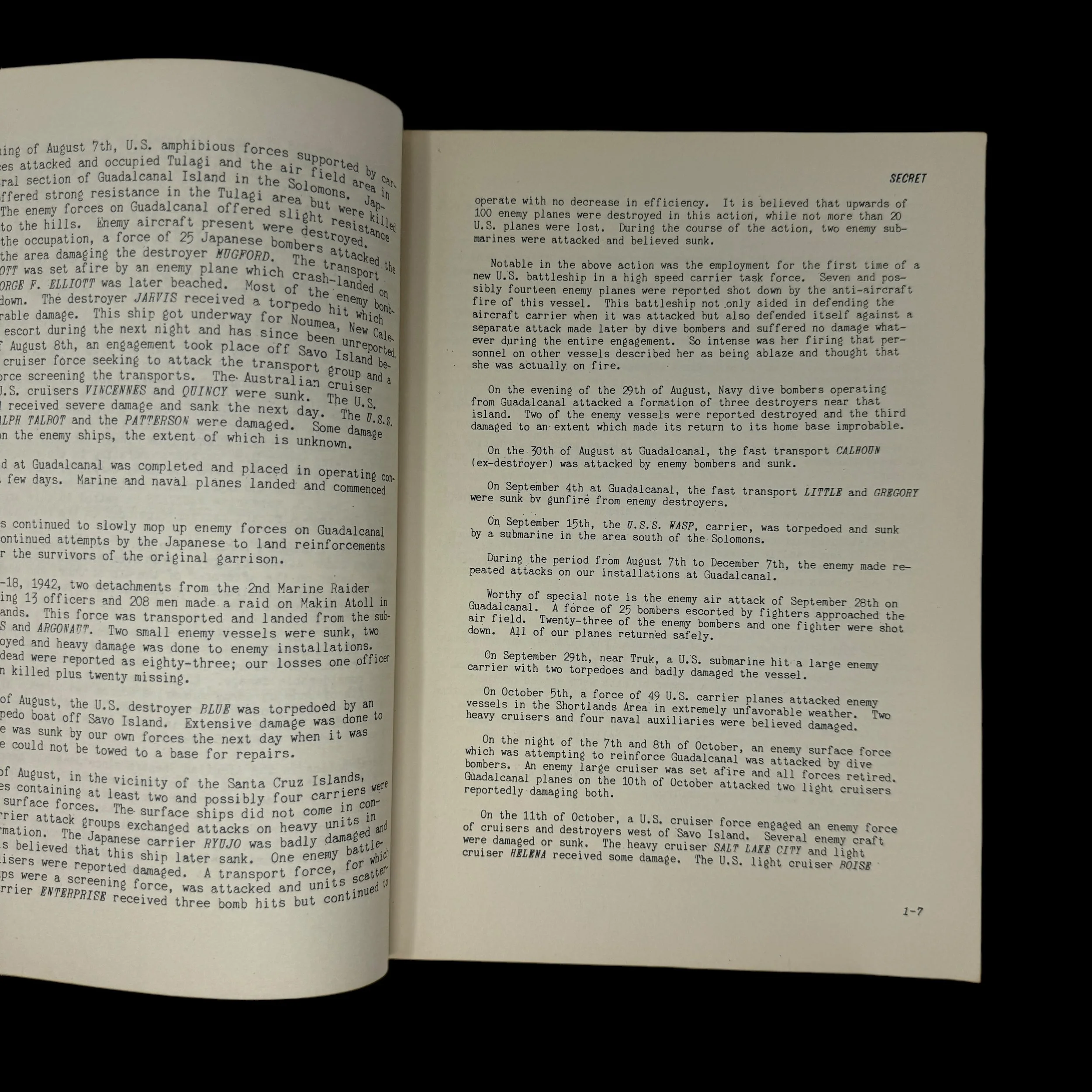
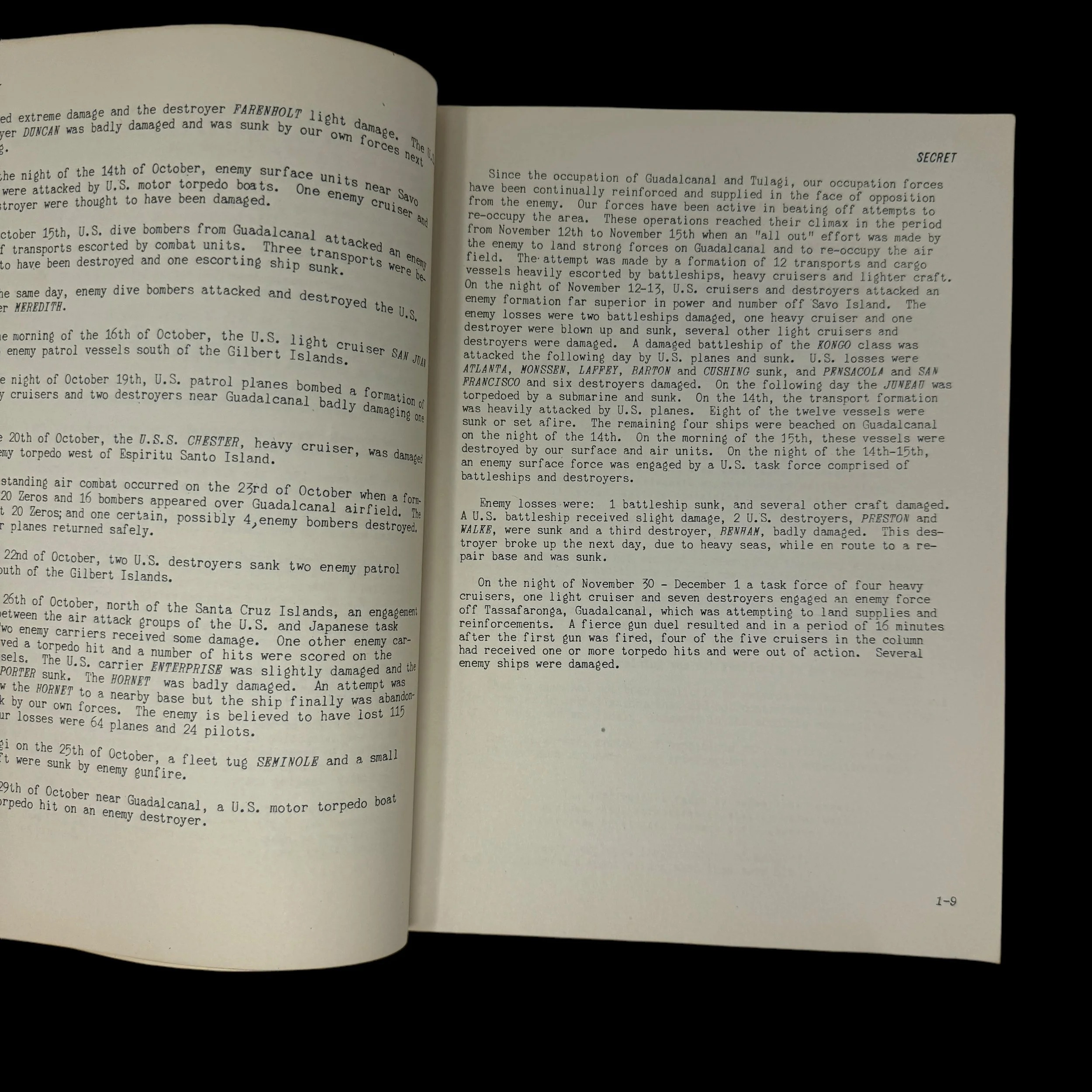
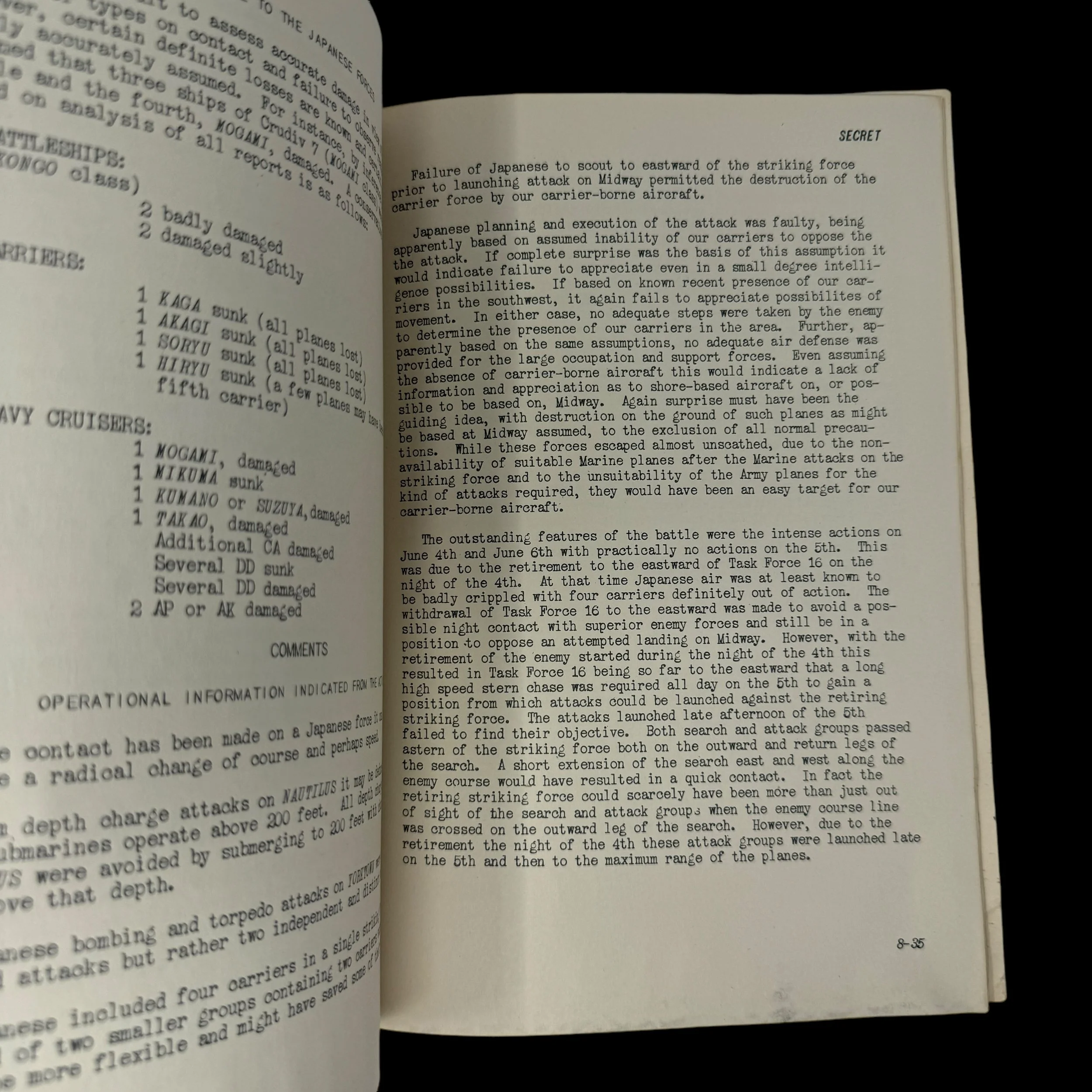
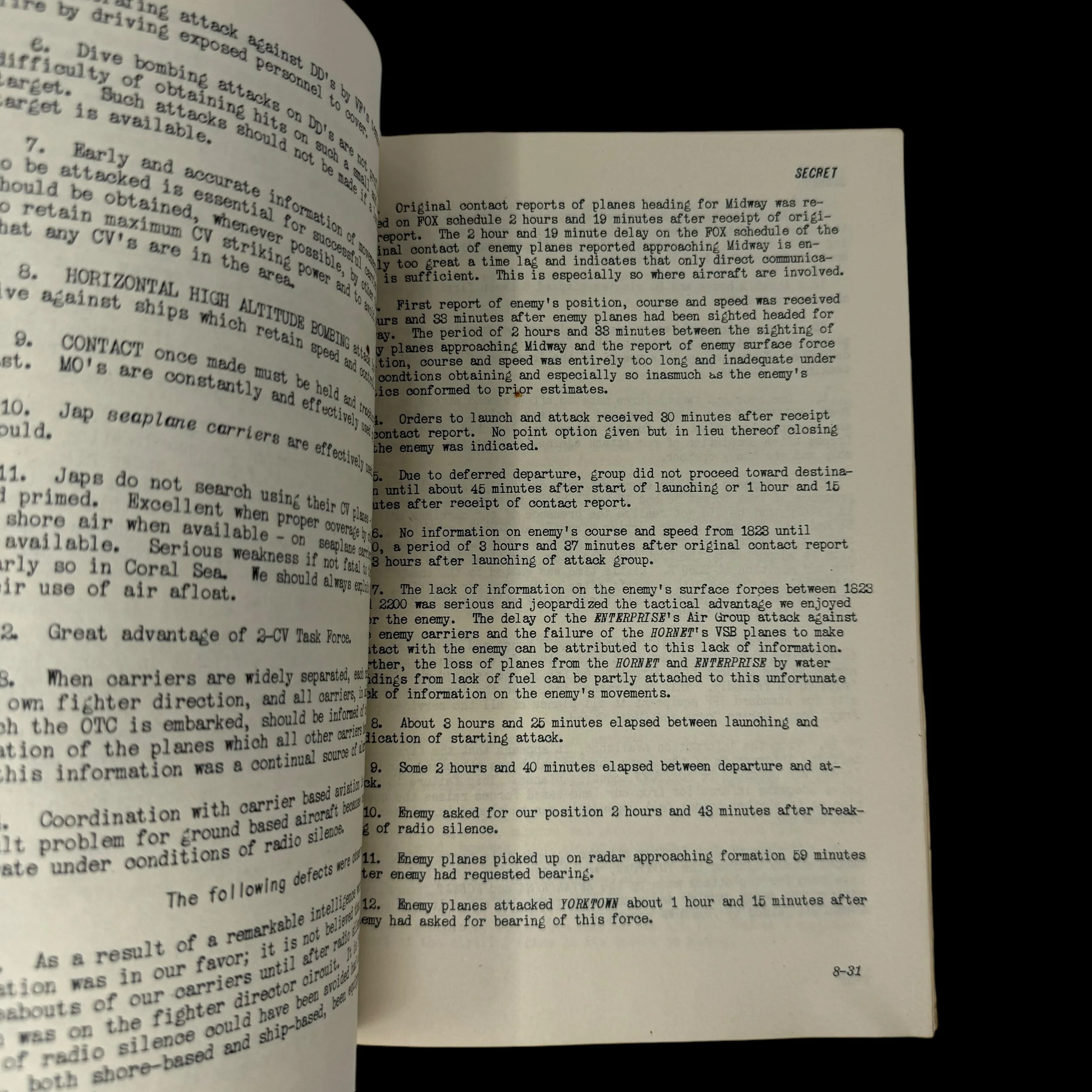
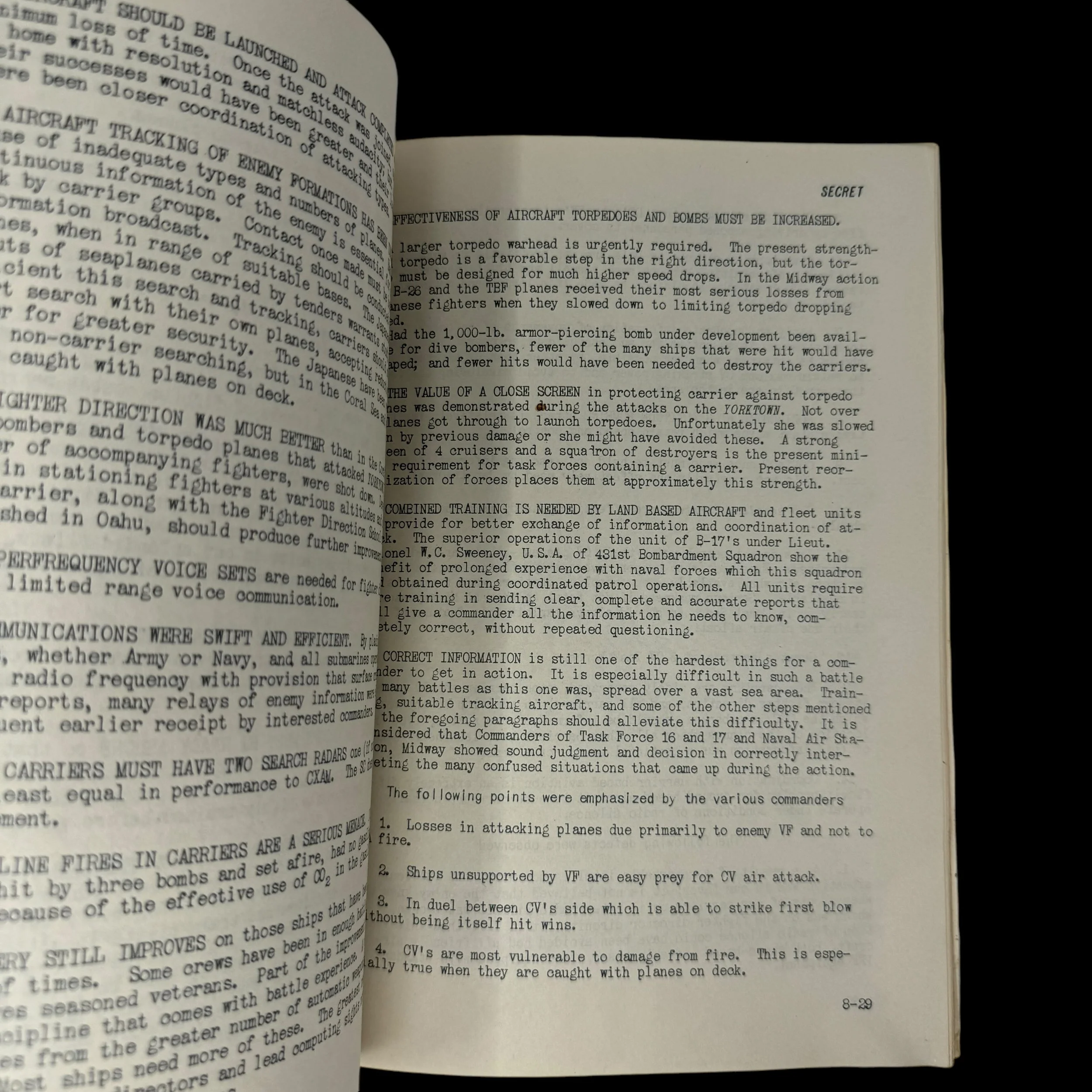


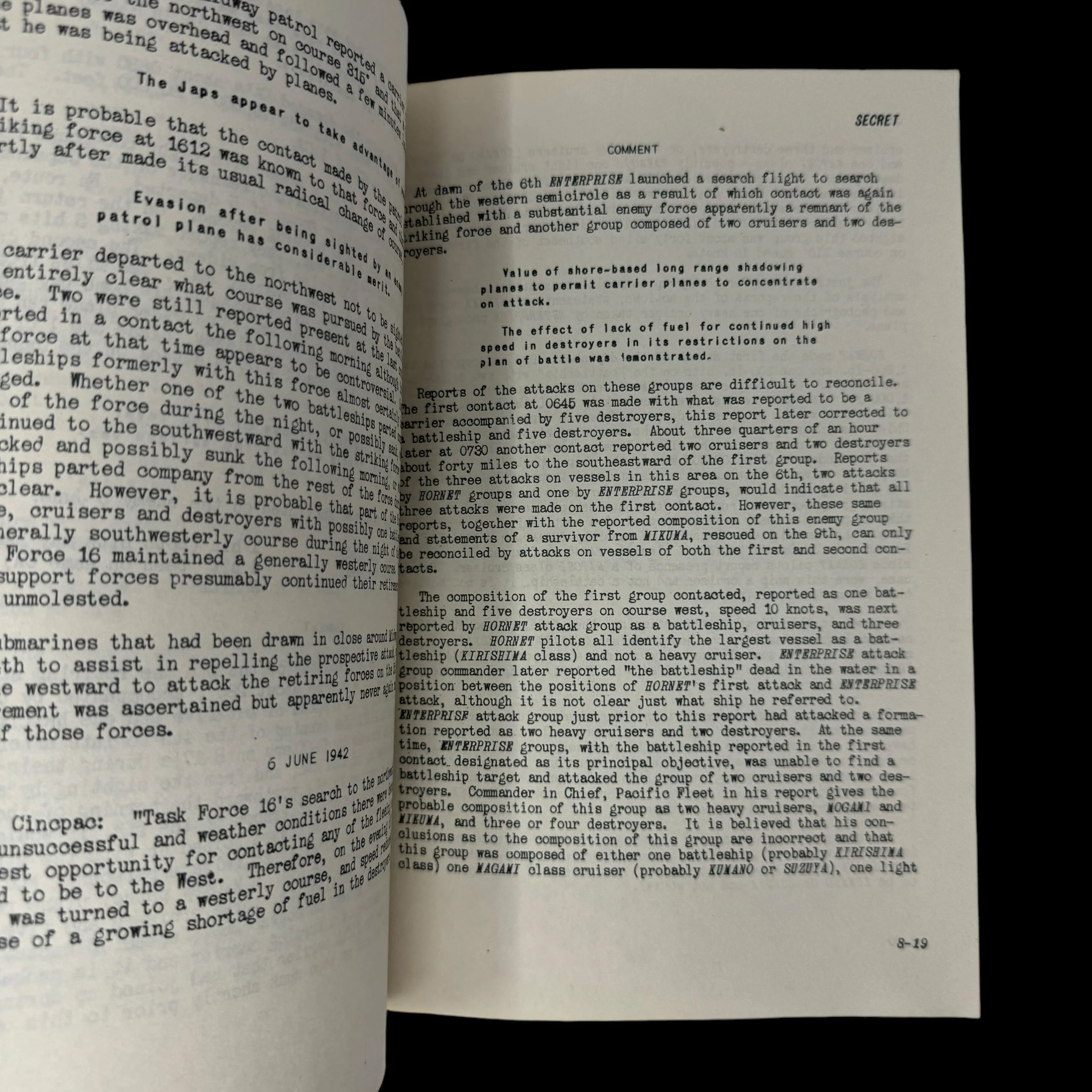
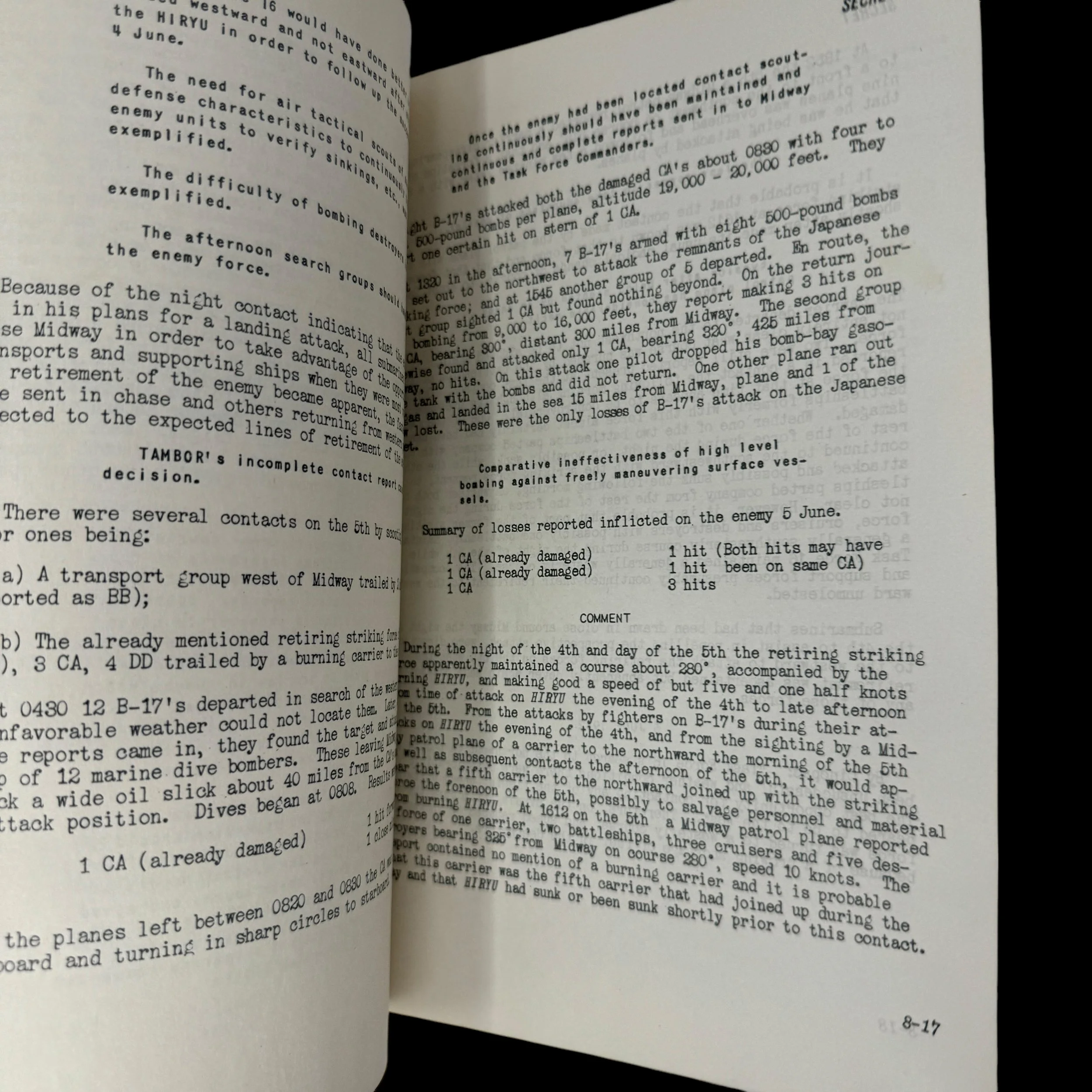
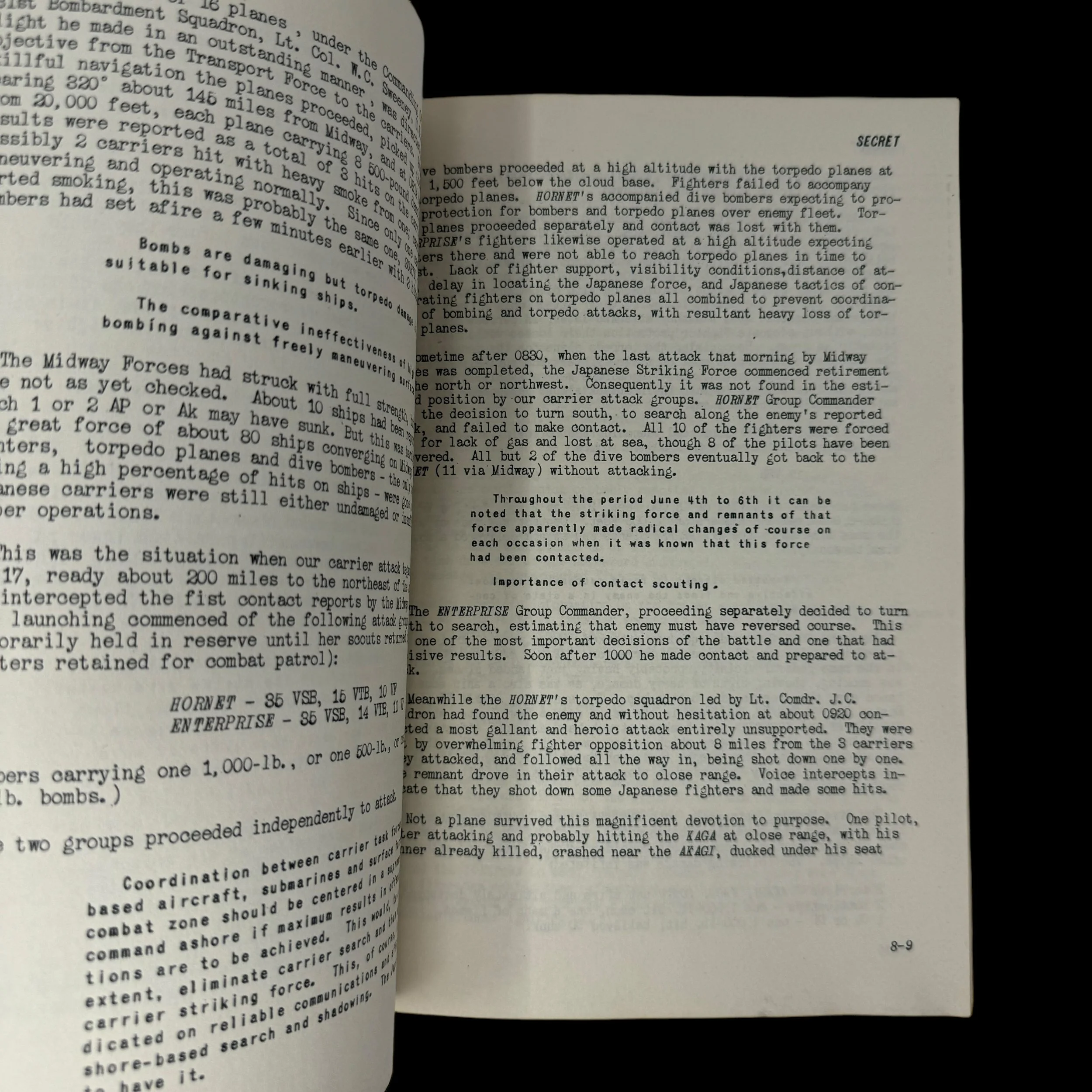
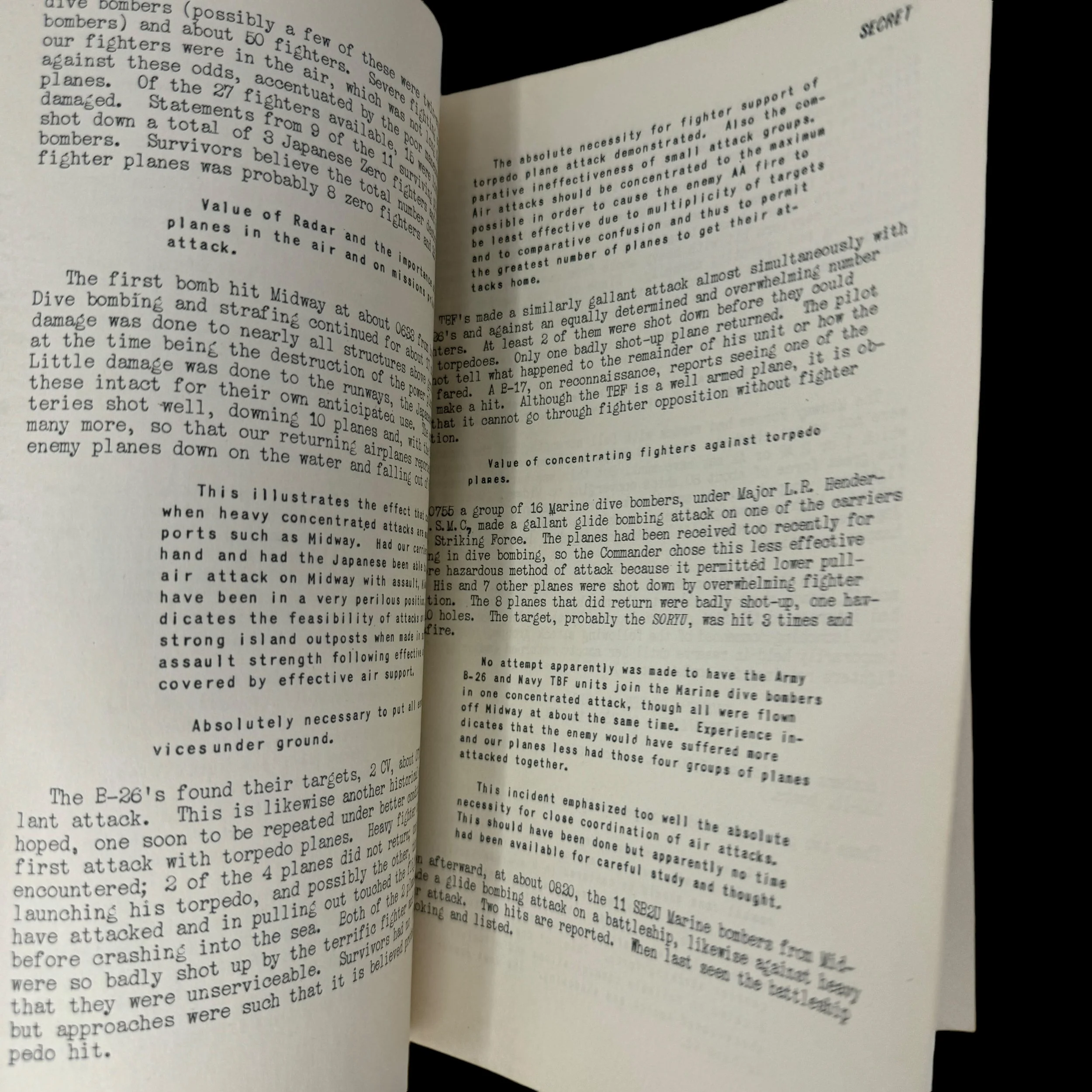

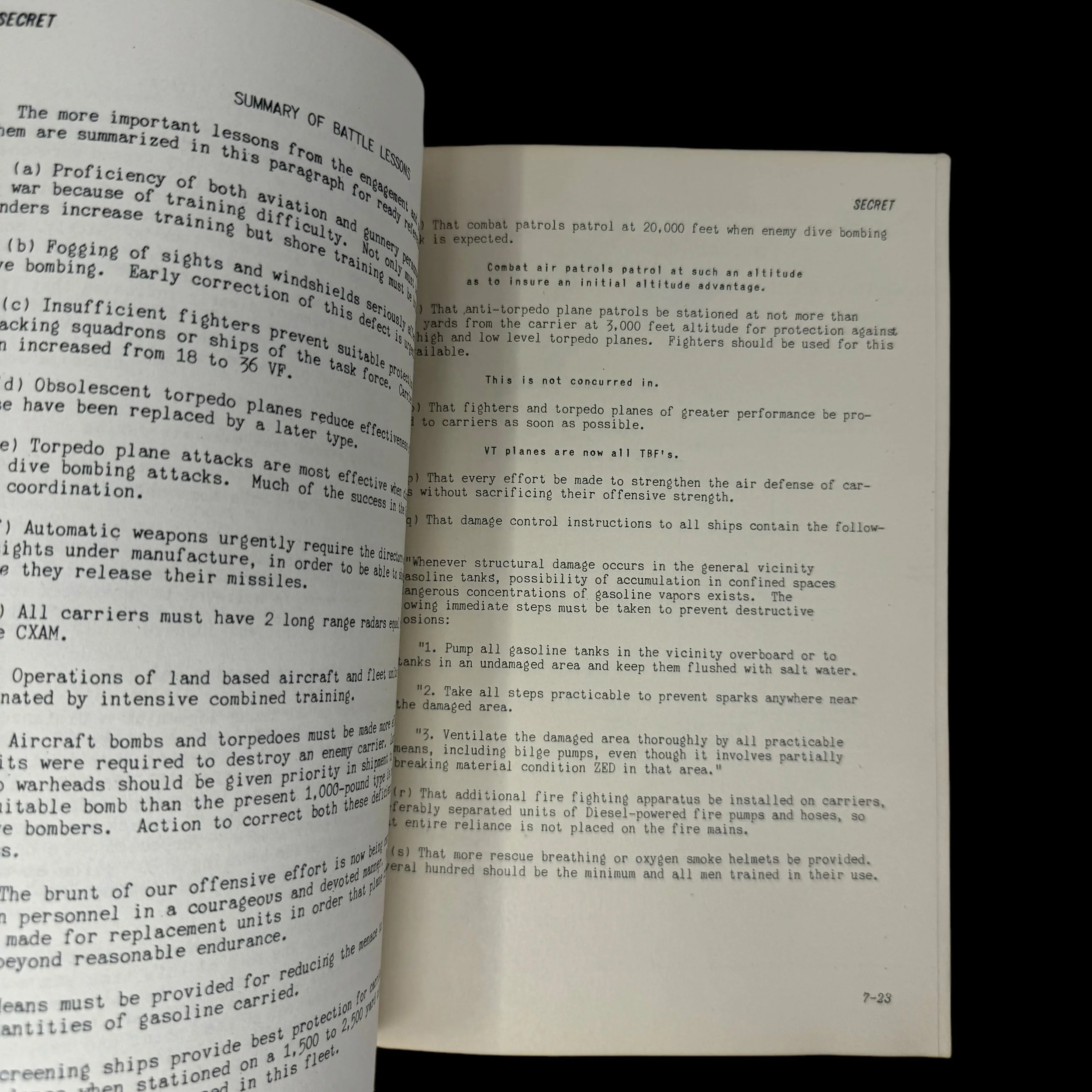
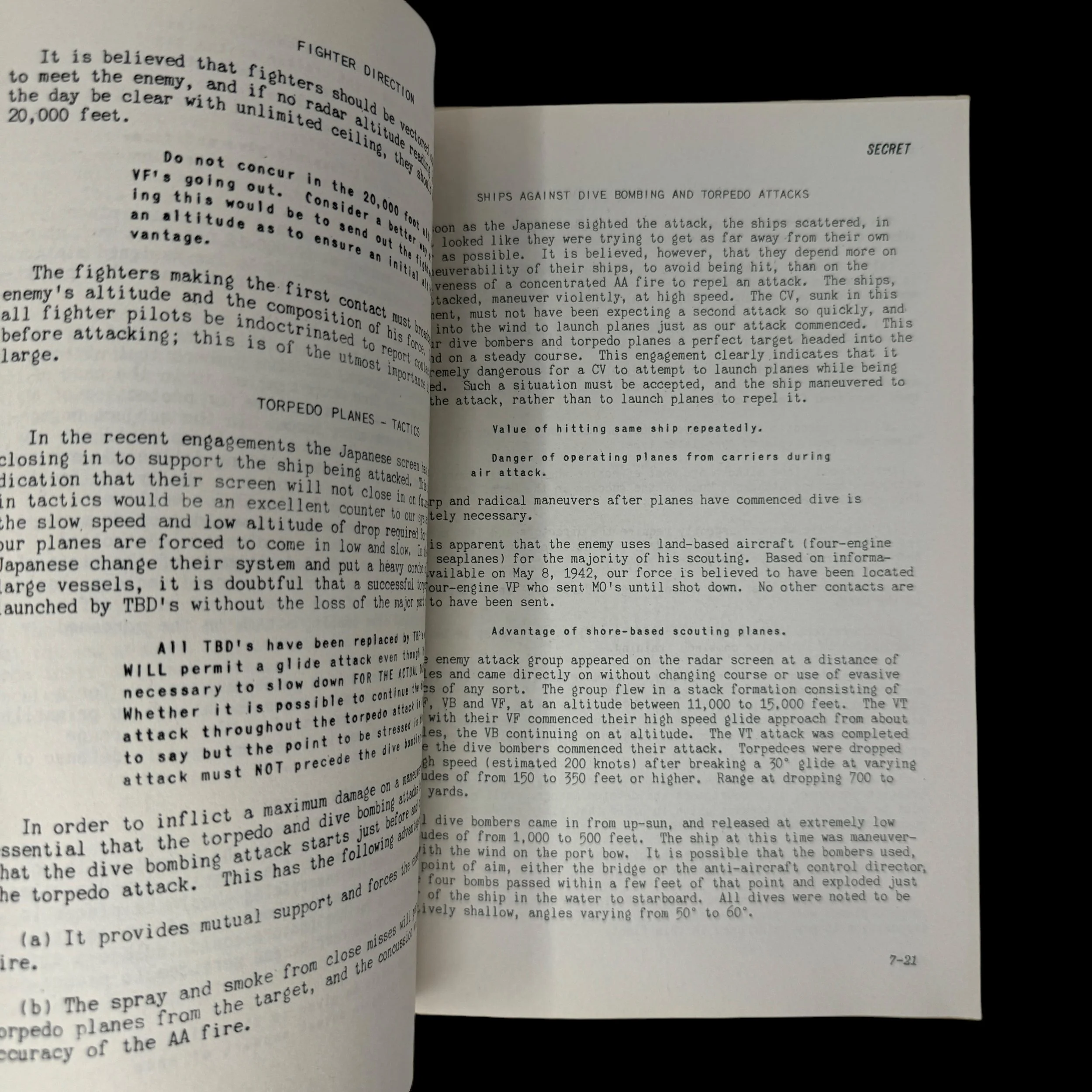
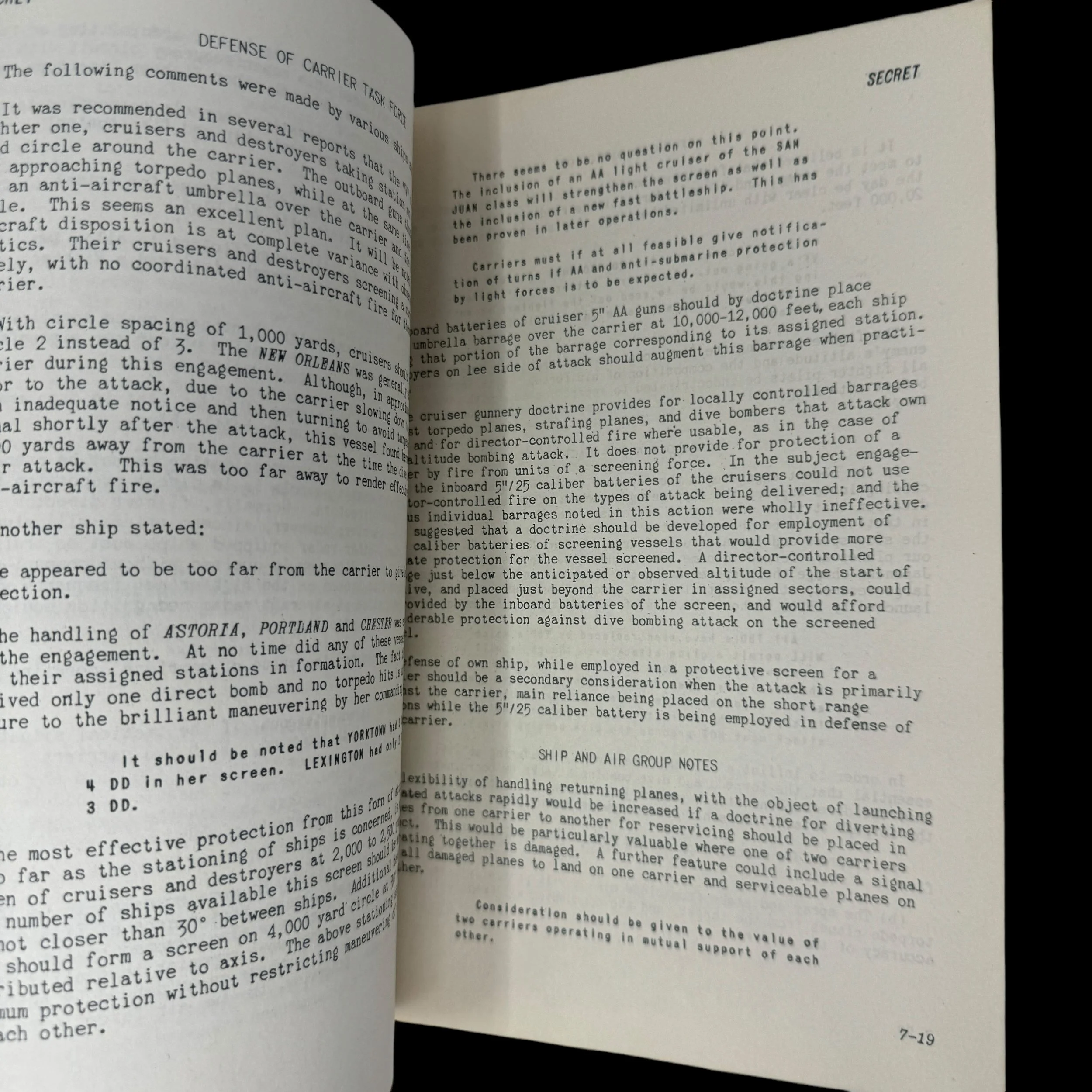
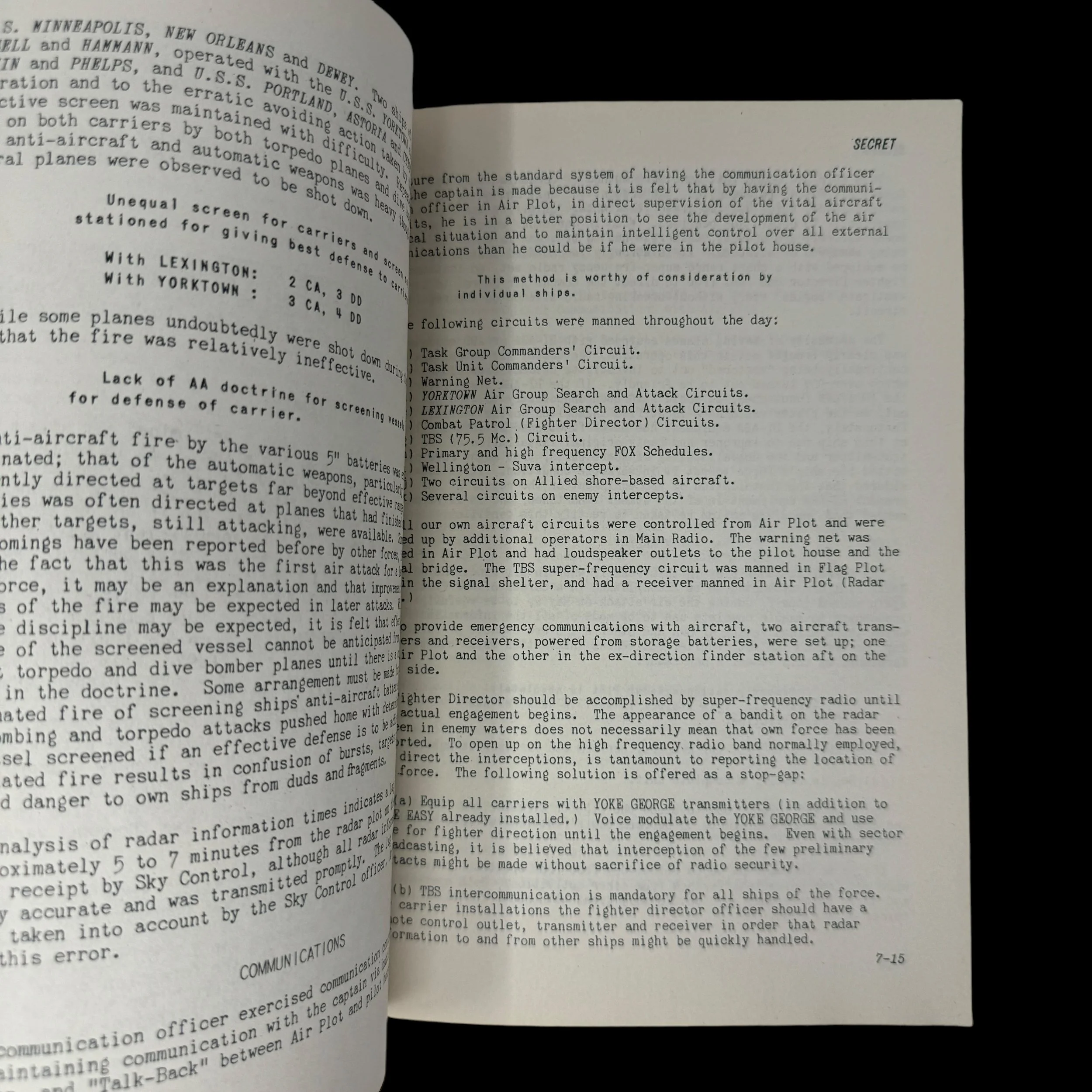
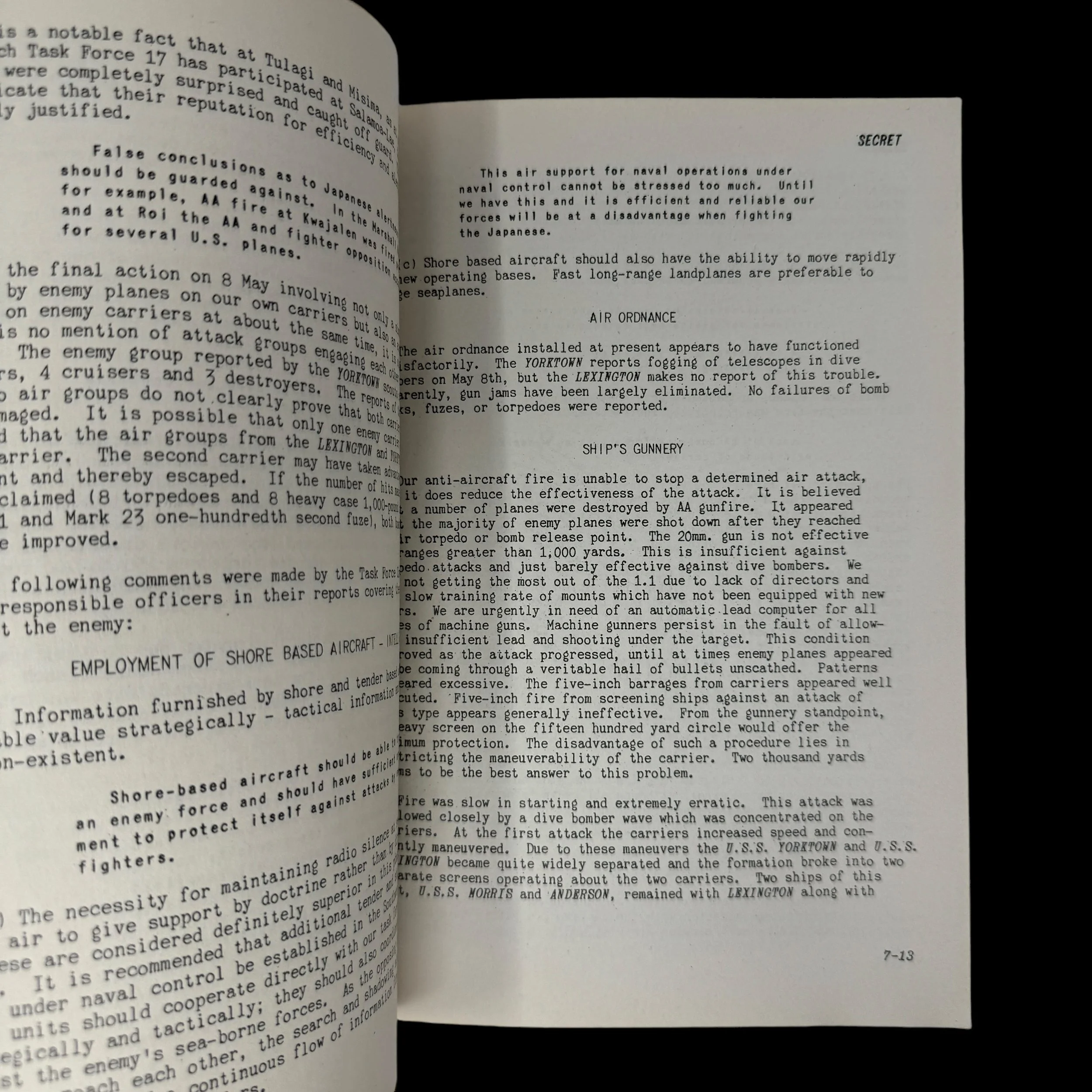
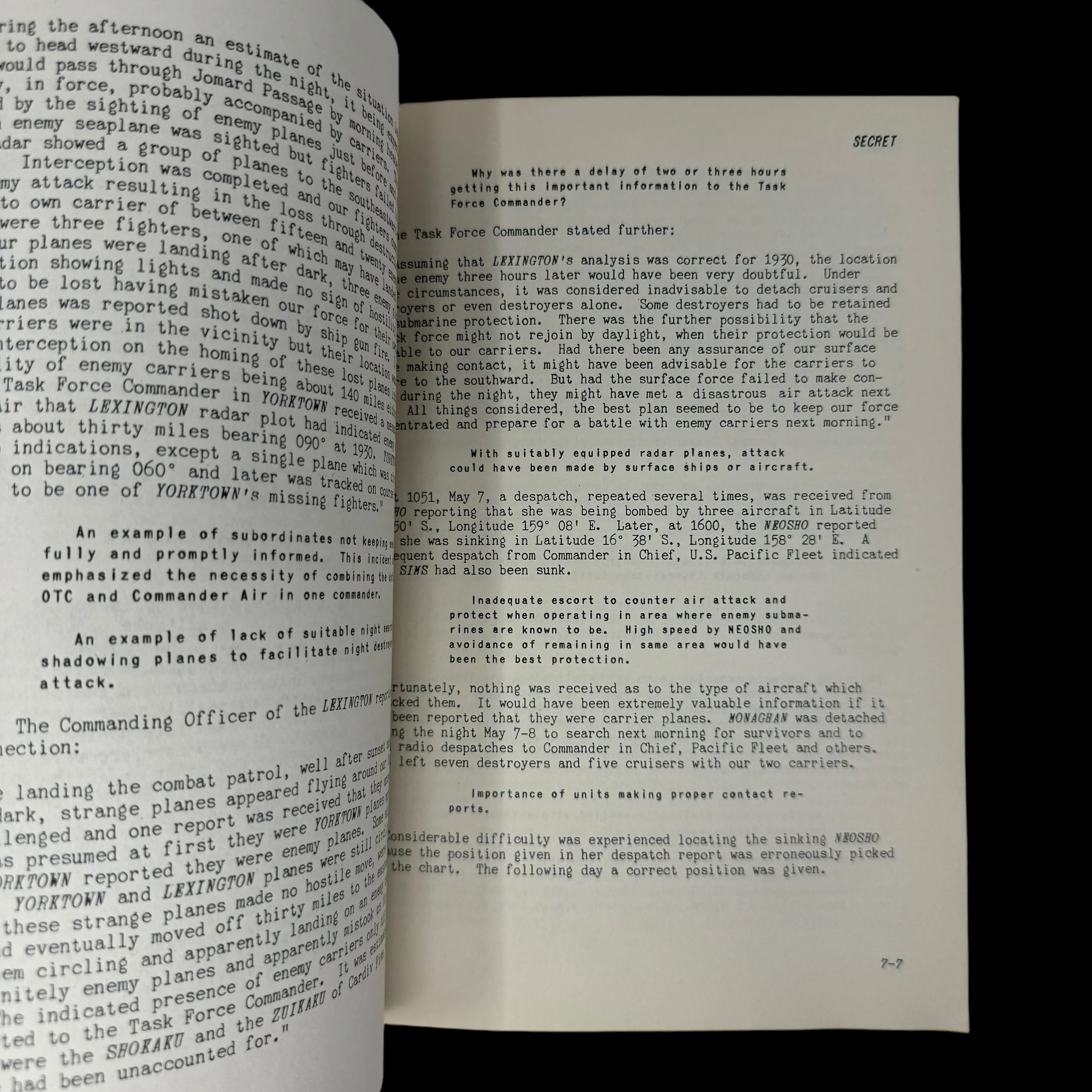
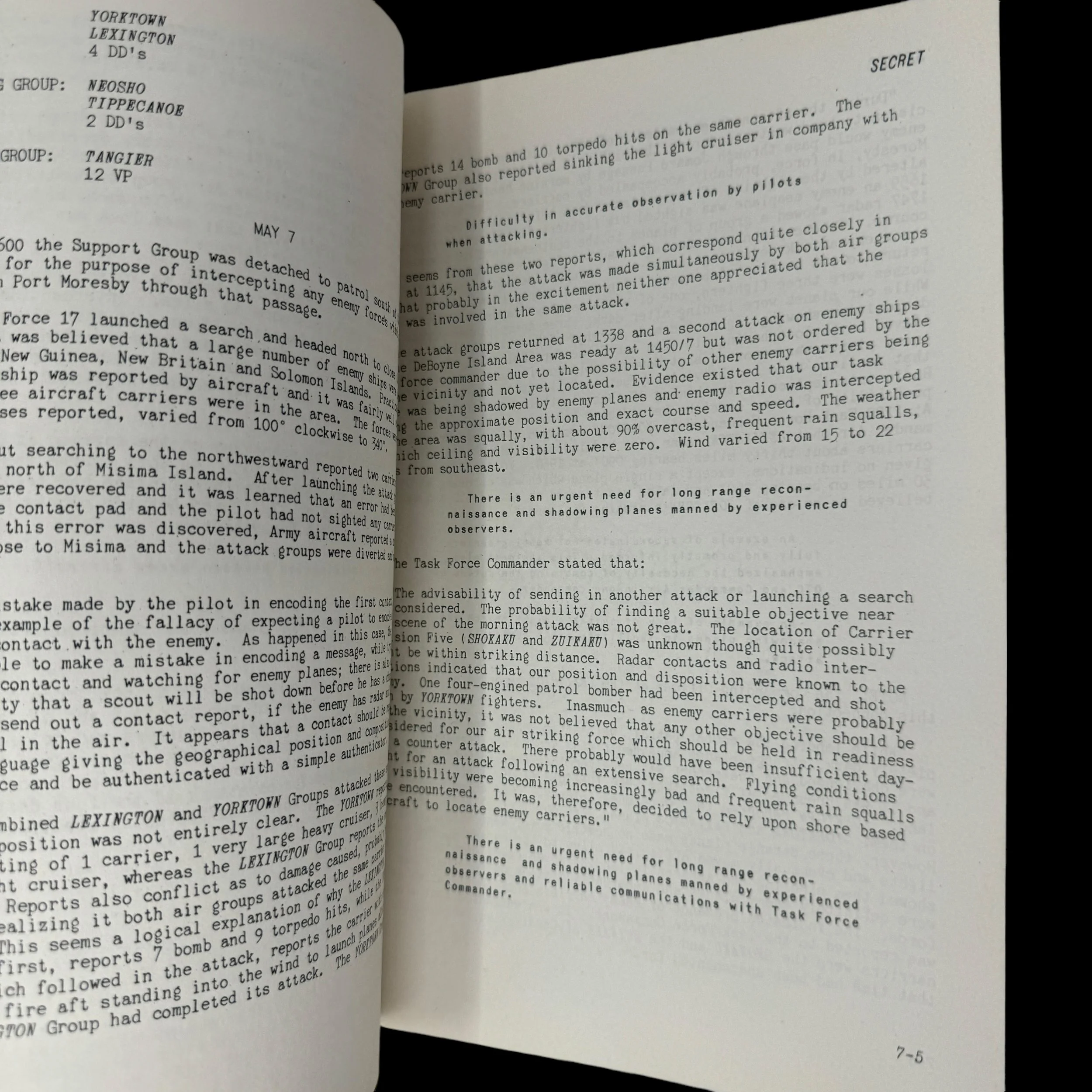
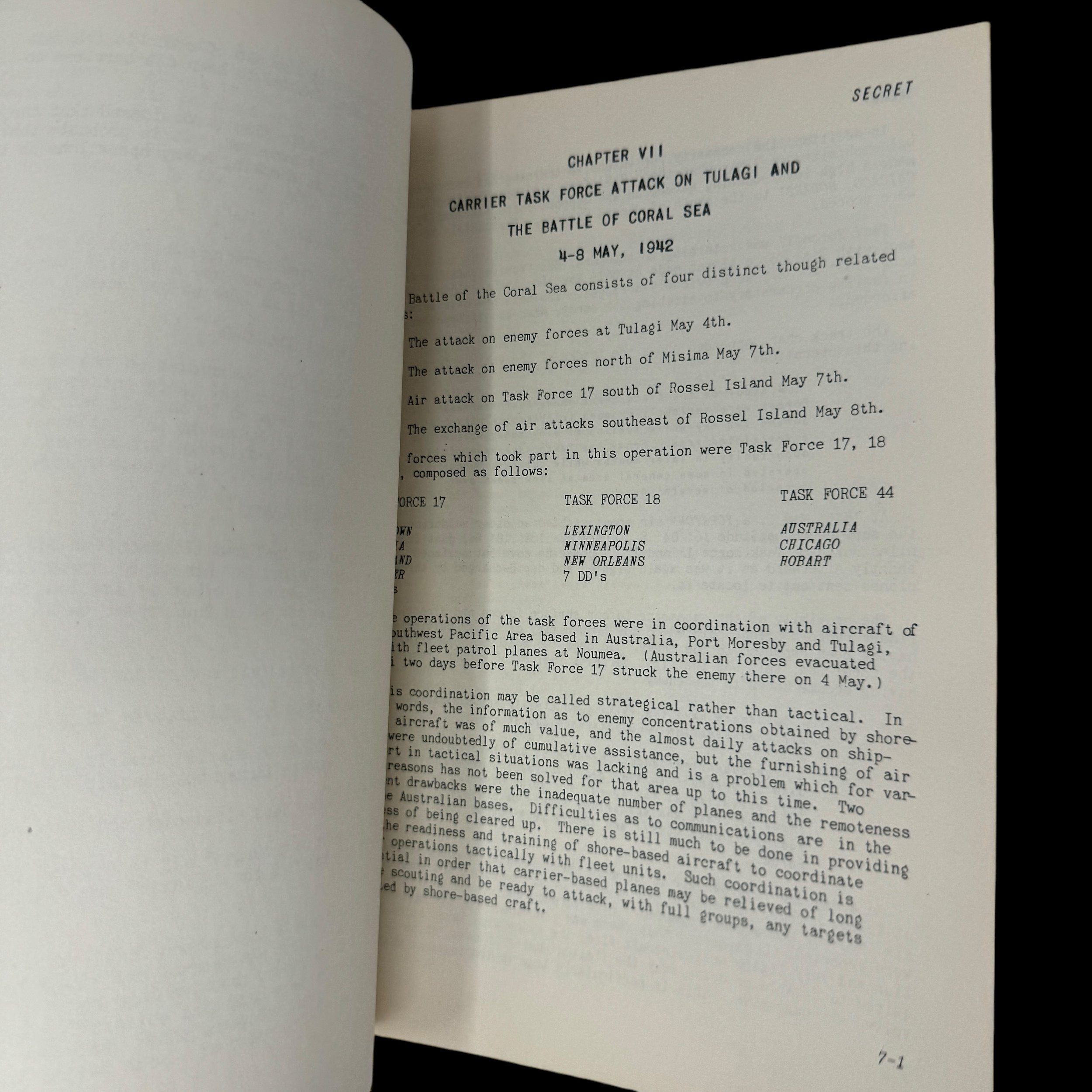
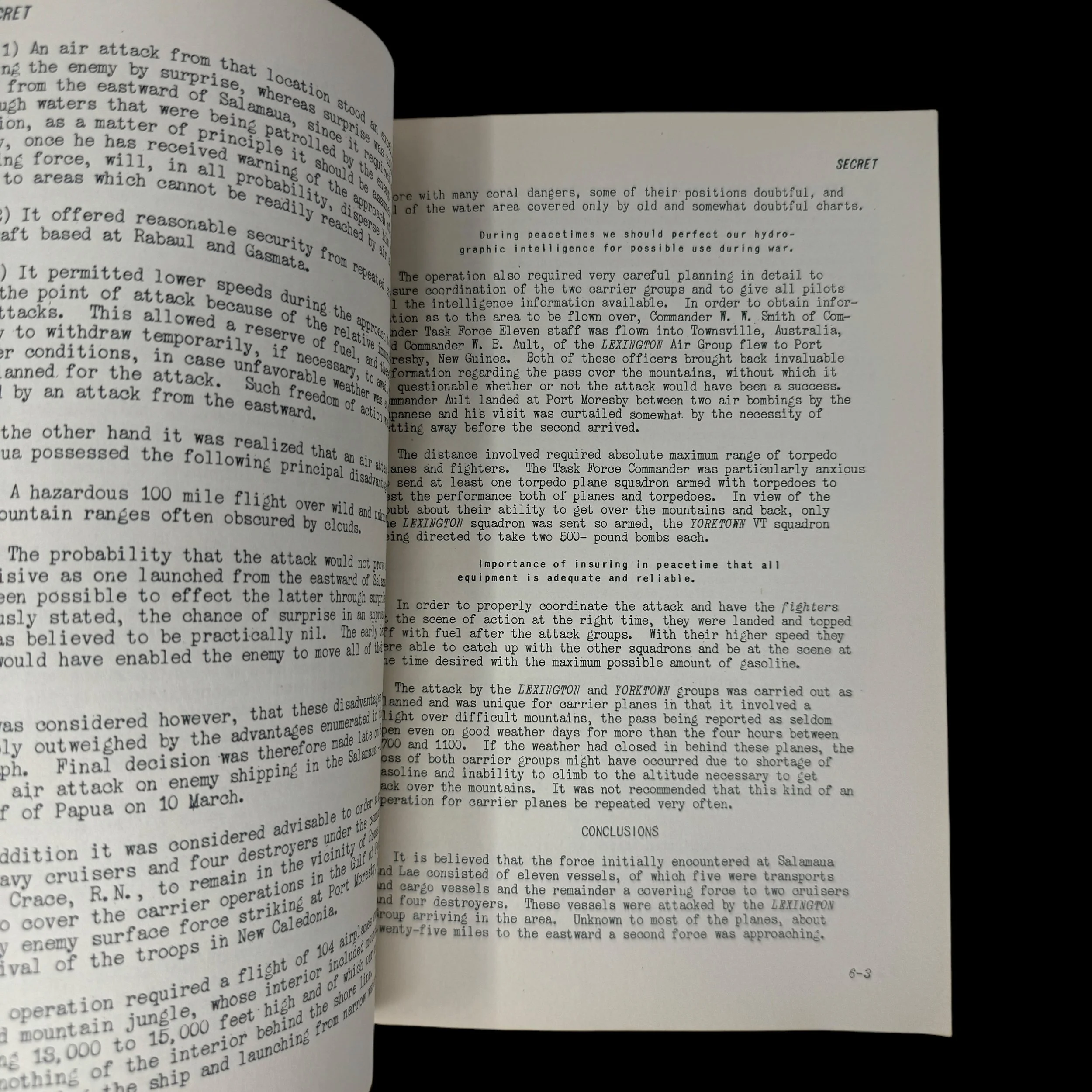
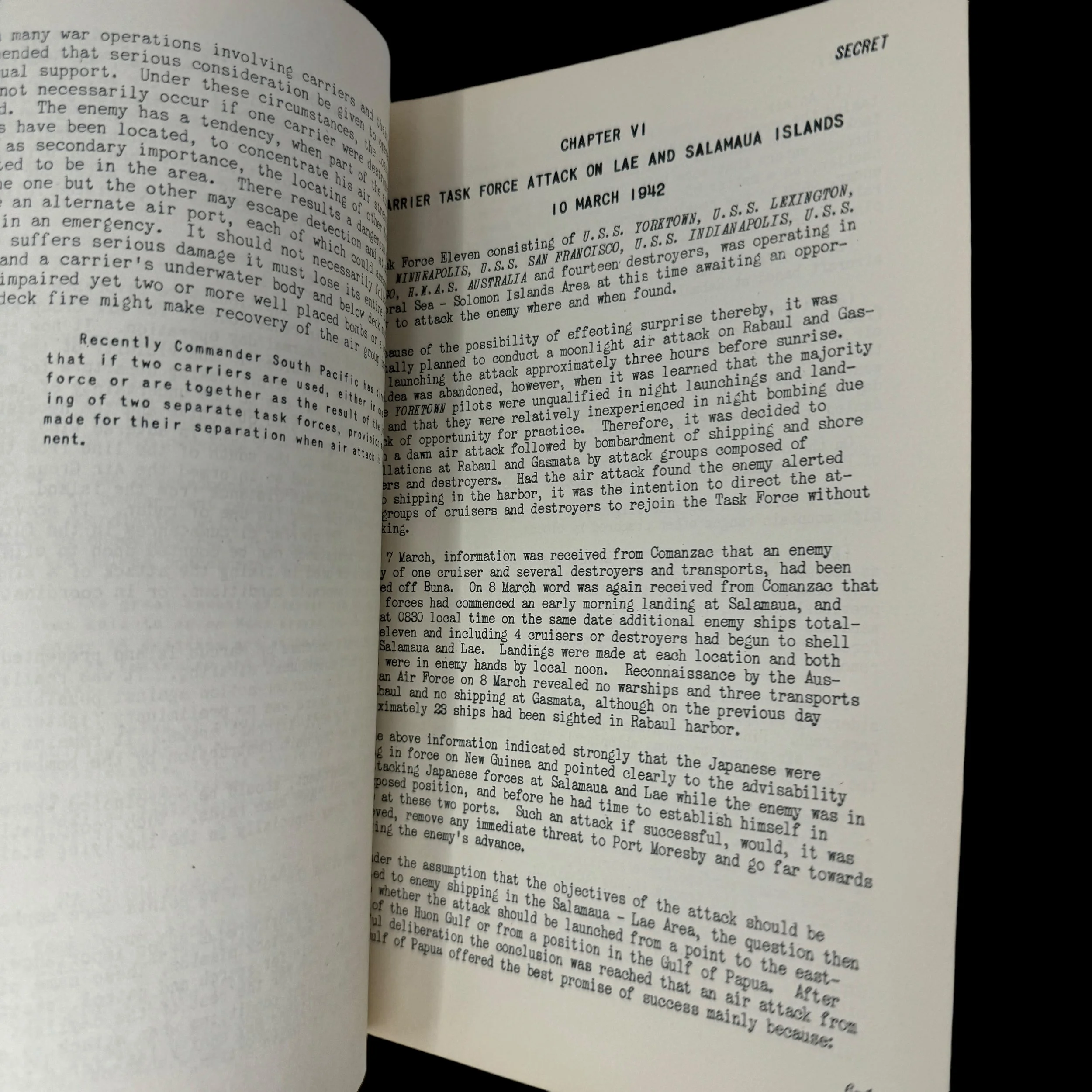
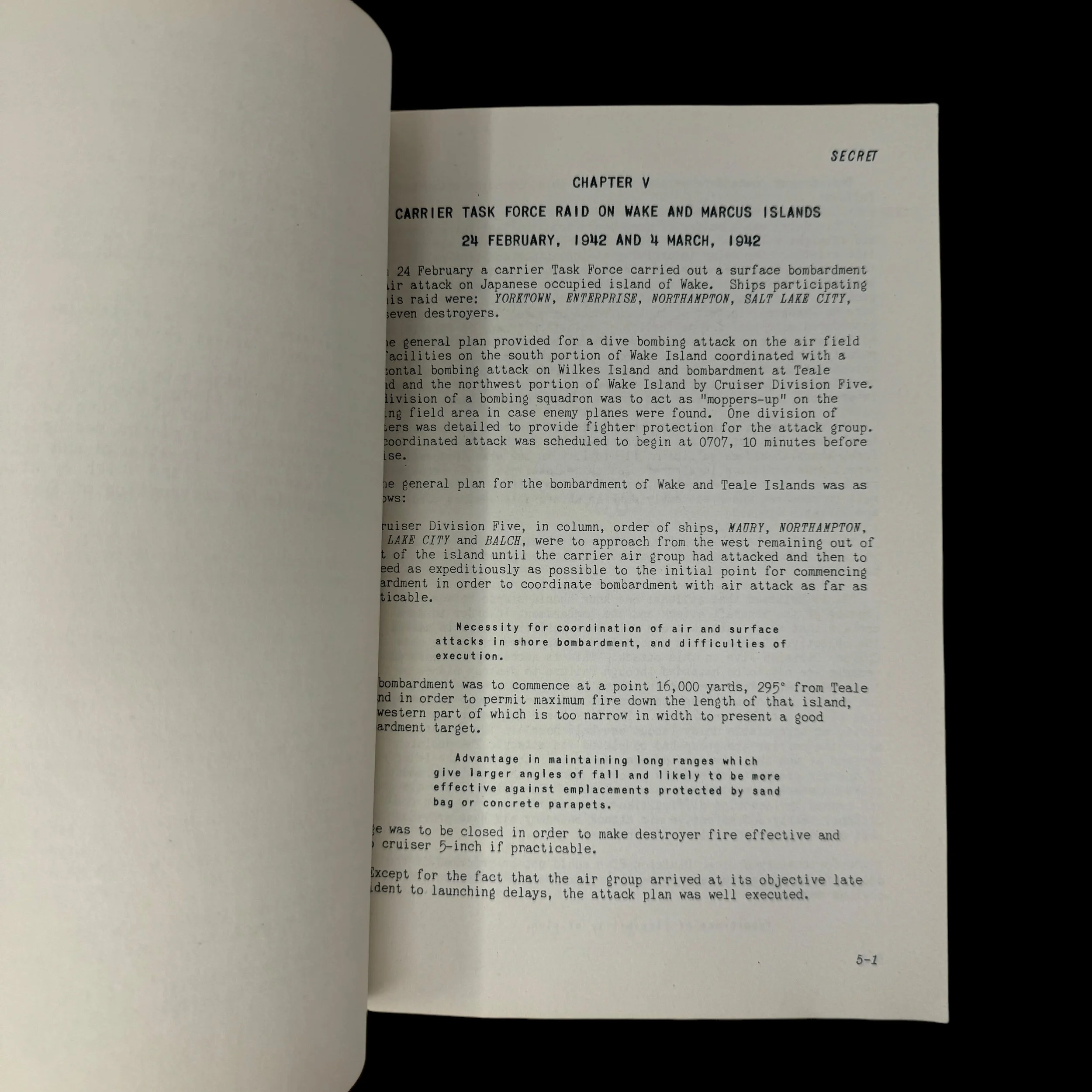

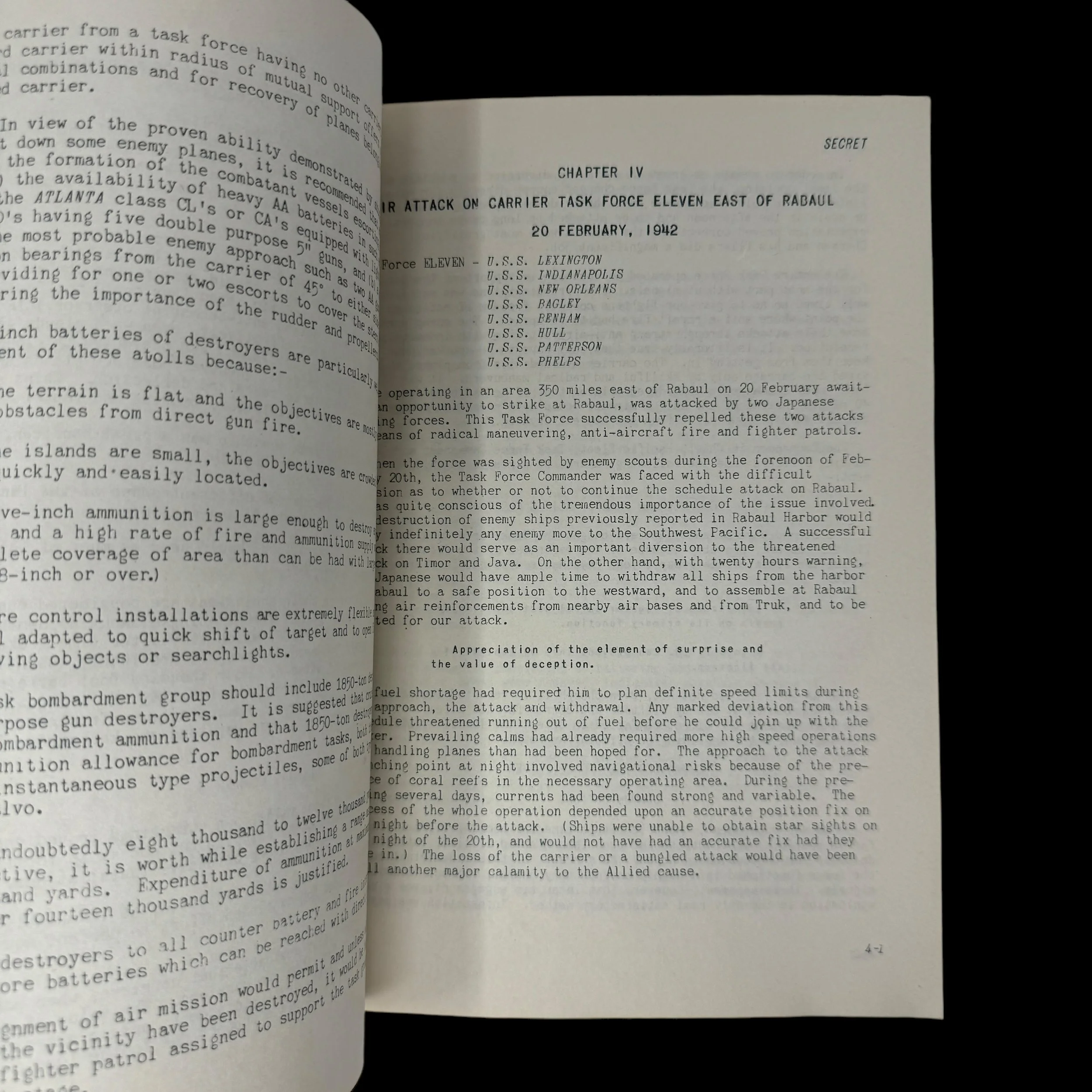
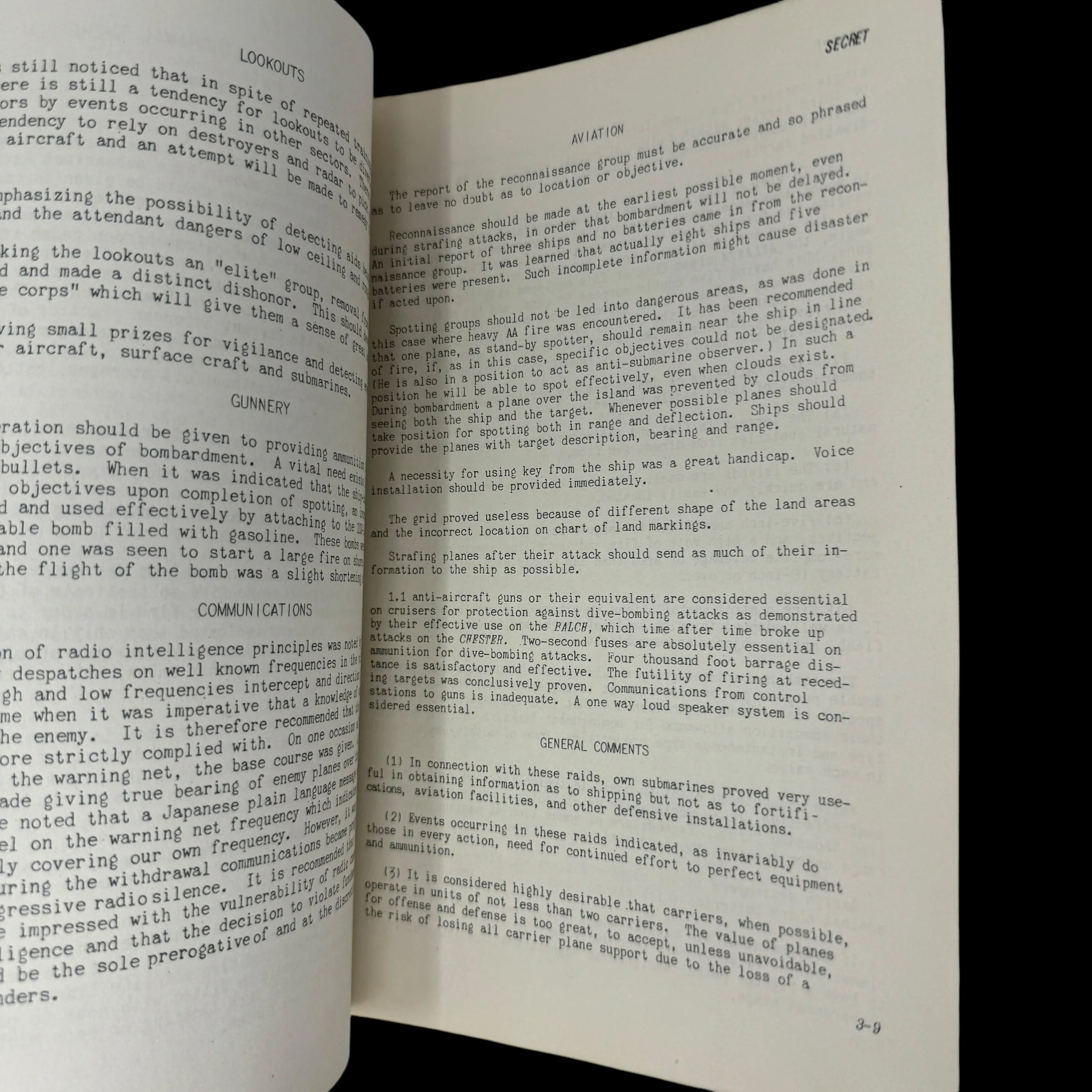
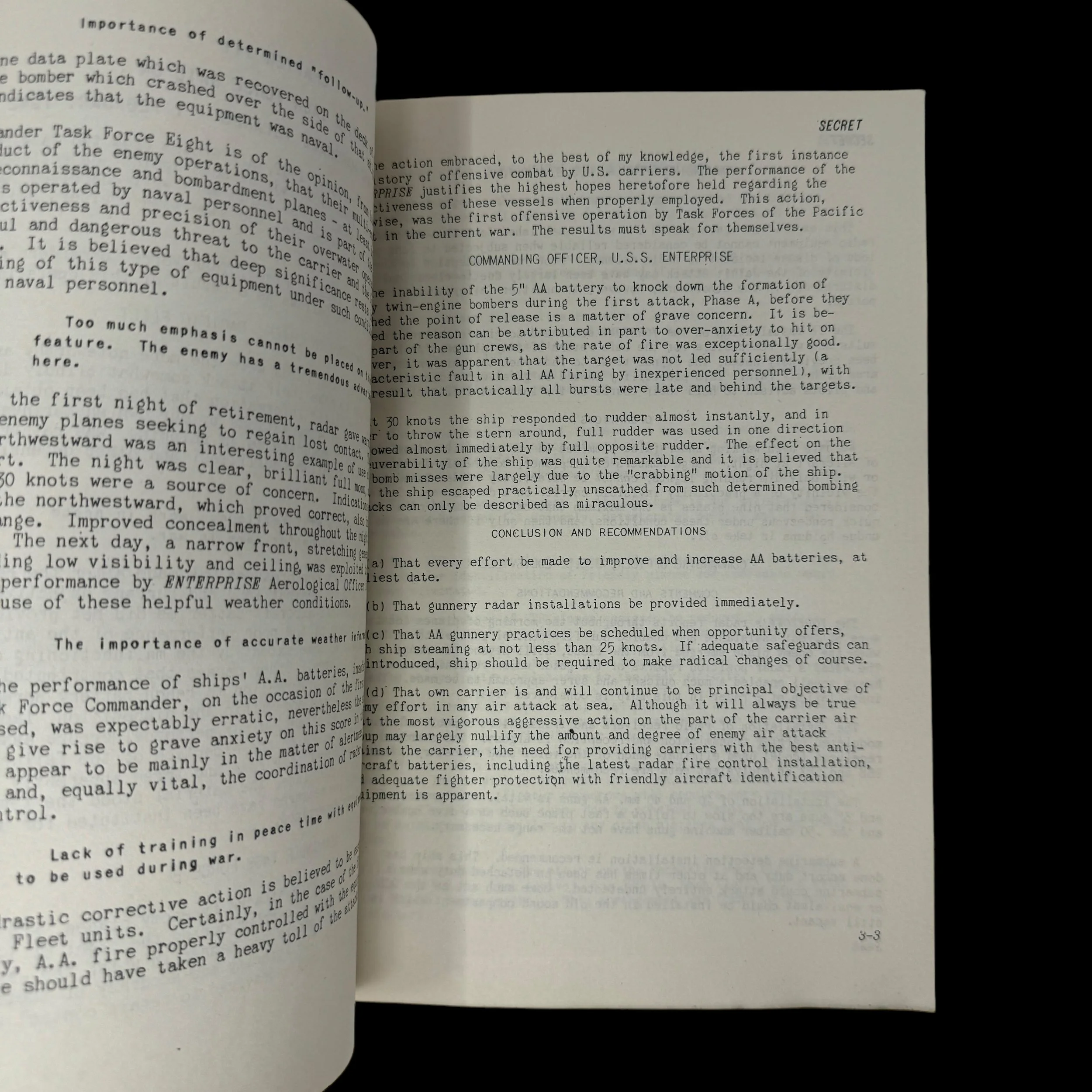
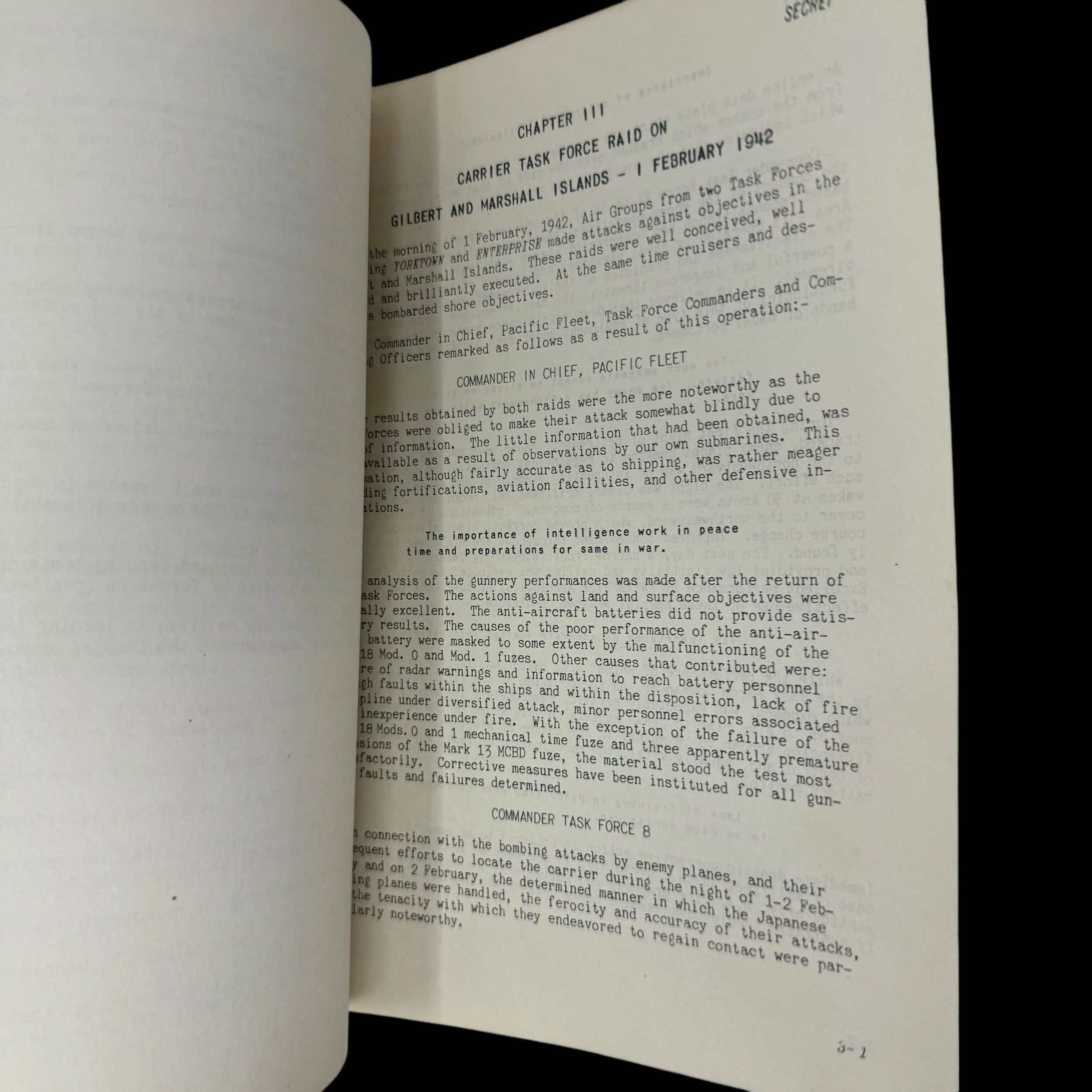
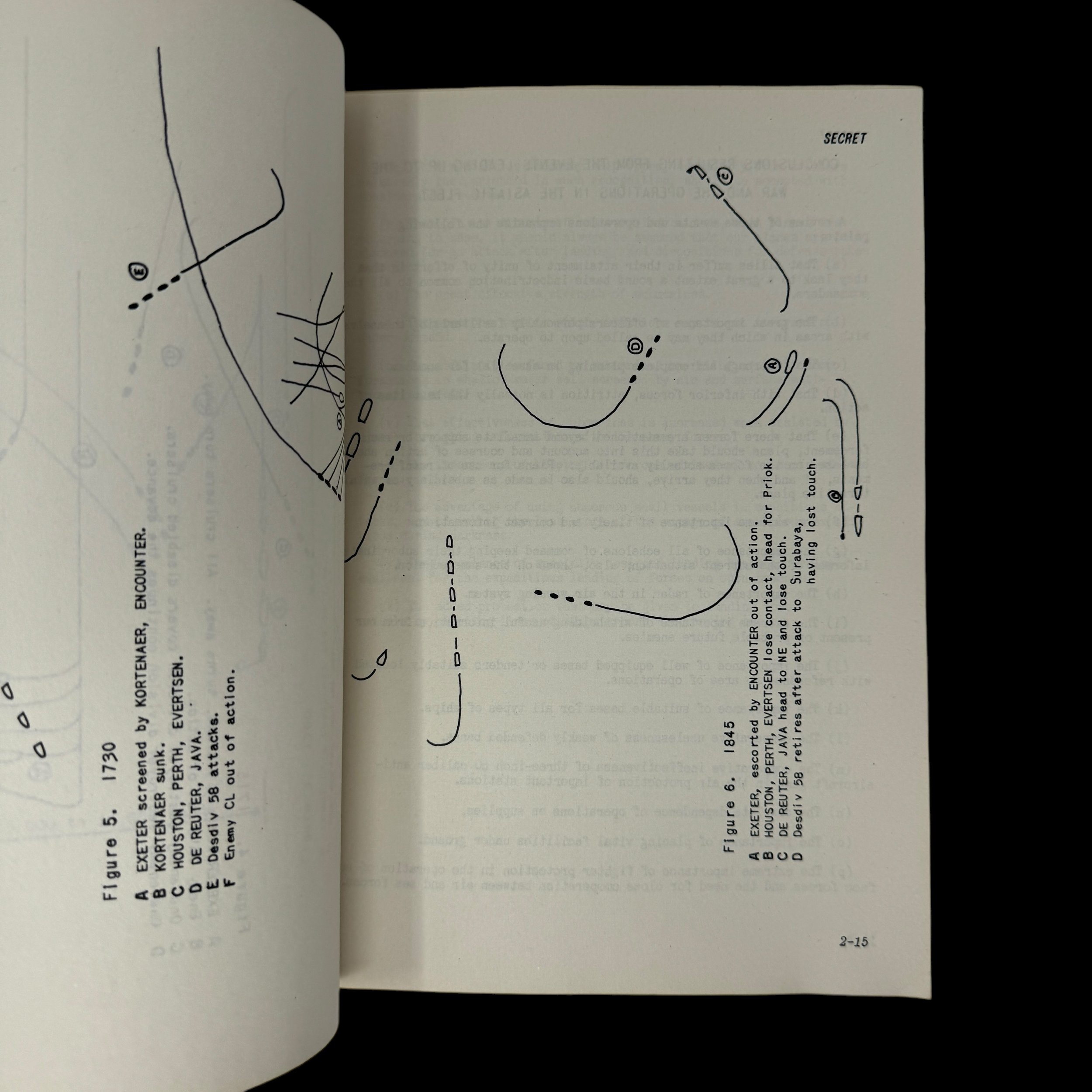
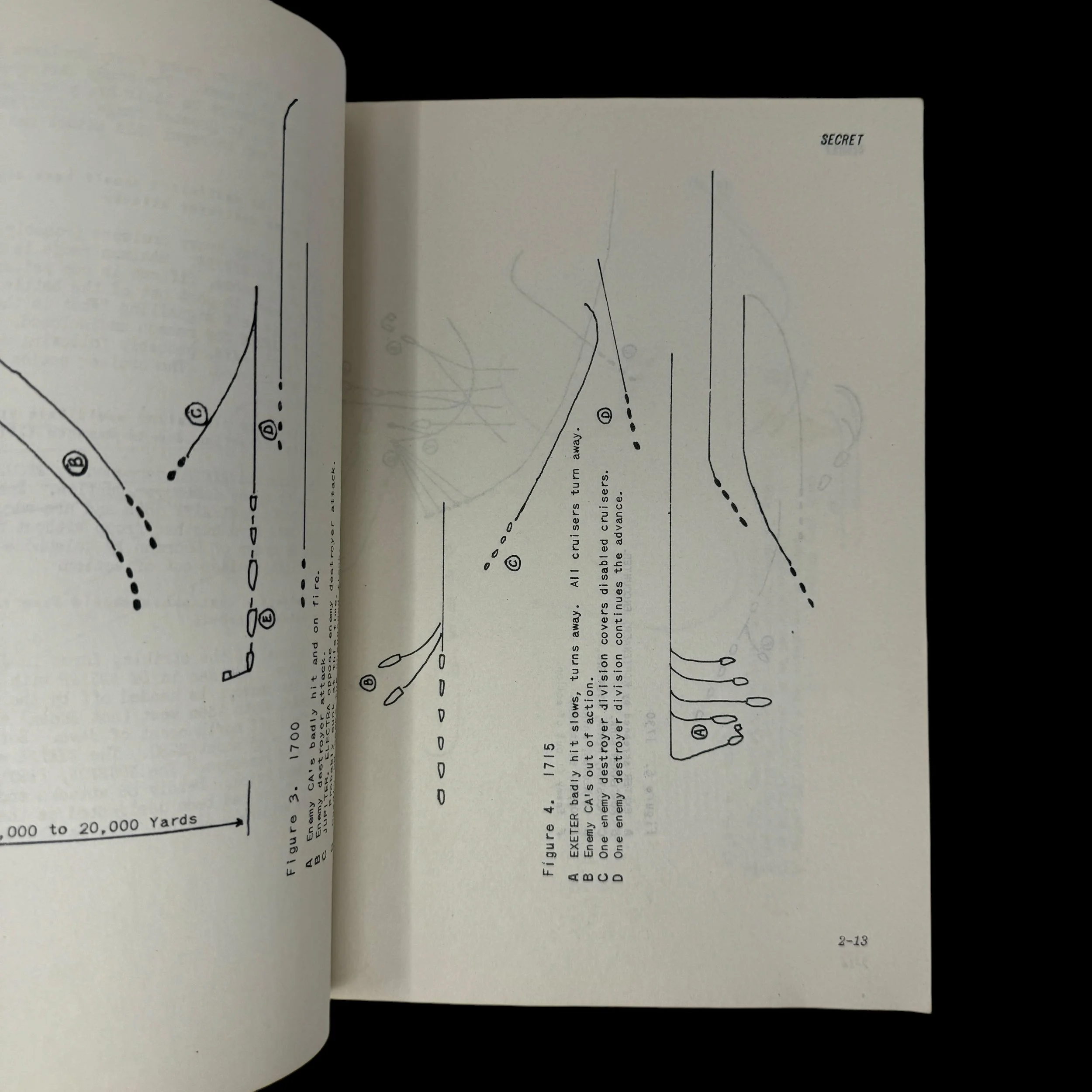
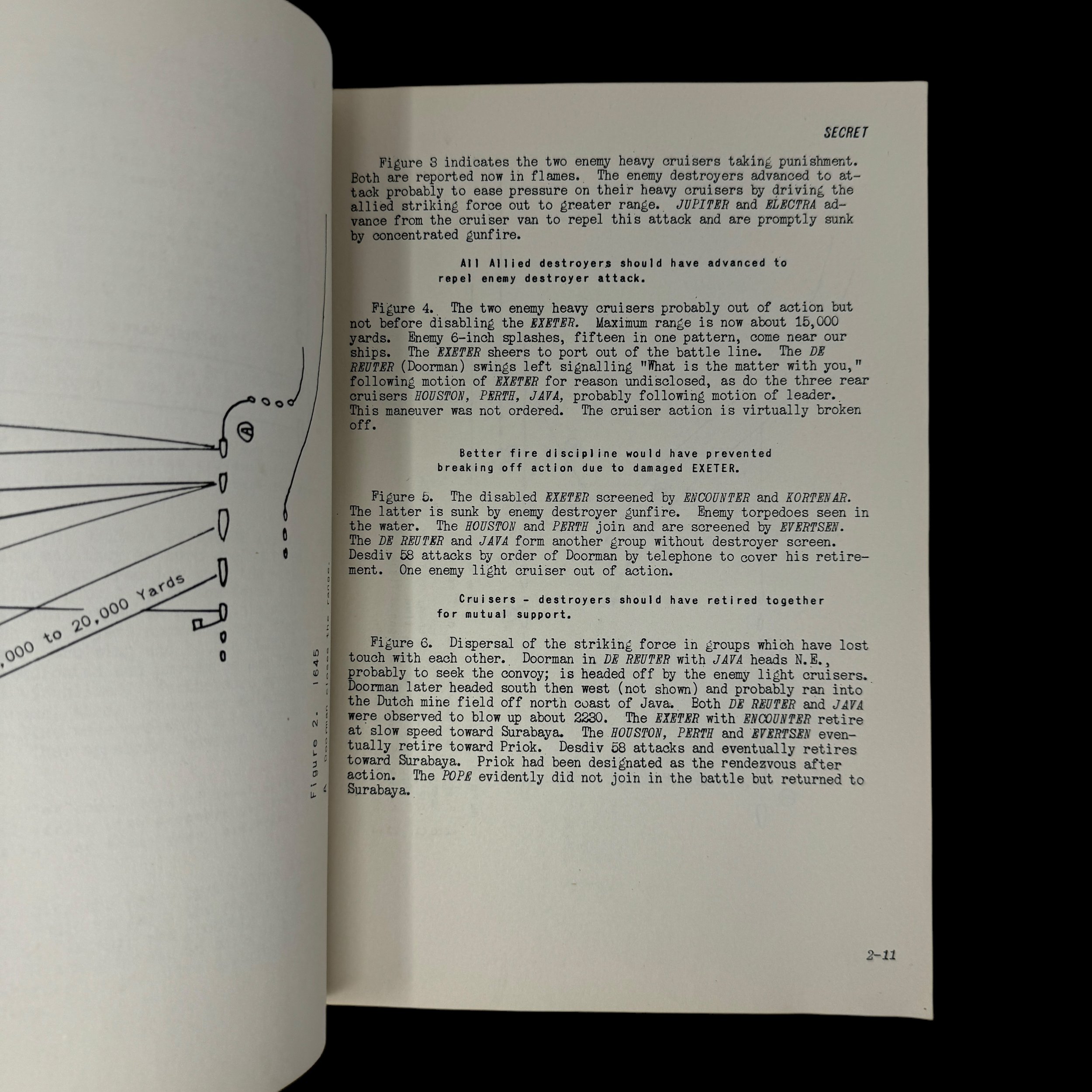
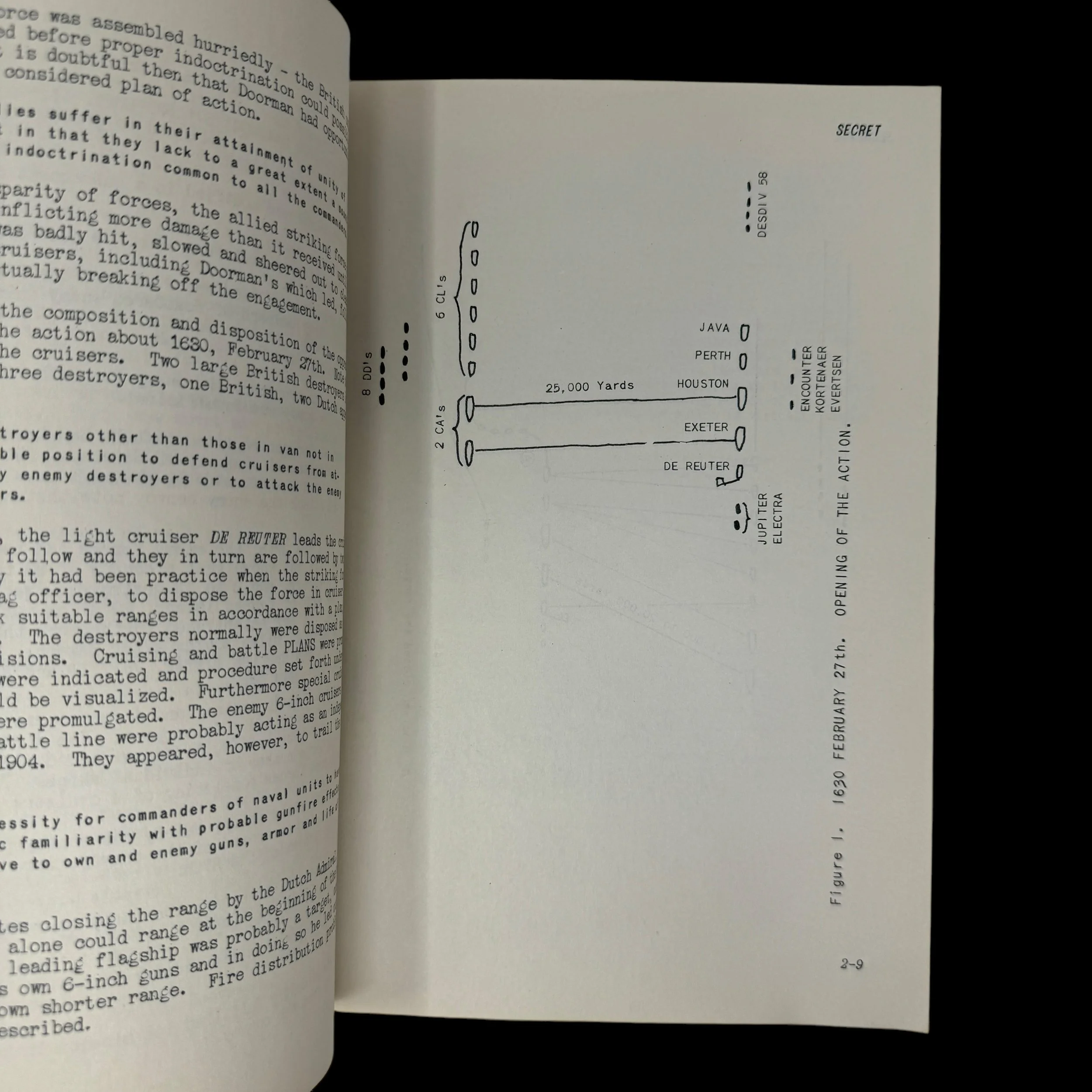
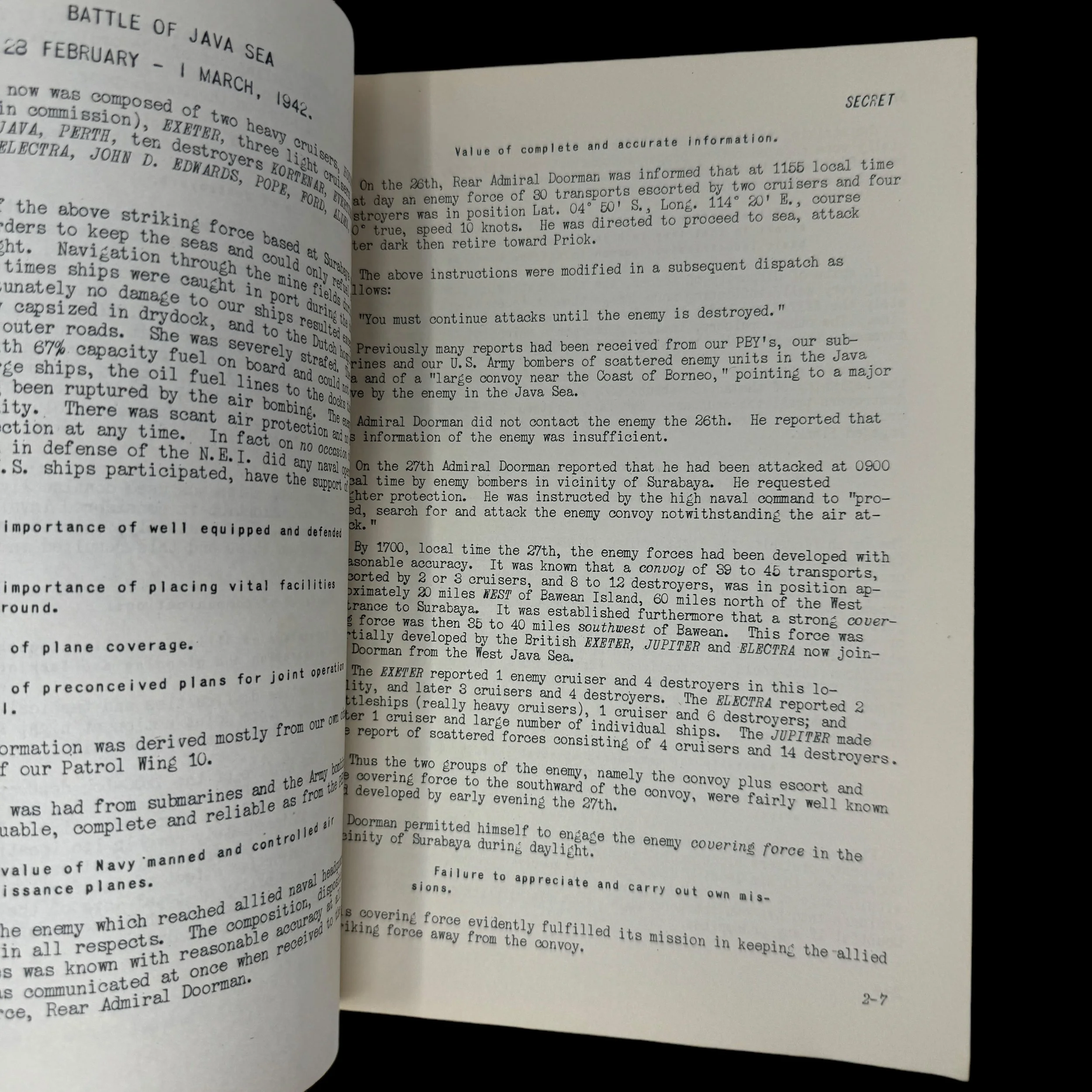

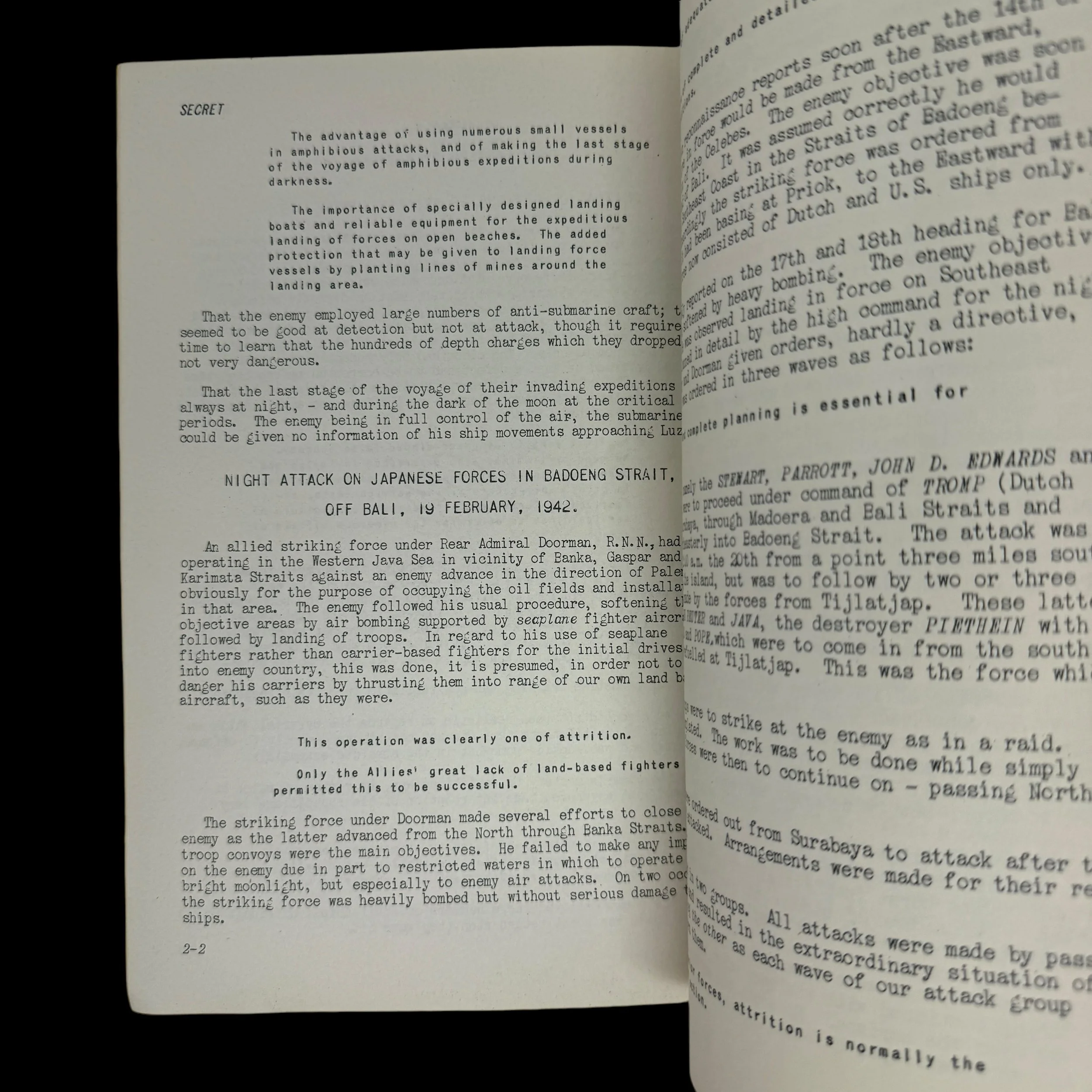
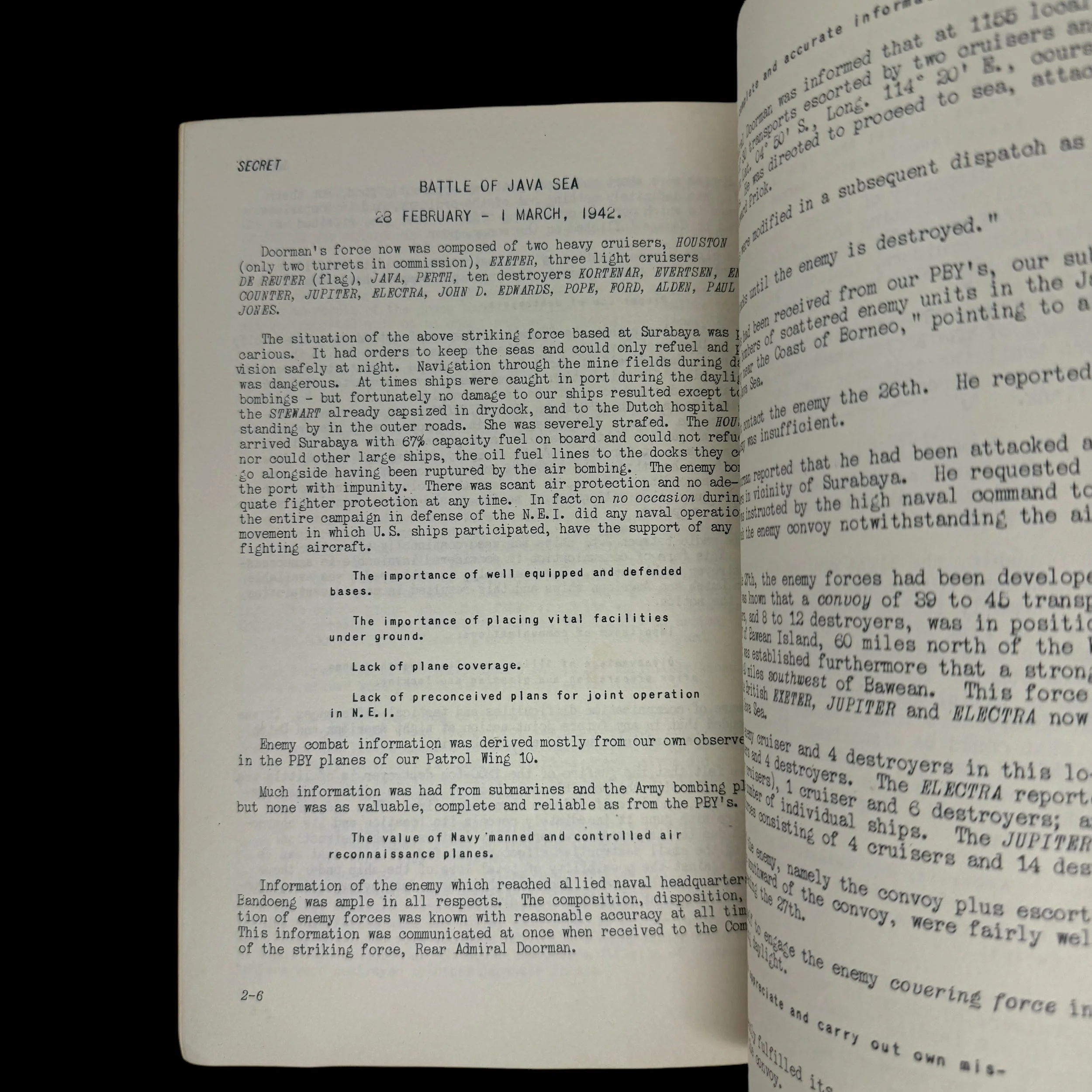
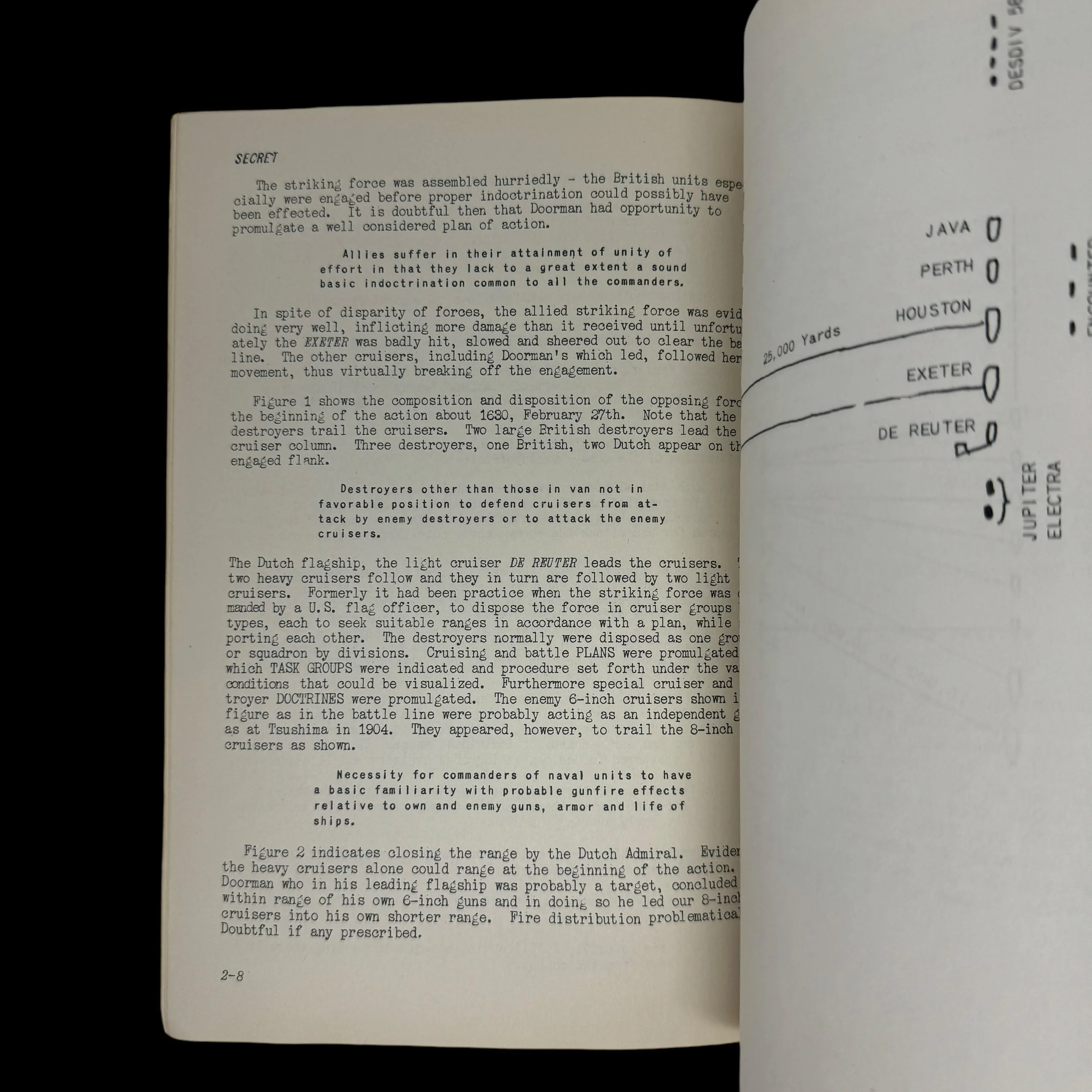
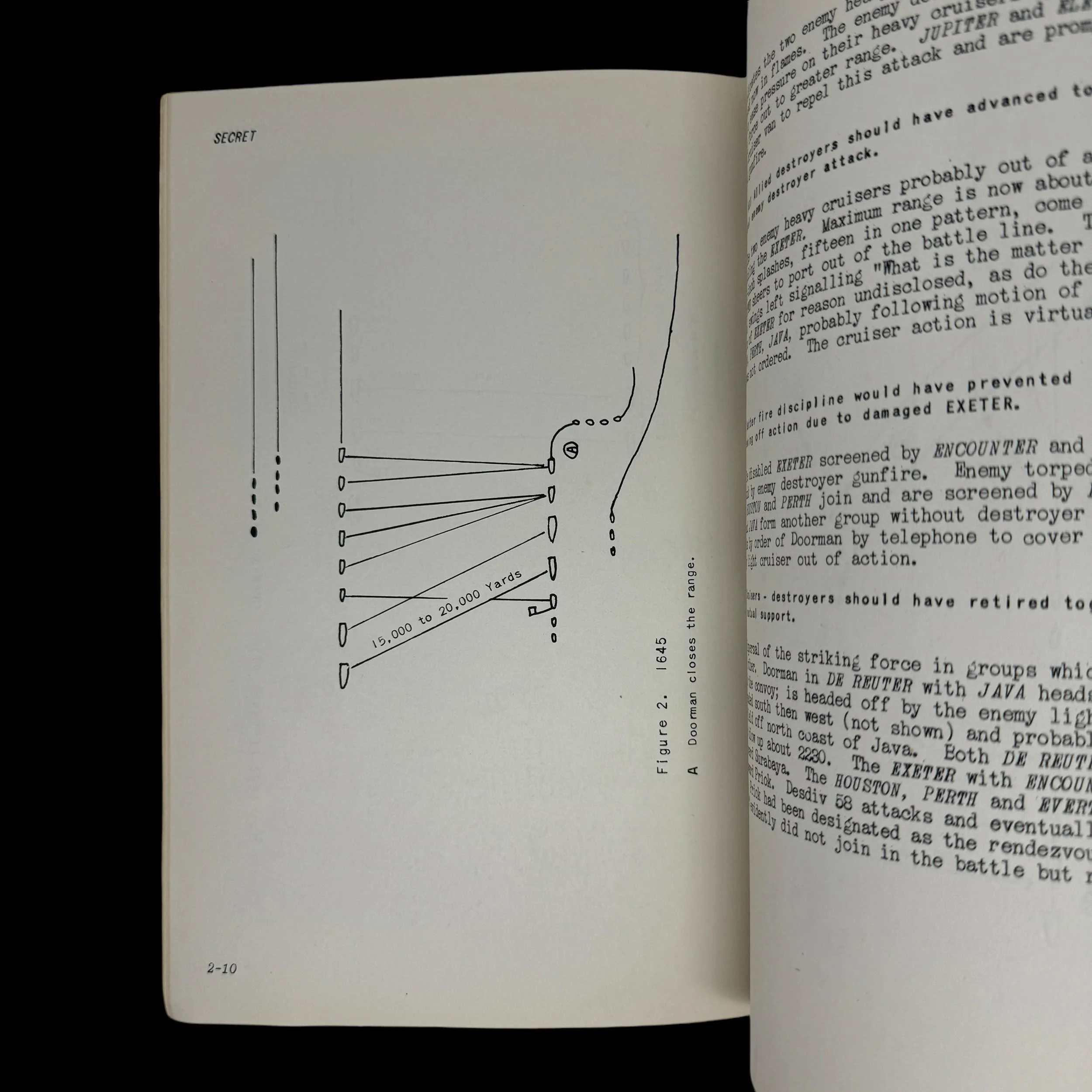
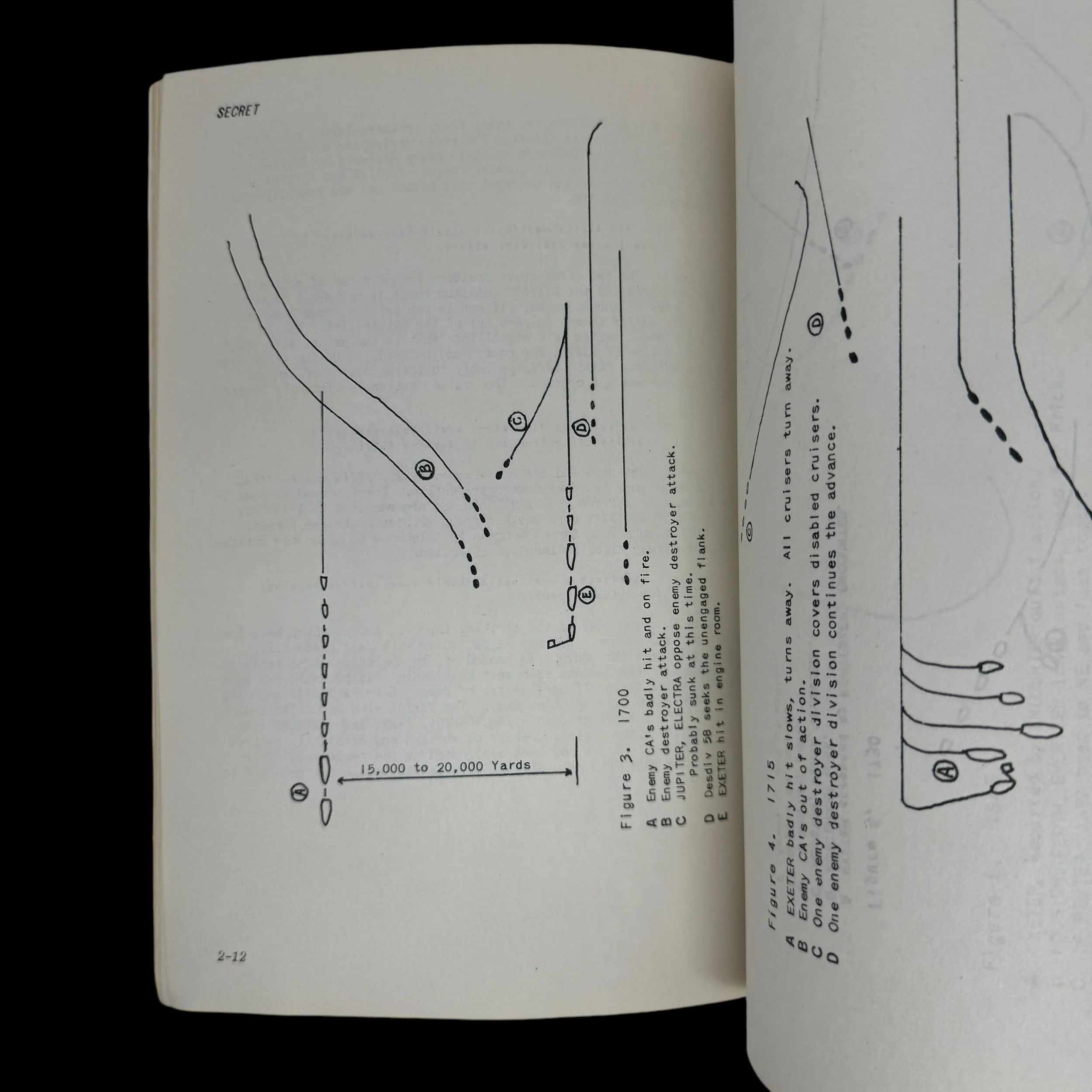
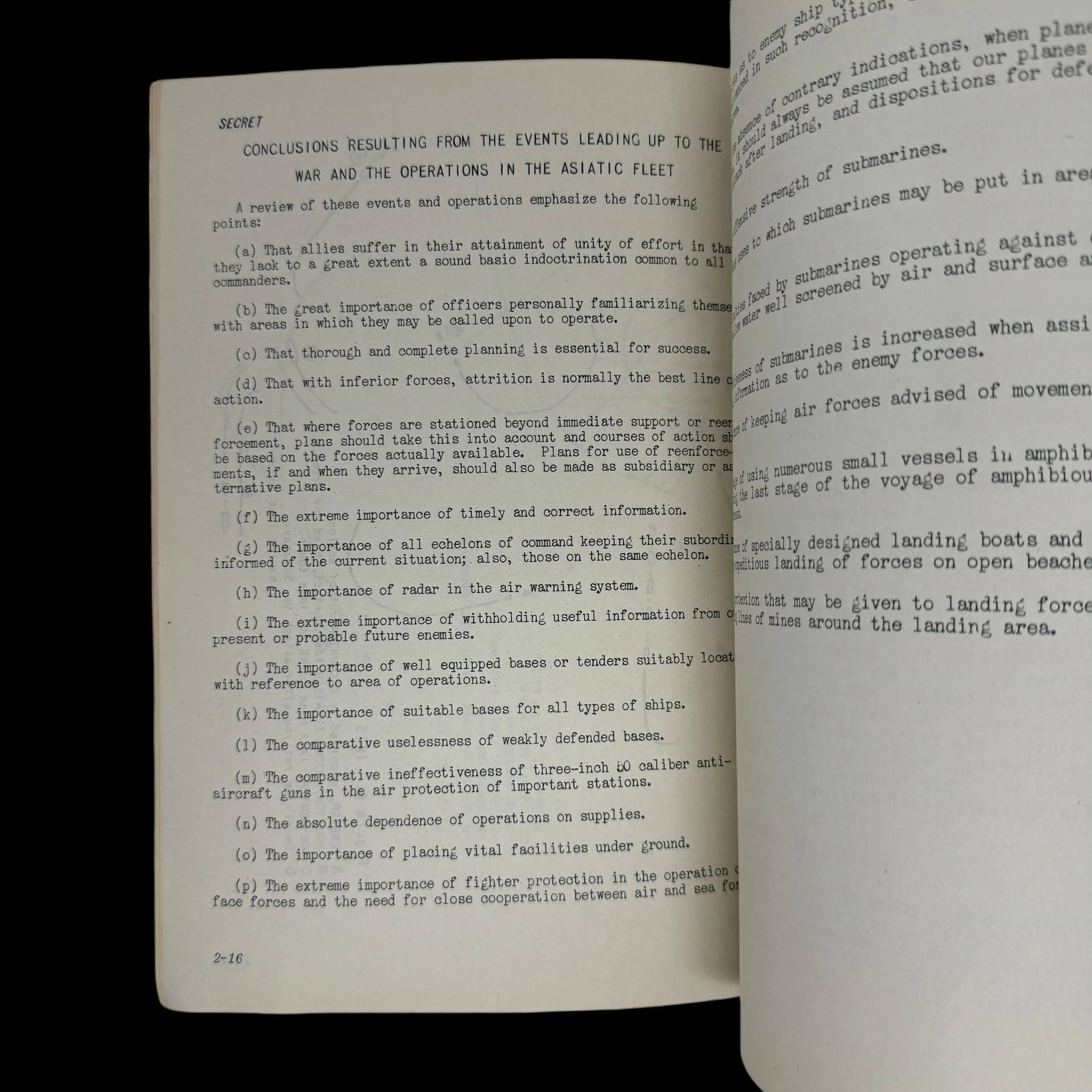

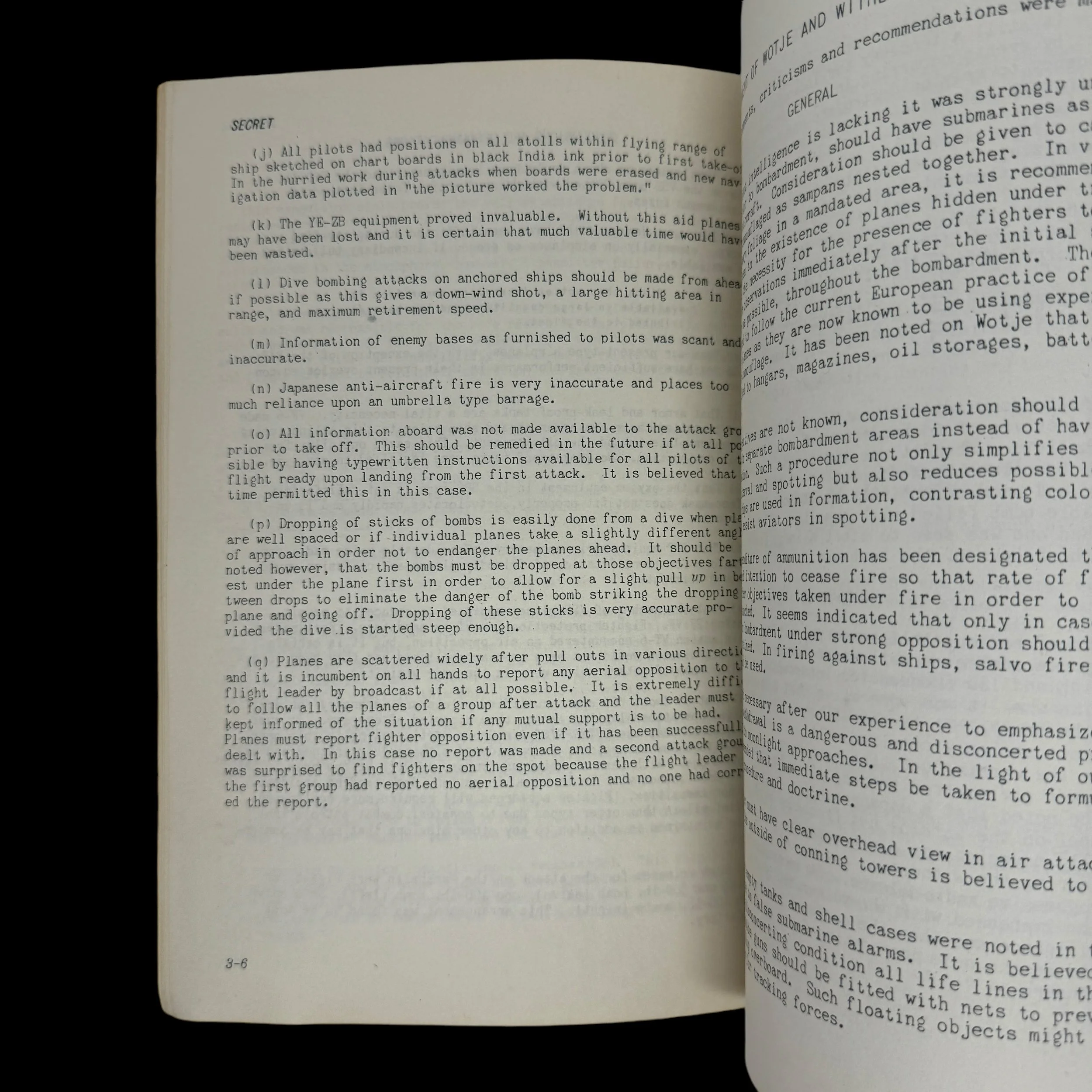
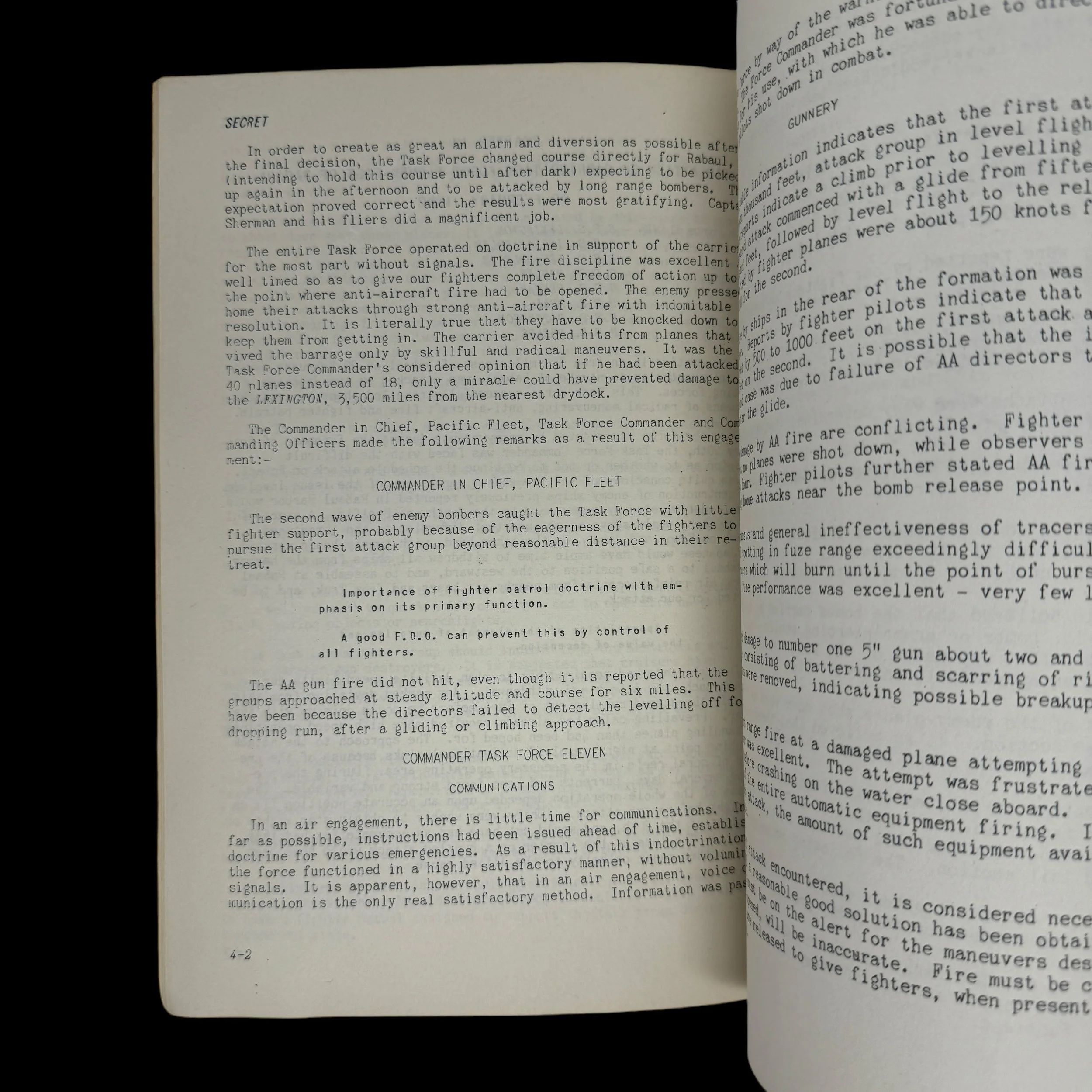
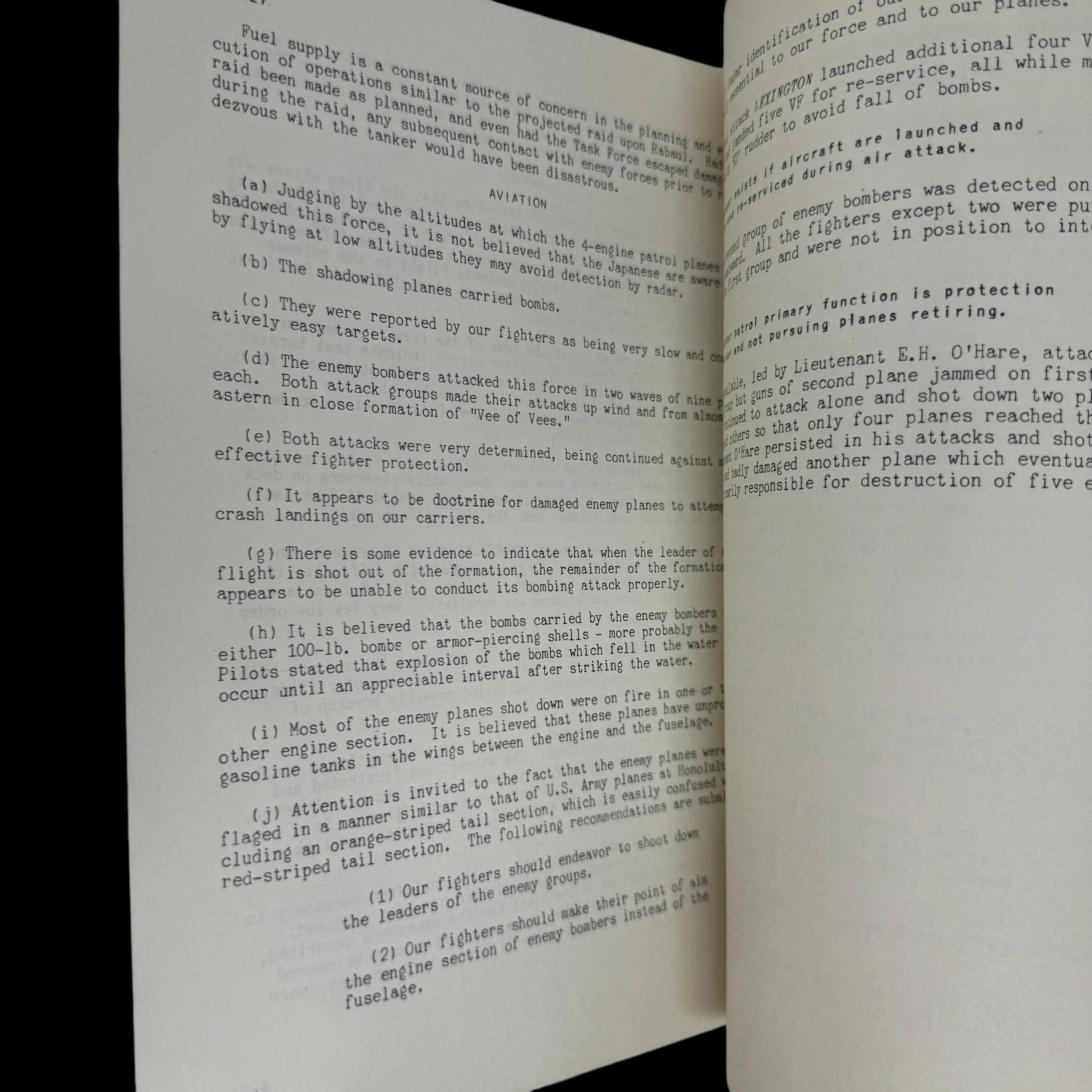
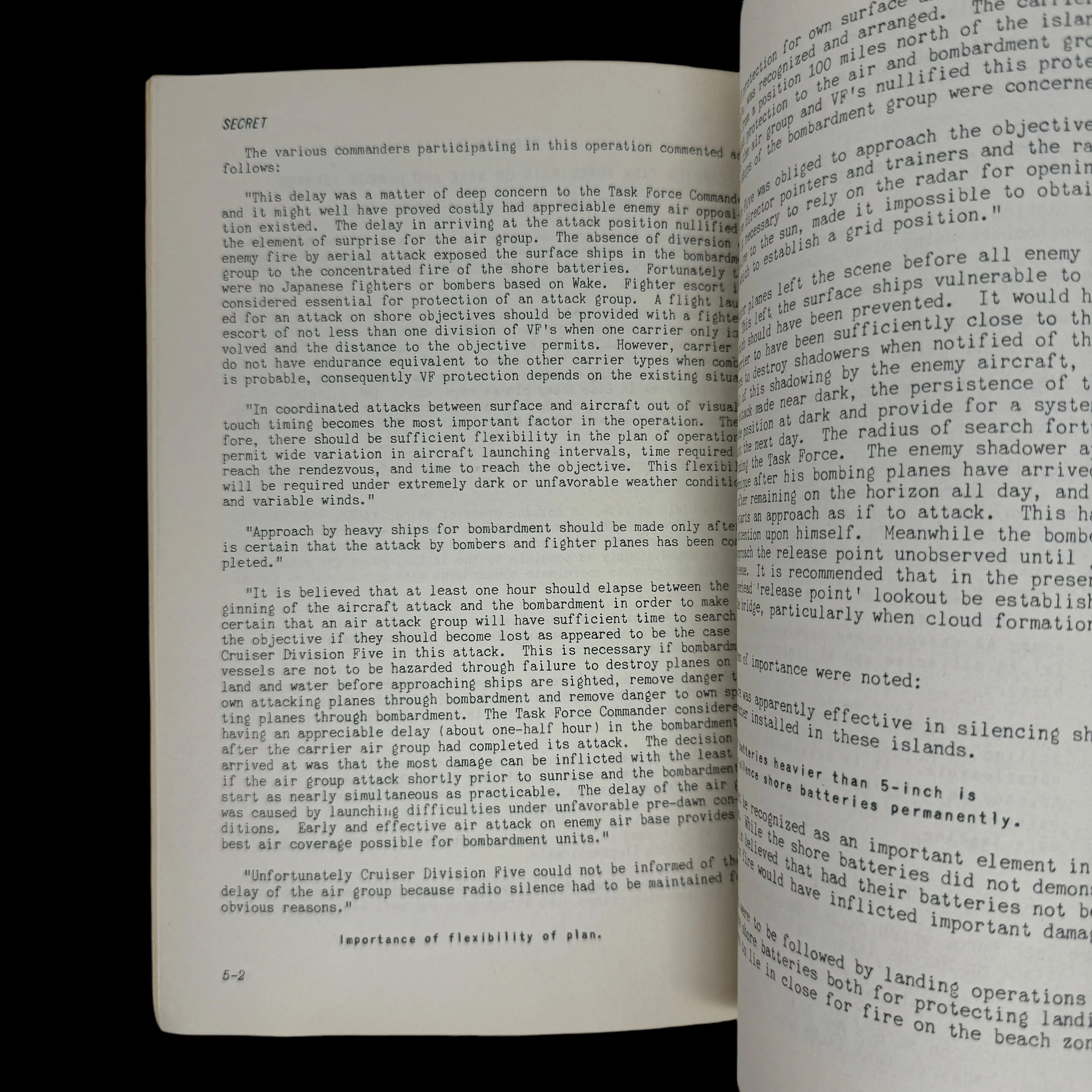
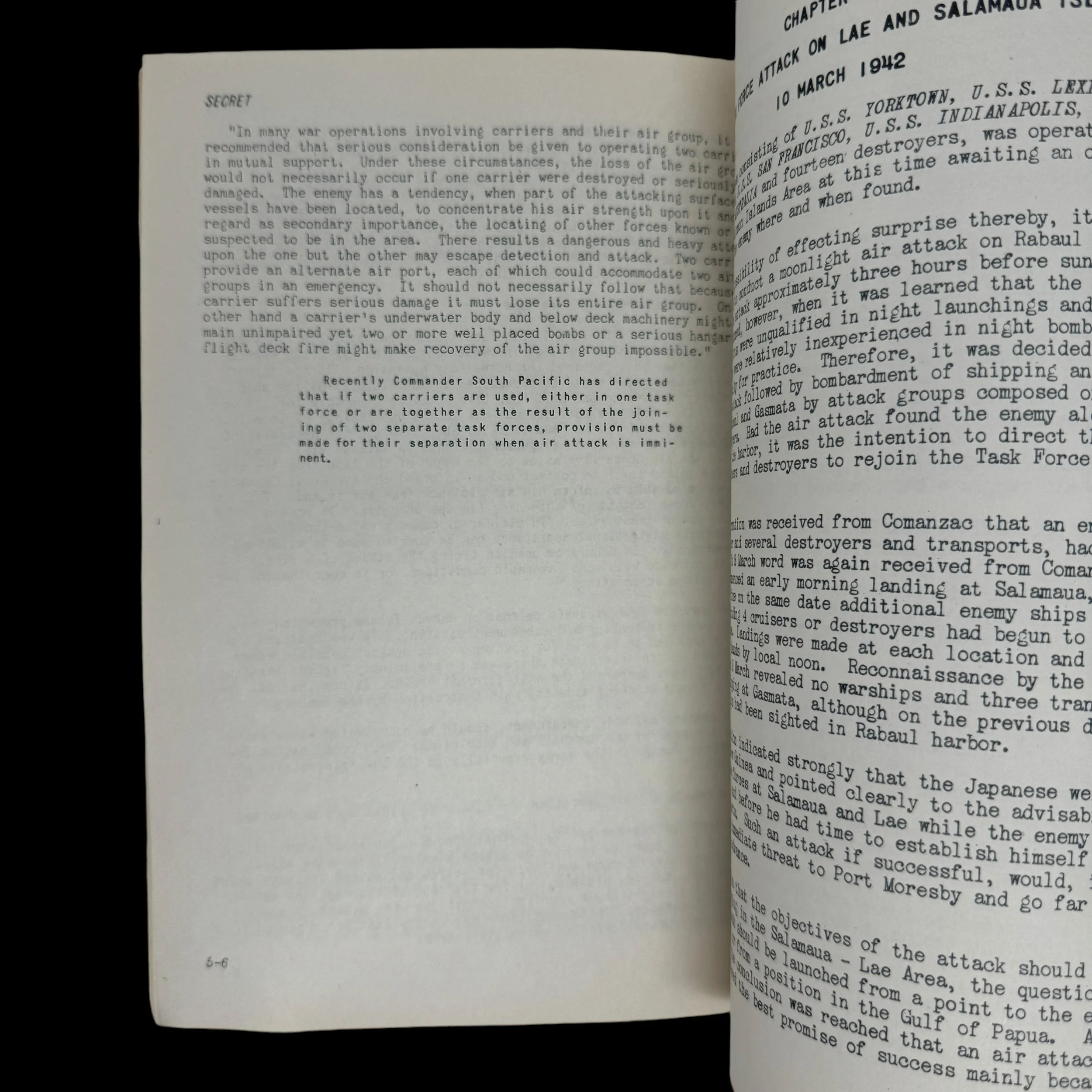
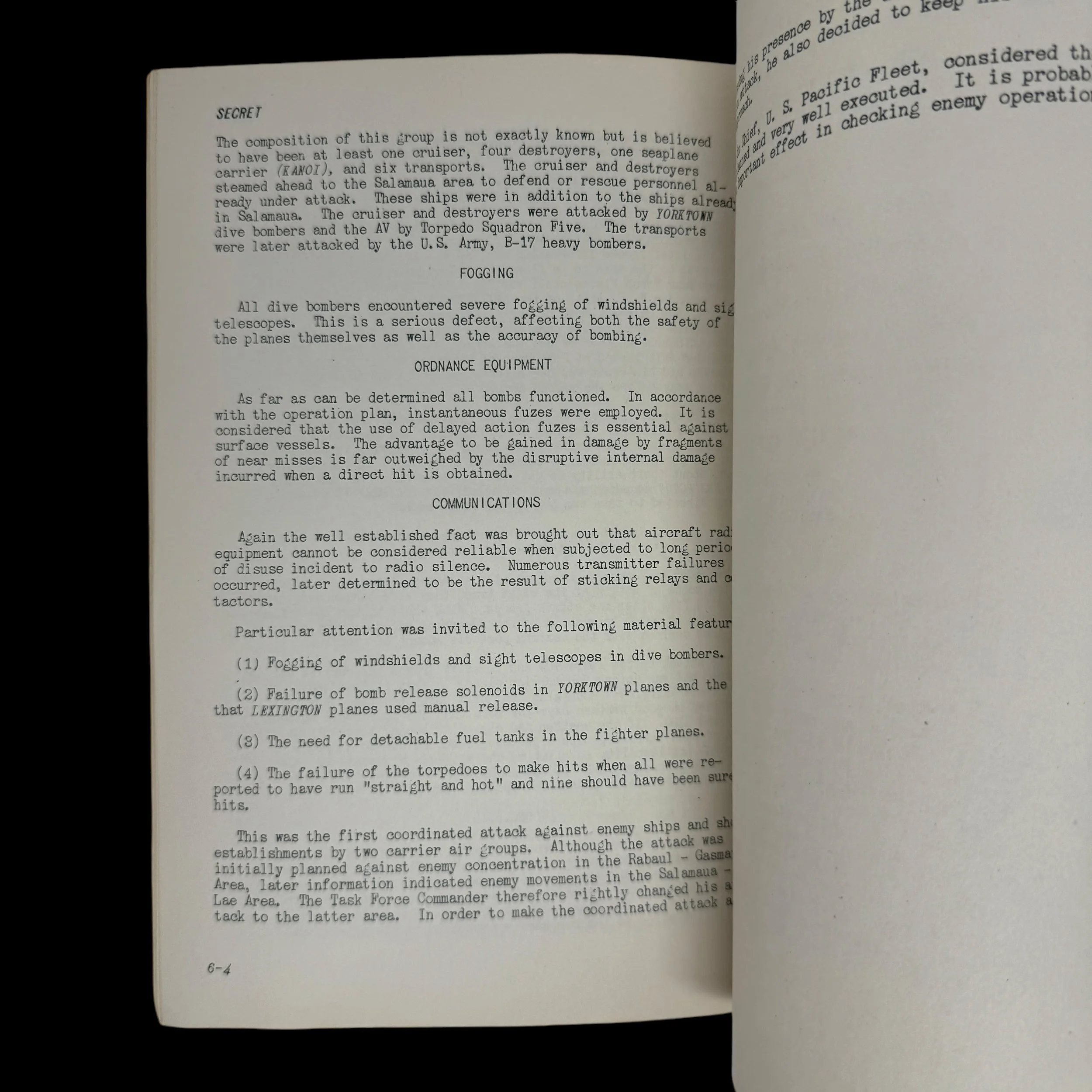
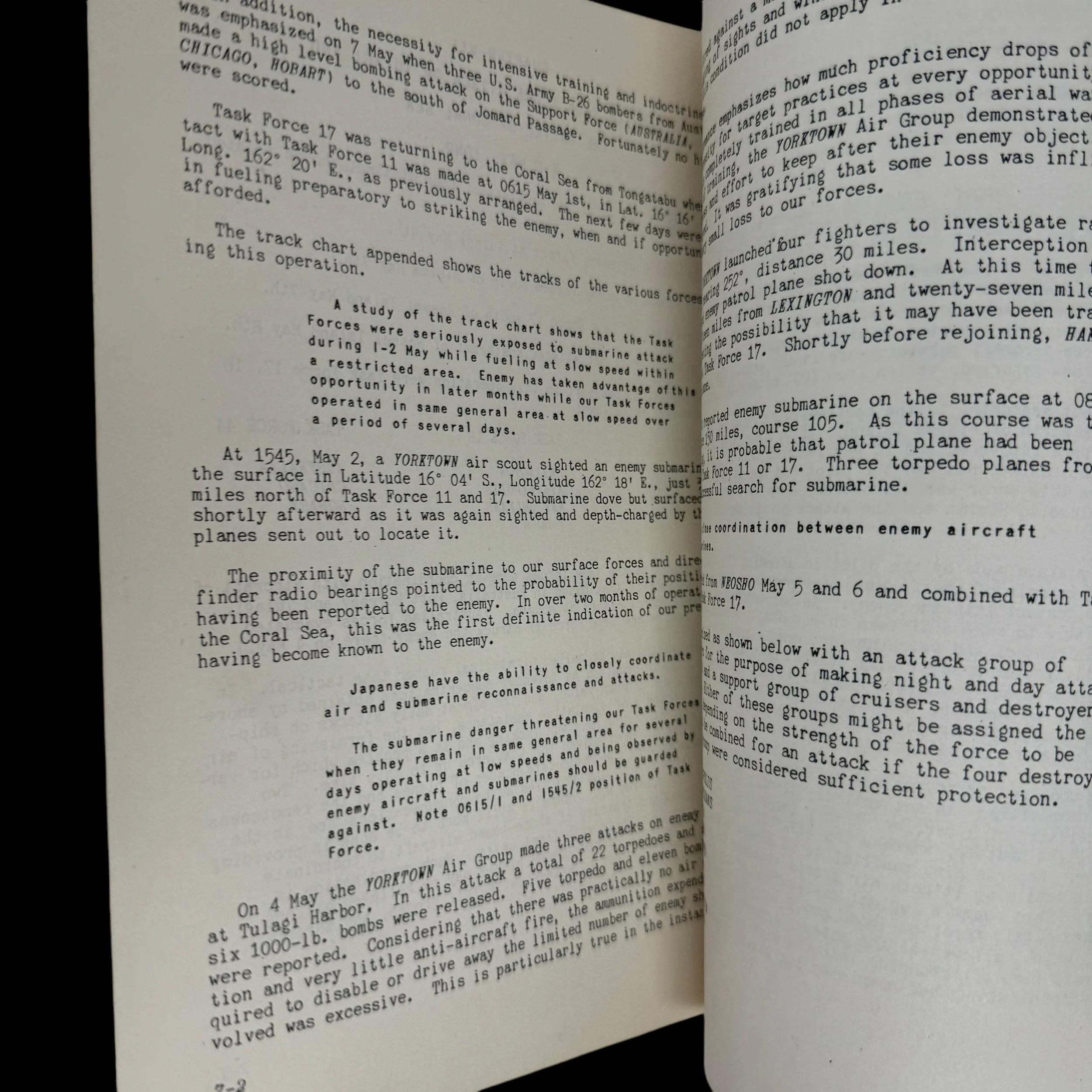
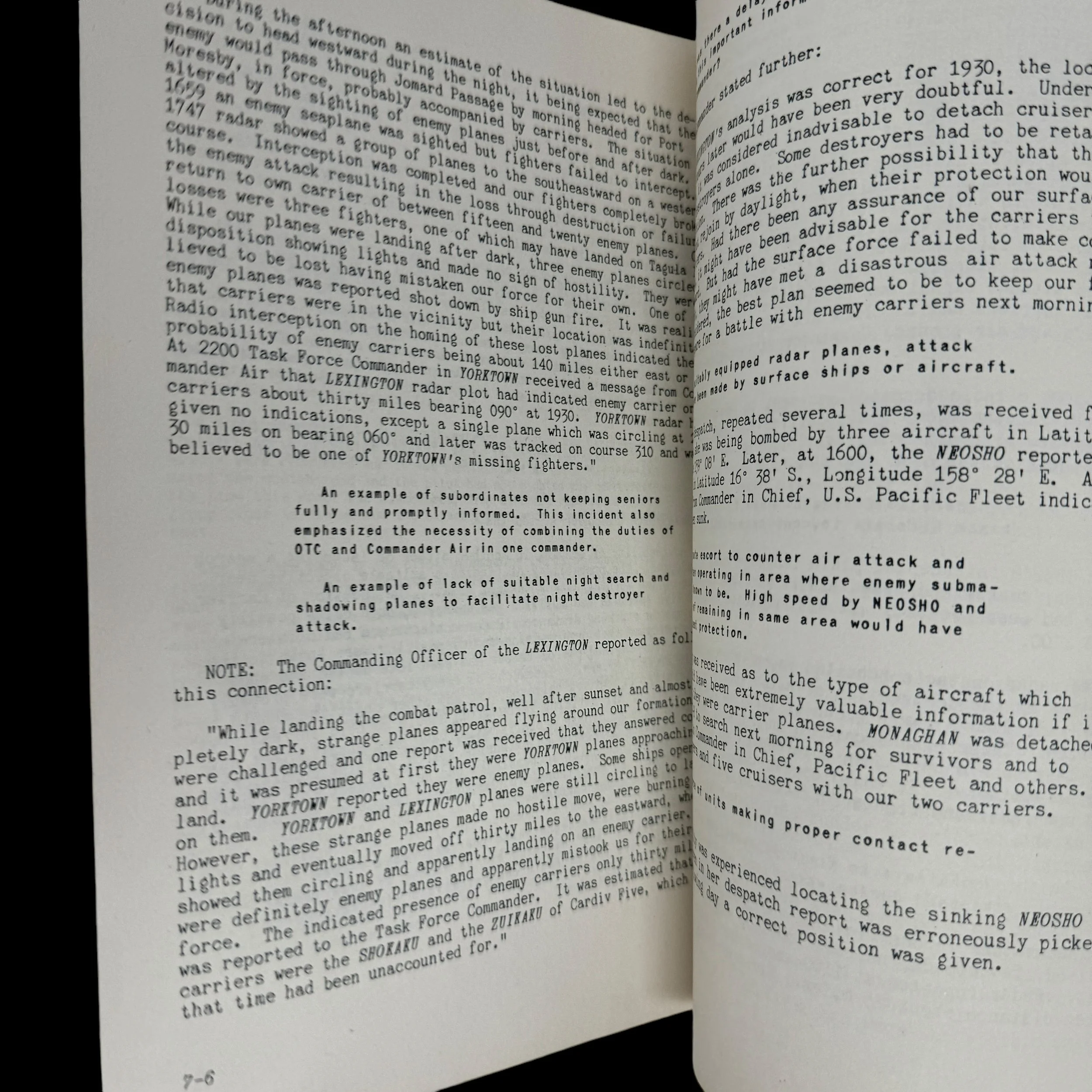
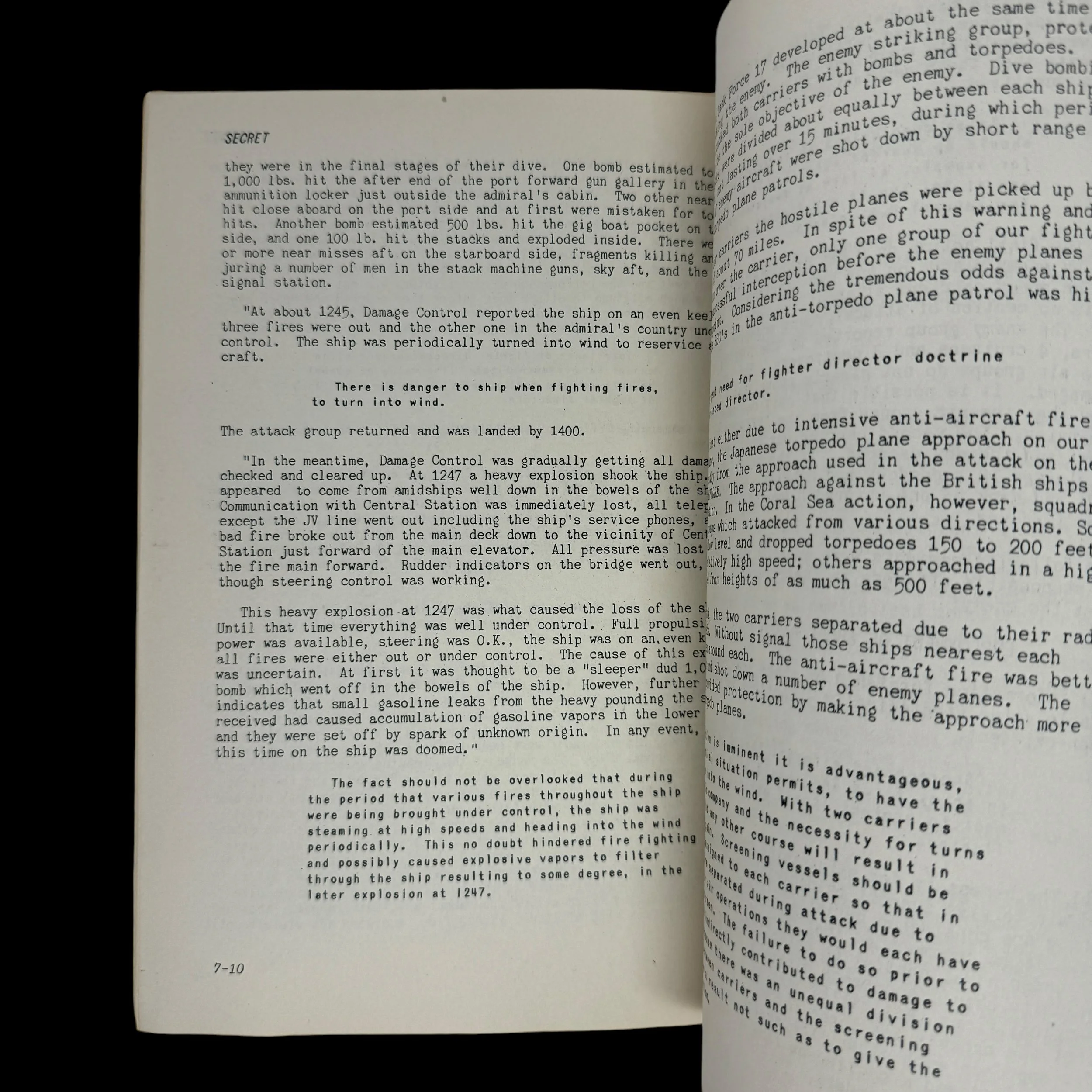

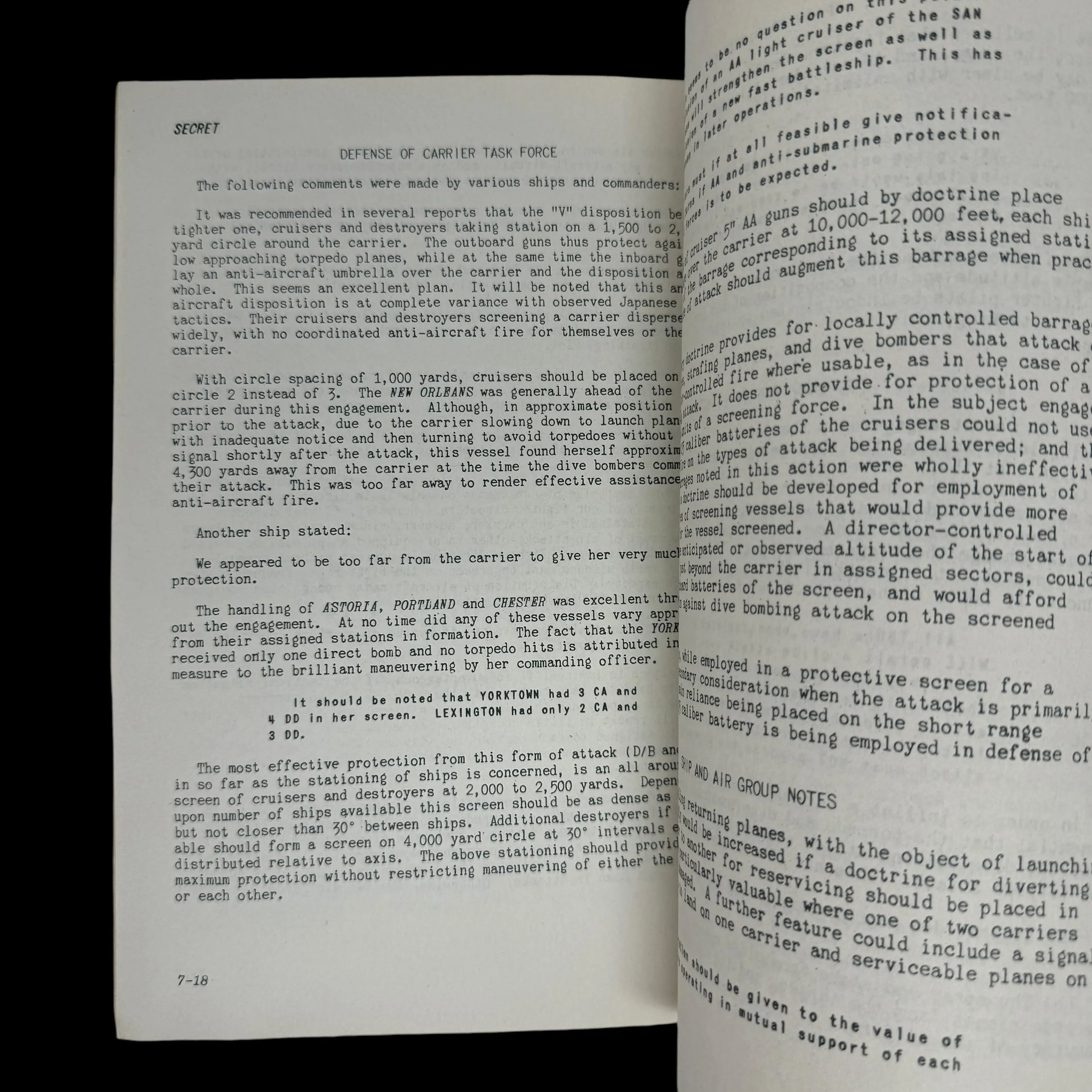
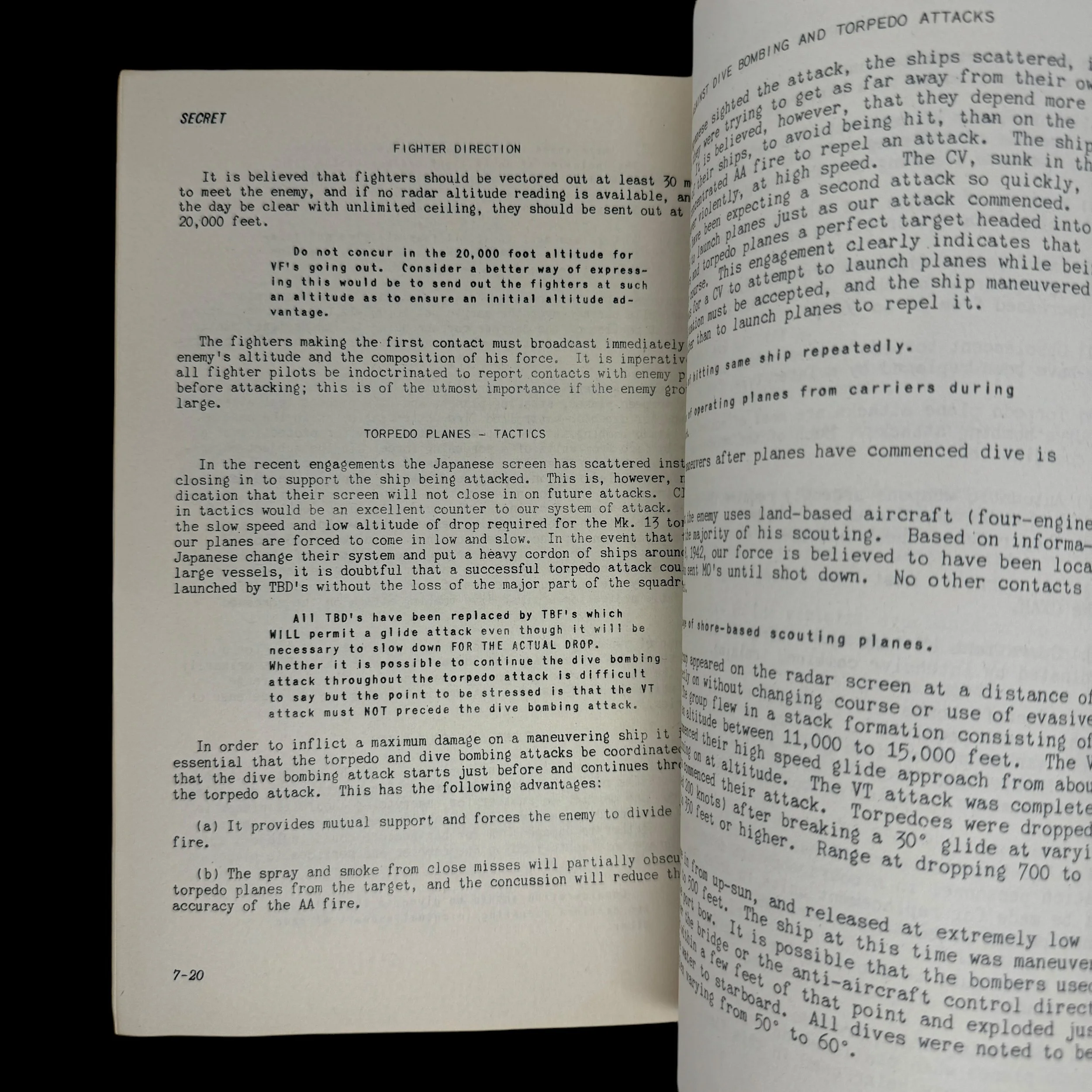
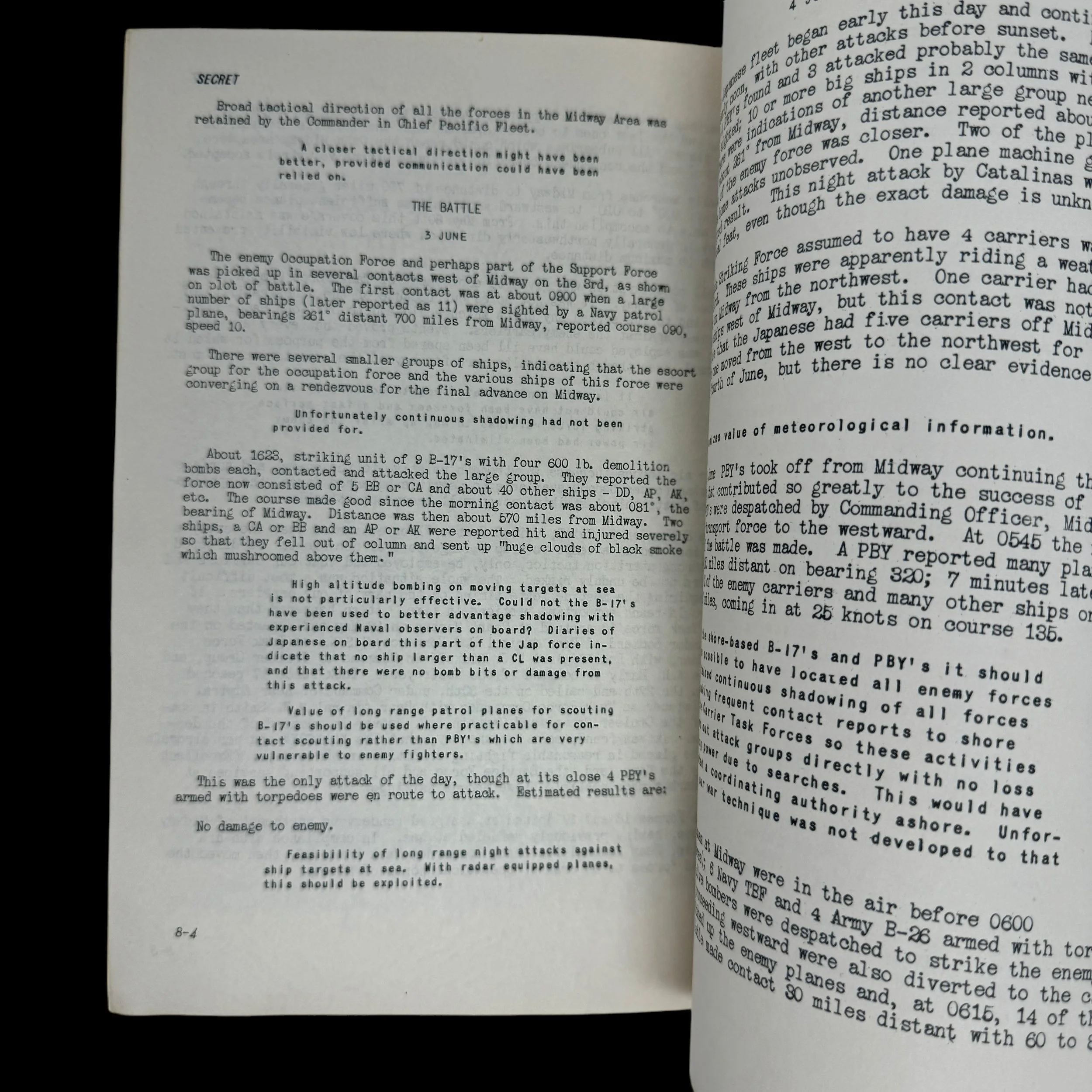
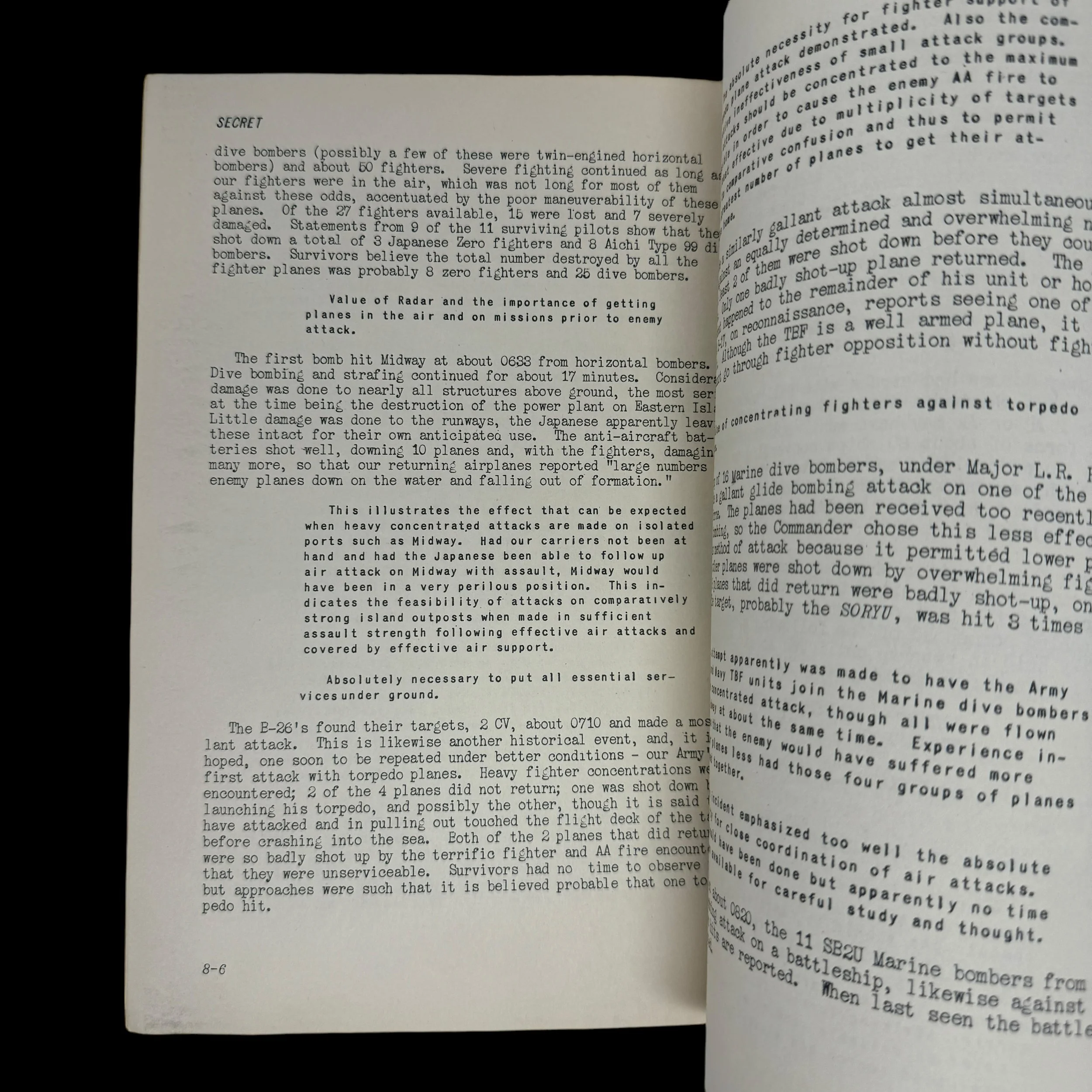

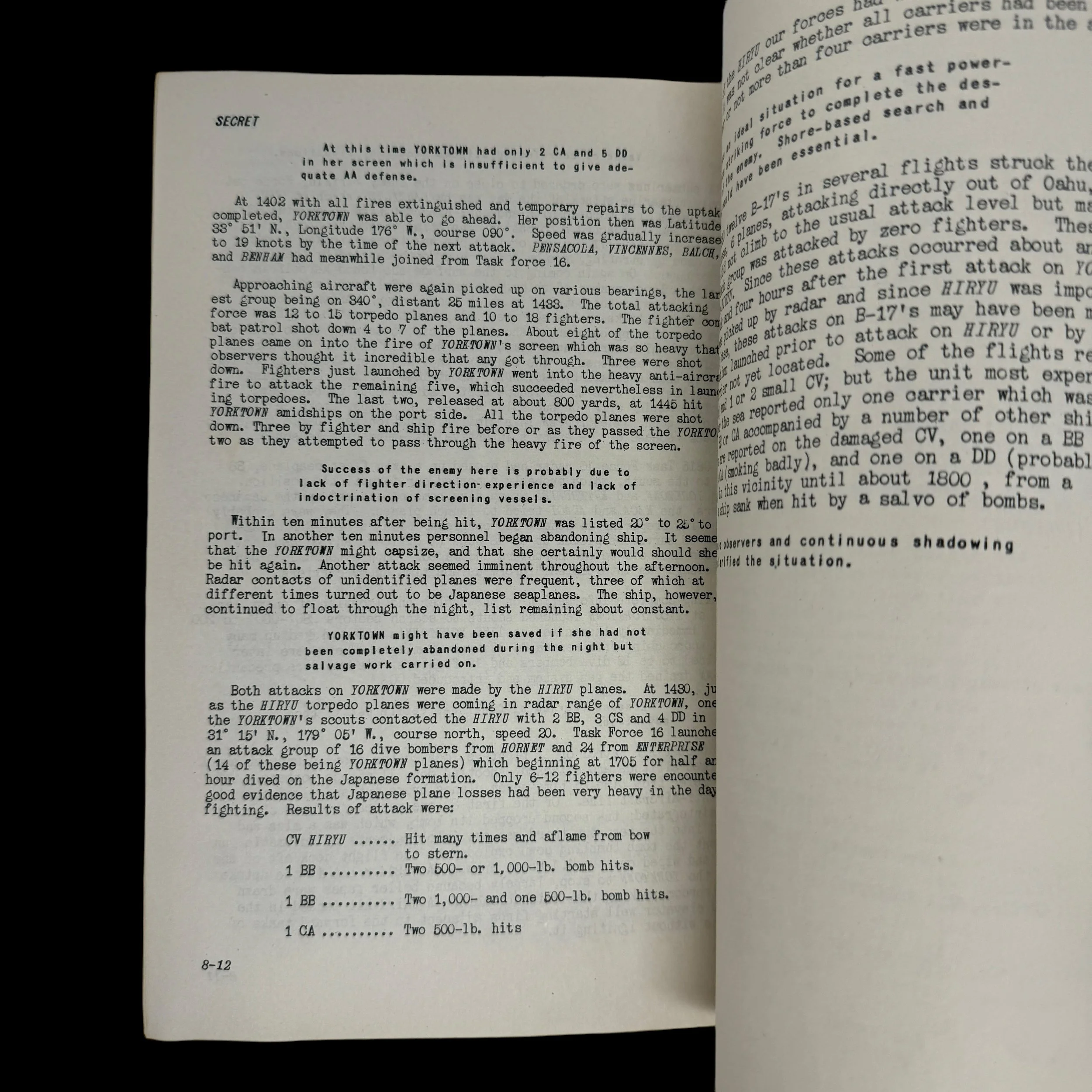
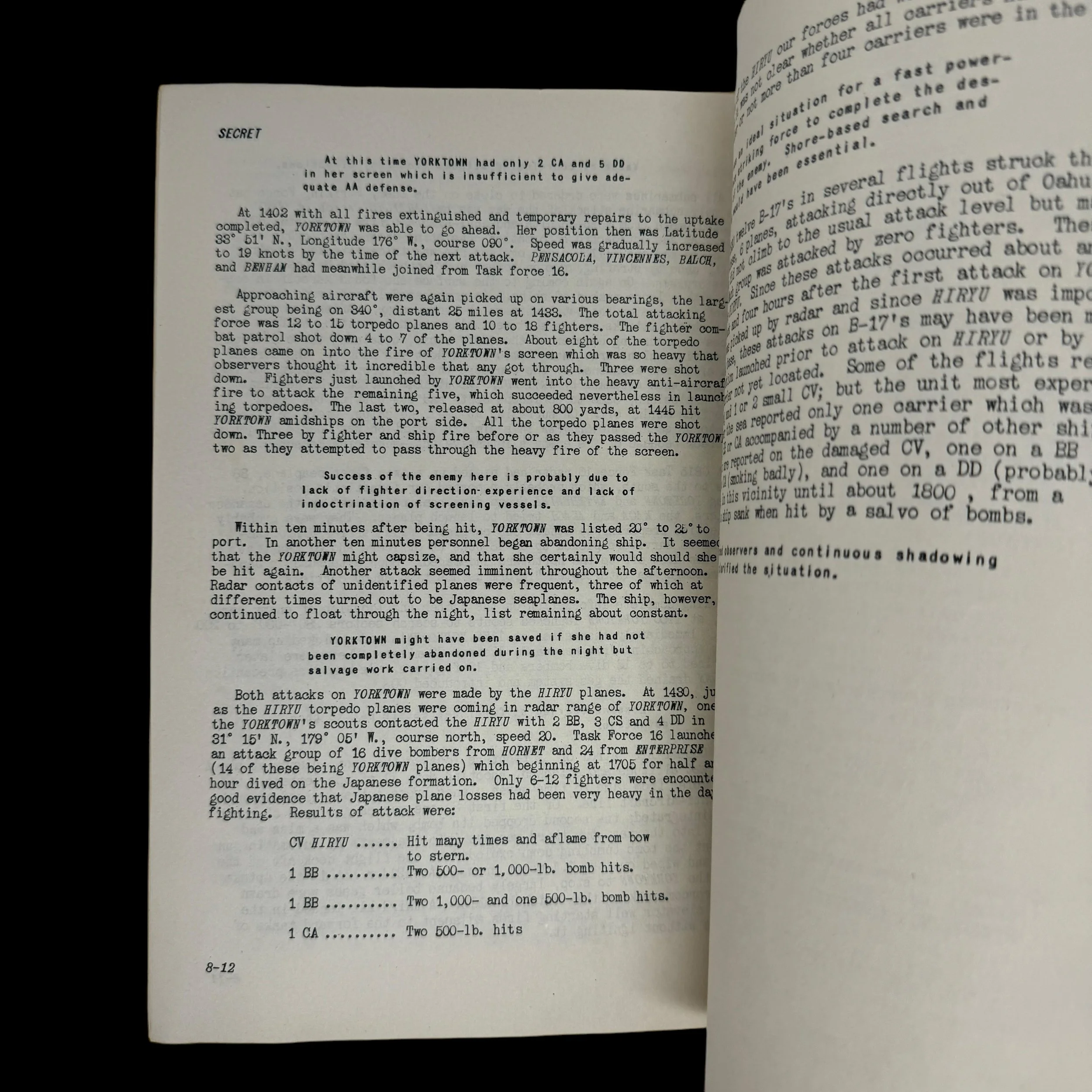
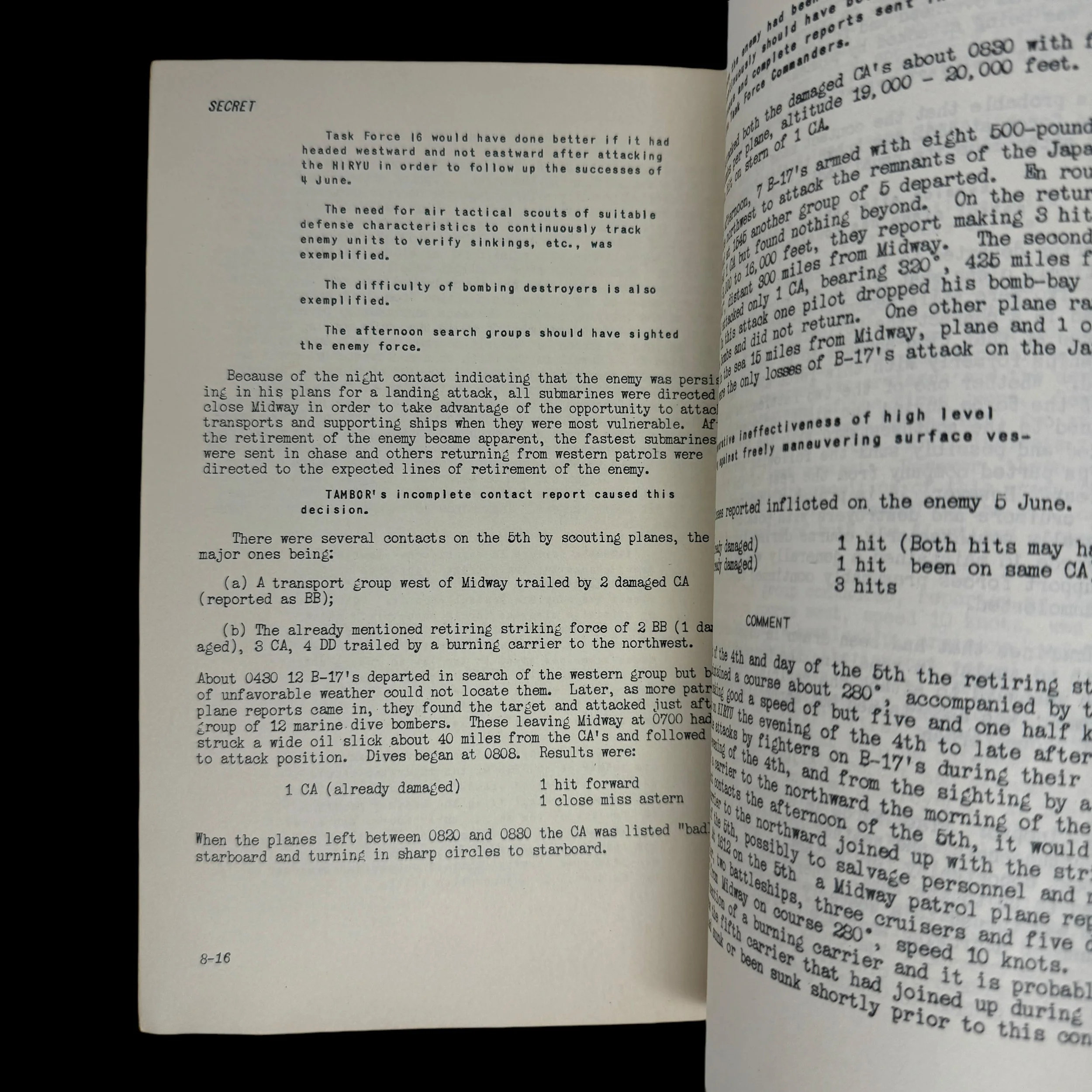
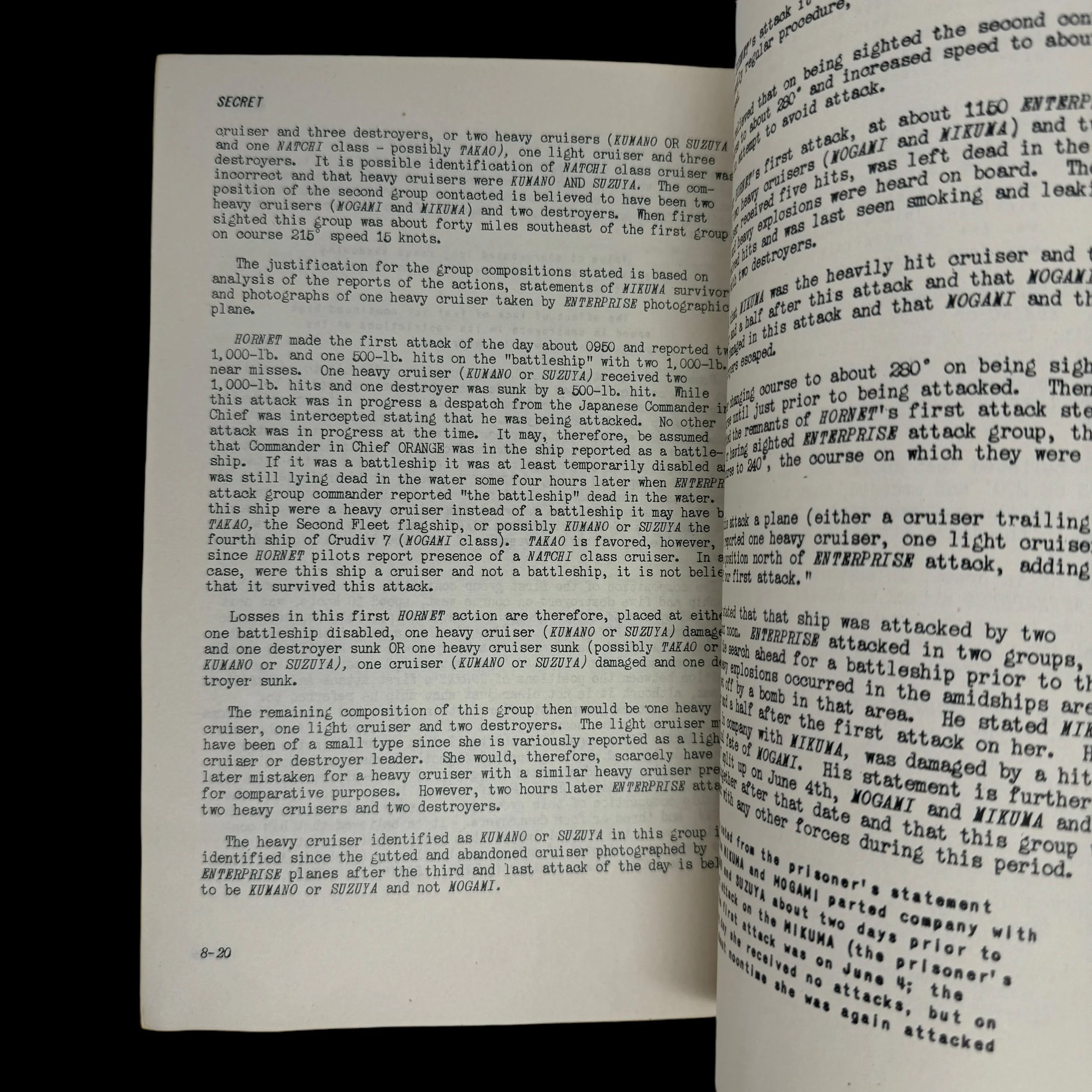

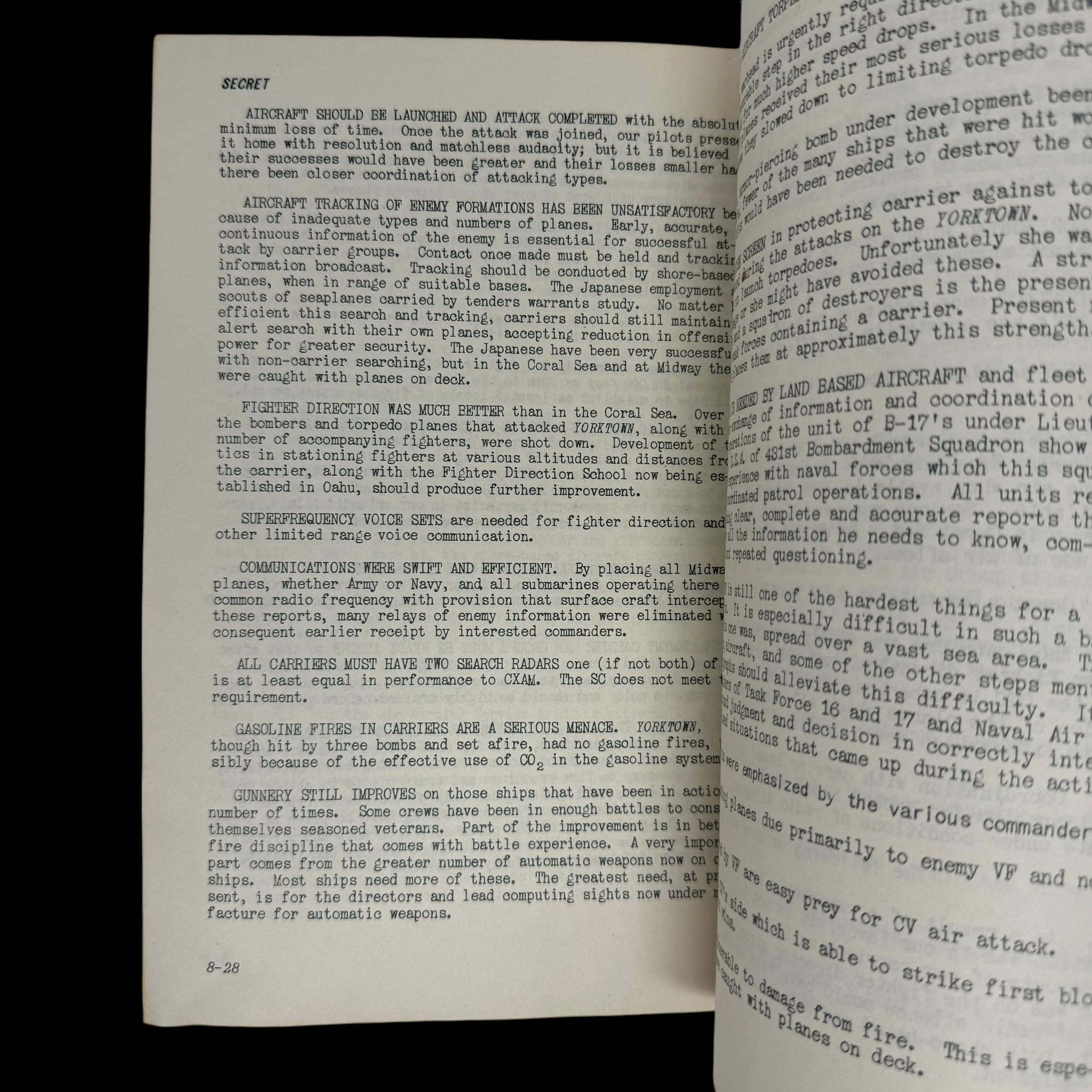

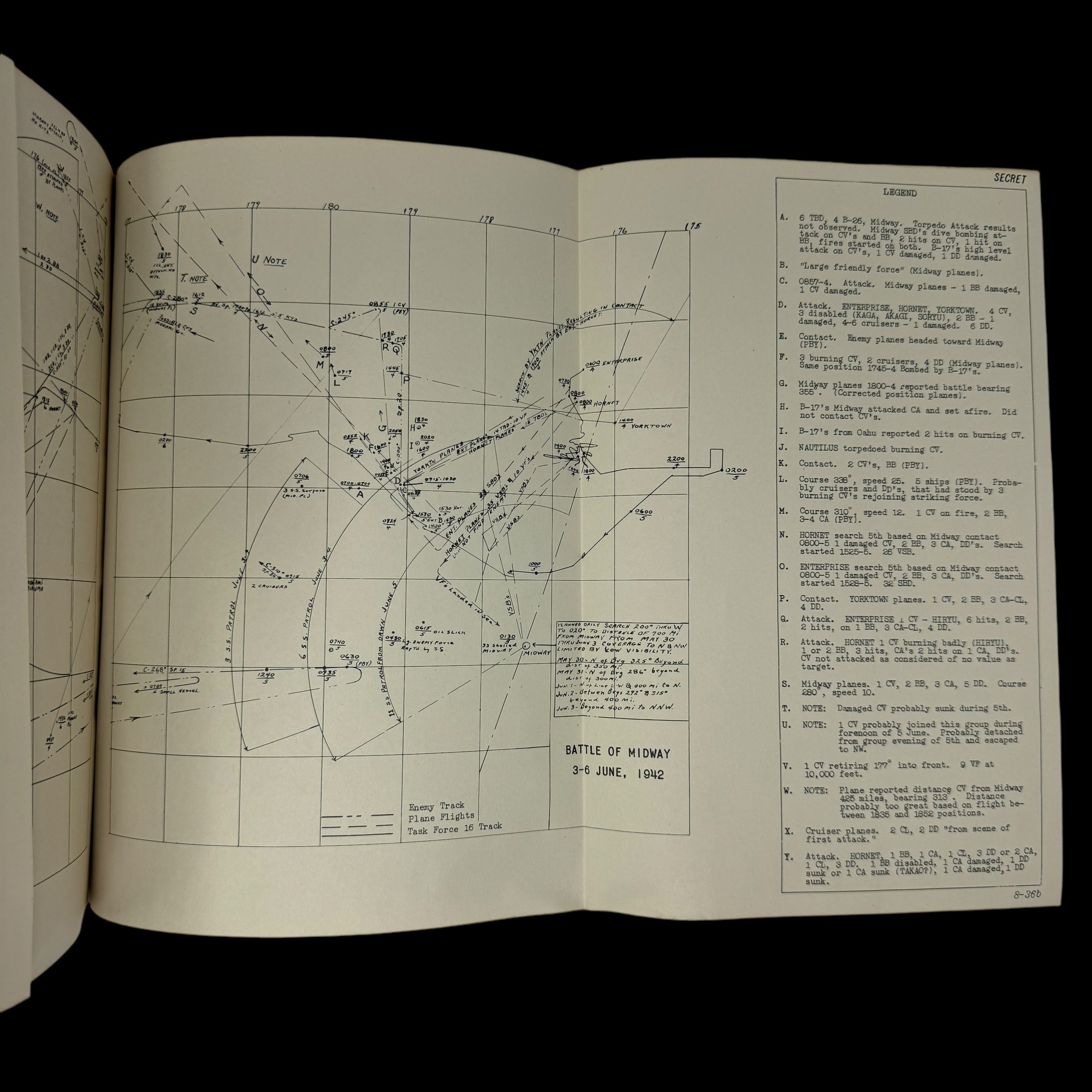
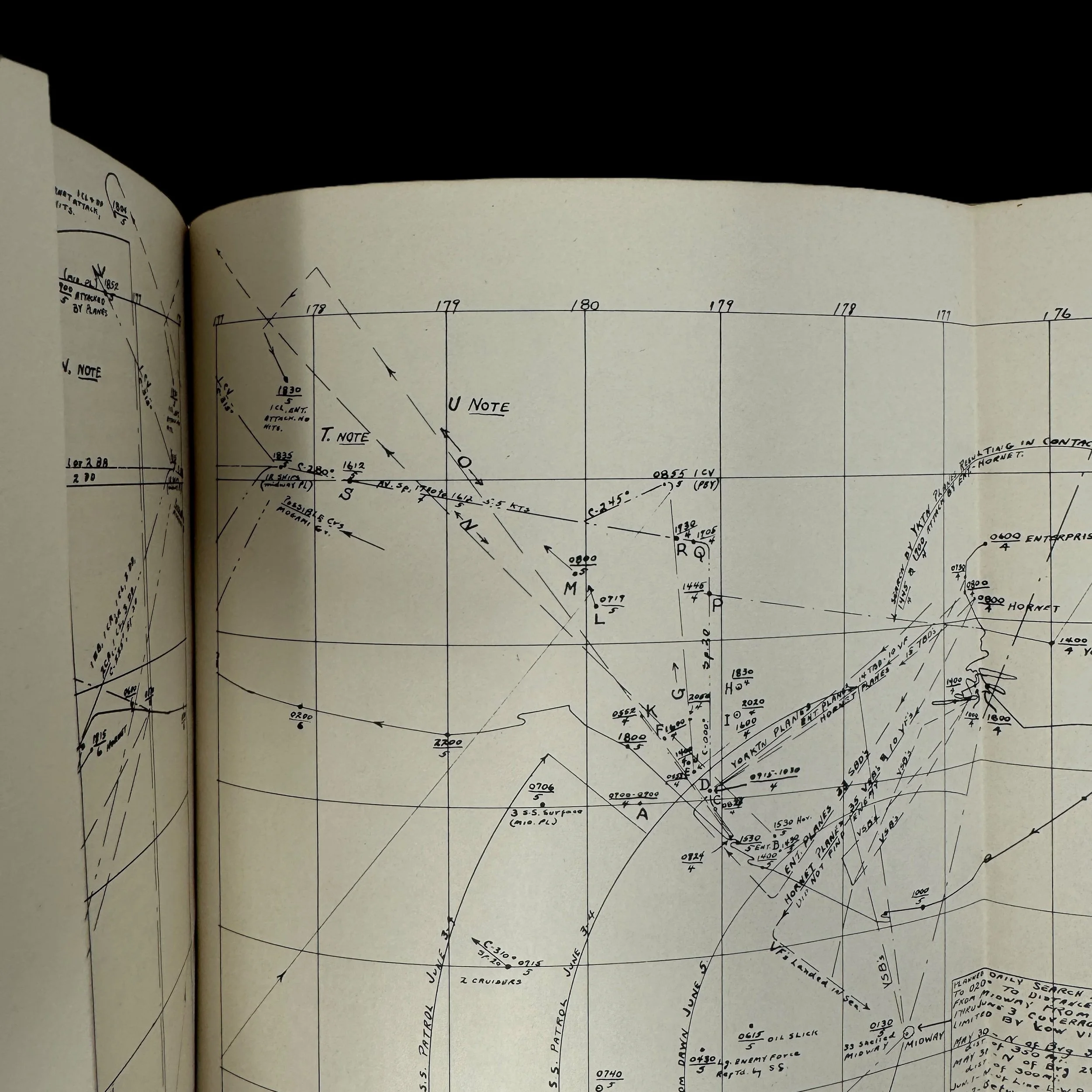
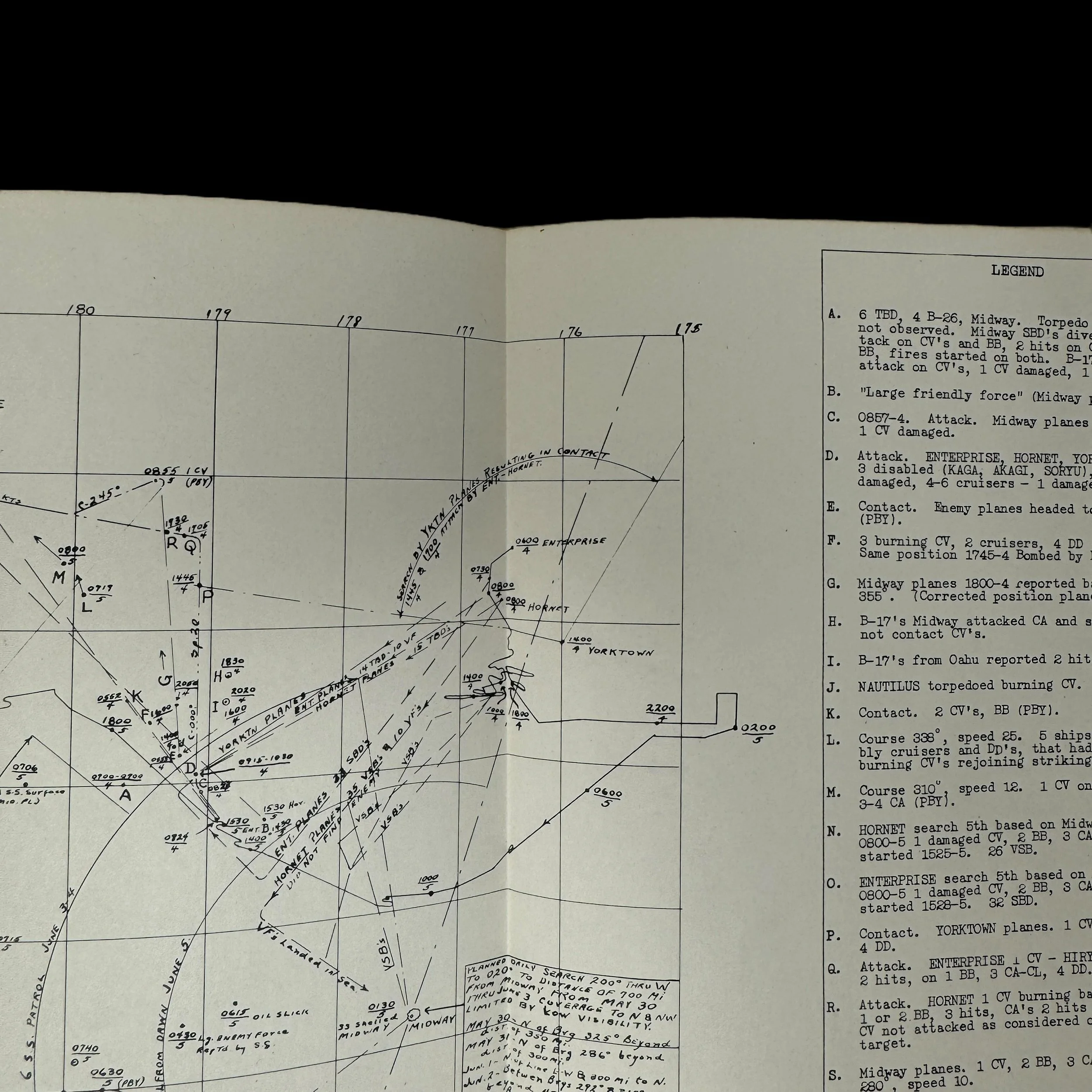
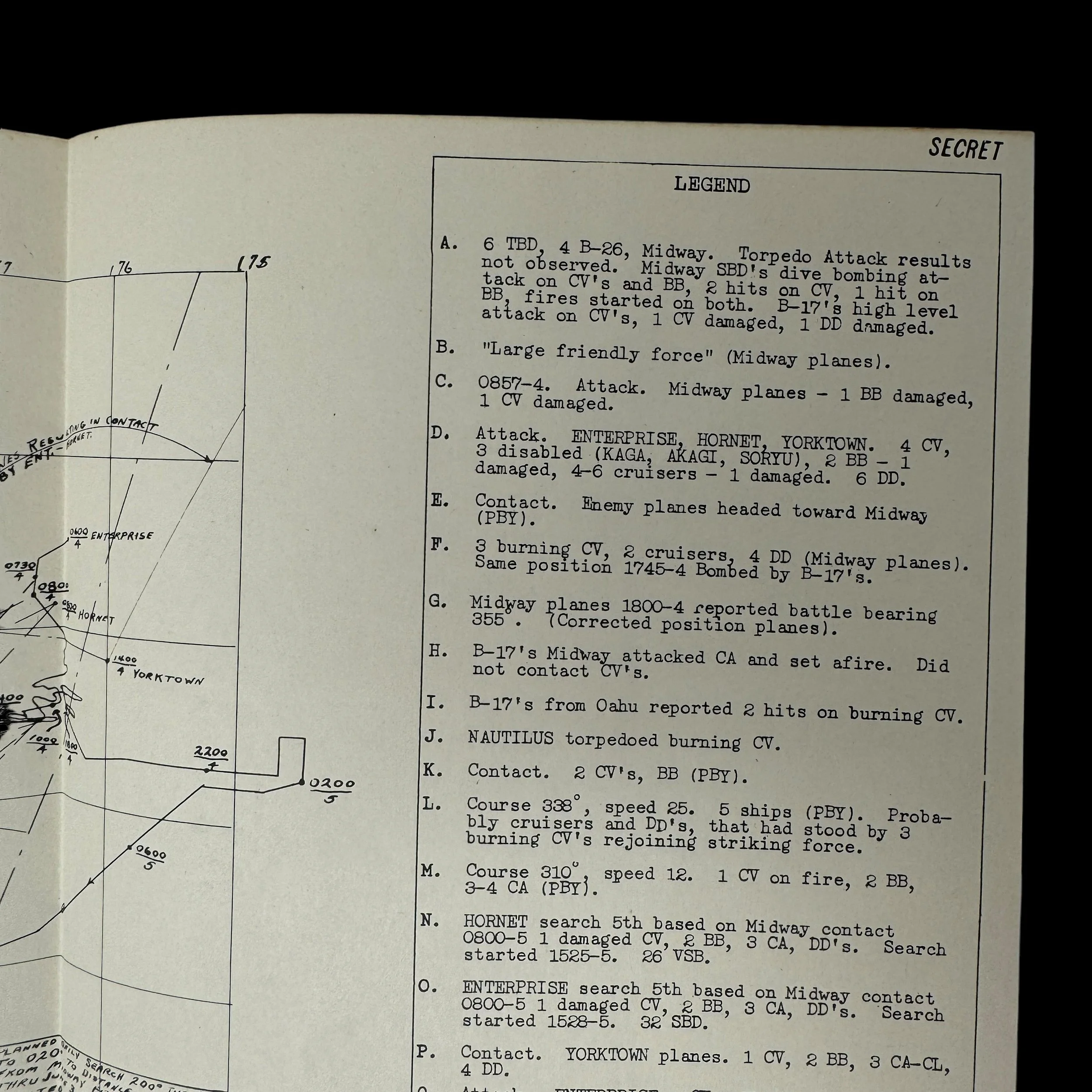
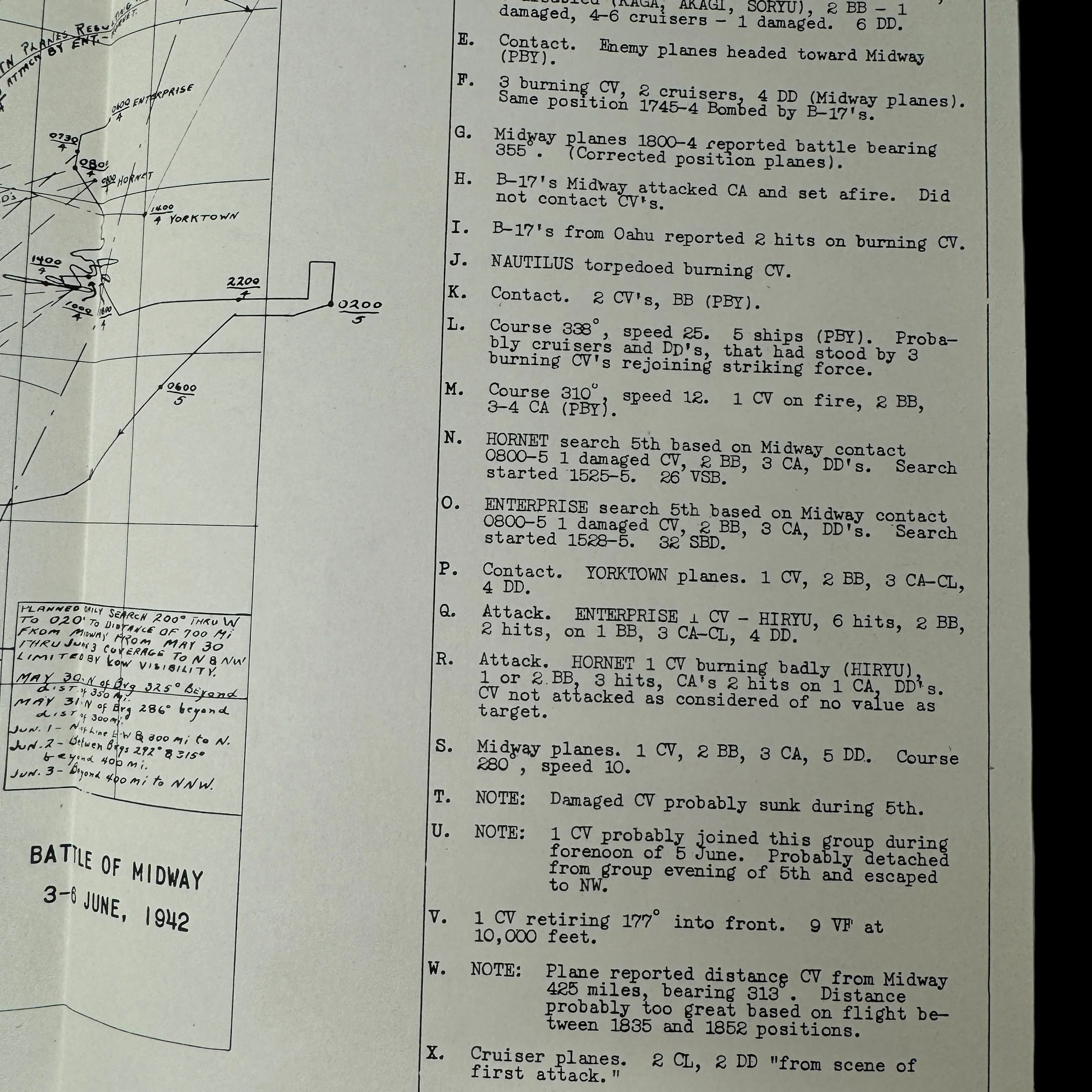

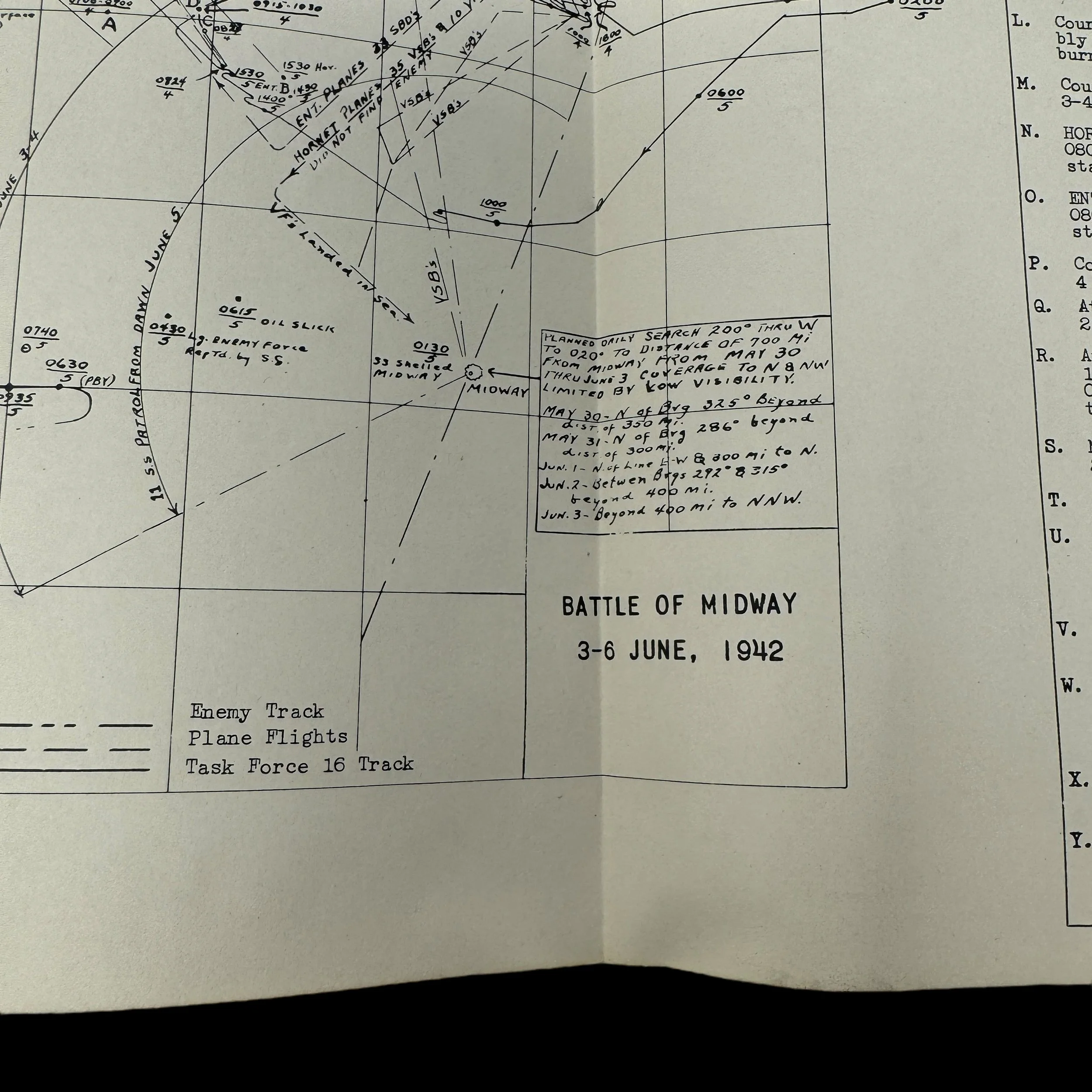
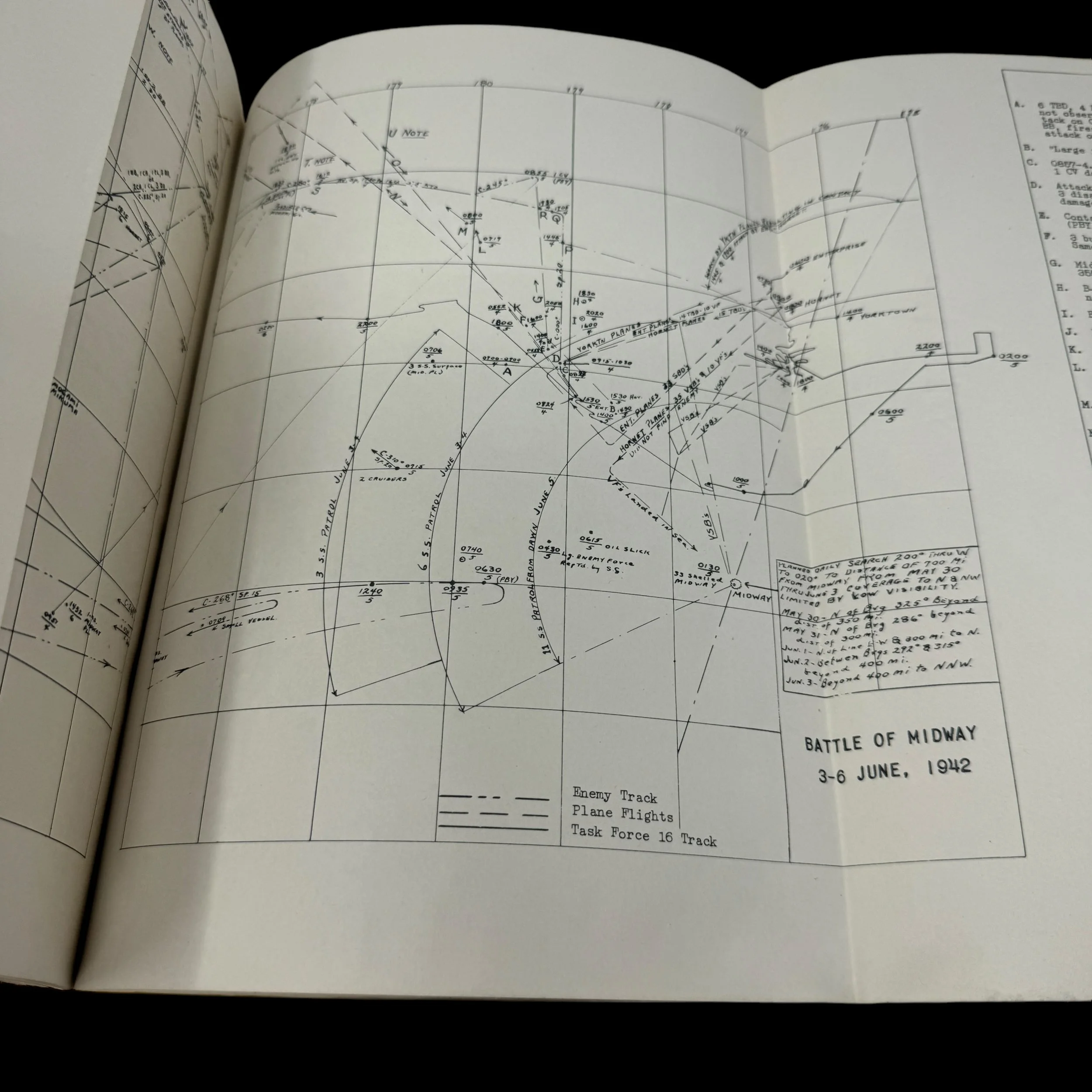
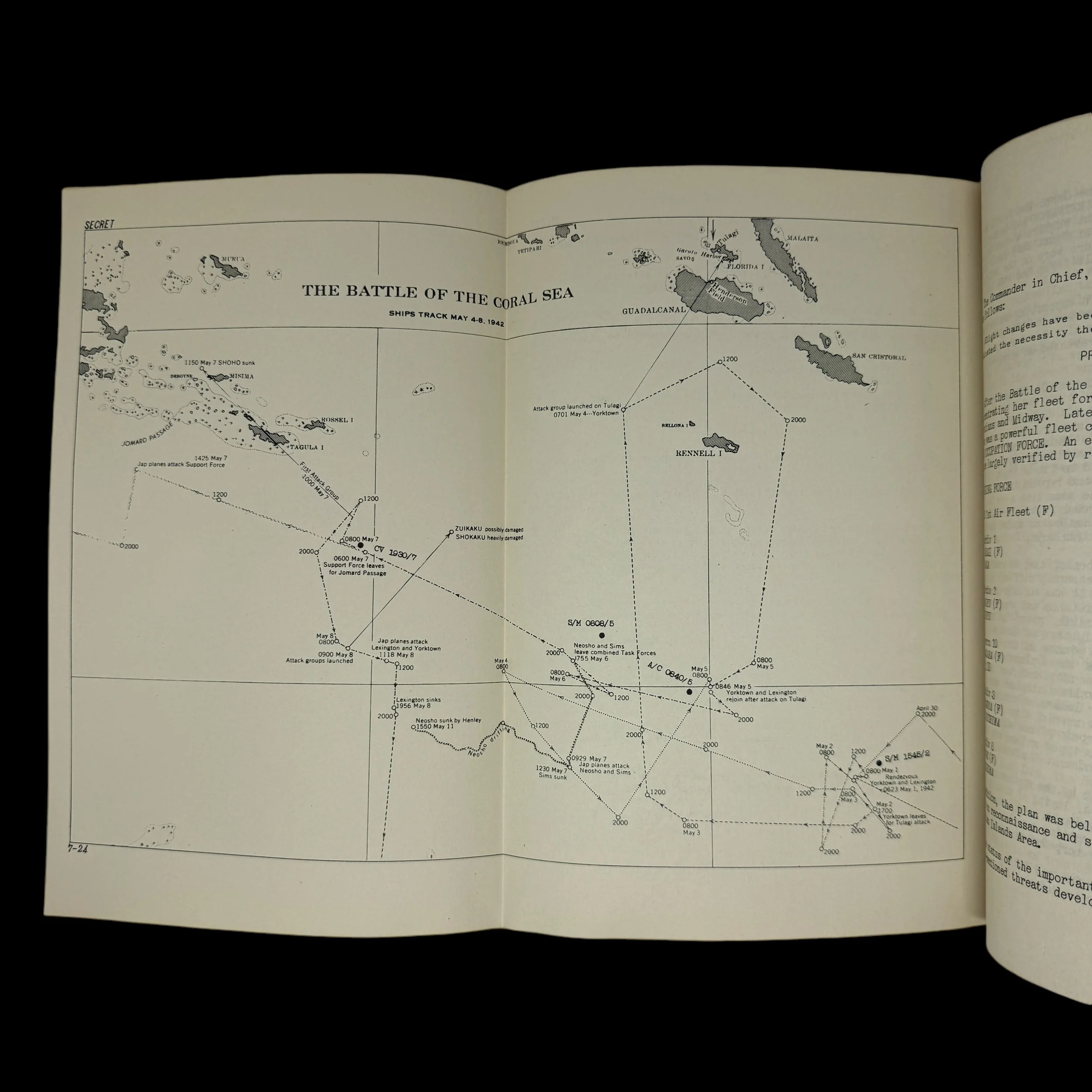
EXTREMELY RARE! WWII No. 1 SECRET 1941-1942 Pearl Harbor to Midway Headquarters of the Commander in Chief Military Intelligence Report
Comes with a hand-signed C.O.A.
This extraordinarily rare, museum-grade World War II artifact is an original "SECRET" marked "Battle Experience - Informational Bulletin," meticulously produced by the United States Fleet under the Headquarters of the Commander in Chief. During WWII, the operations and strategic planning of the U.S. Navy were directed by two prominent commanders: Admiral Chester W. Nimitz, Commander in Chief of the United States Pacific Fleet (CINCPAC), and Admiral Ernest J. King, Commander in Chief of the United States Fleet (CINCUS). Their combined leadership played a pivotal role in the Allied victory.
This highly classified and intricately detailed bulletin, issued by the Headquarters of the Commander in Chief, contains secret military maps, intelligence reports, tactical movements, and a unique compilation of "battle experiences." These experiences were drawn from war diaries and battle reports submitted by various commanders and ships engaged in key operations. The bulletin was printed in extremely limited quantities, strictly for the eyes of high-ranking military officials, including Officers and Generals.
The rarity of this document is underscored by the directive on its first page, which states: "Information must not fall into enemy hands - when no longer required they shall be destroyed by burning. No report of destruction need be submitted." As a result, only a handful of these original "SECRET" "Battle Experience - Informational Bulletins" are believed to still exist.
This particular "SECRET INFORMATION BULLETIN NO. 1" is a remarkable example, titled "Battle Experience - Pearl Harbor to Midway - December 1941 to June 1942 & Makin Island Raid 17-18 August" It offers an unparalleled glimpse into the strategic operations and experiences of the United States Navy during some of the most crucial campaigns of the Pacific Theater.
World War II: From Pearl Harbor to Midway and Beyond
The period between December 1941 and June 1942 was one of the most critical phases of World War II in the Pacific Theater, marking a turning point in the war between the United States and Japan. The Japanese attack on Pearl Harbor on December 7, 1941, set the stage for six months of intense and fast-paced naval battles, carrier task force raids, and bold strategic moves by both sides. The Battle of Midway in June 1942 culminated this phase, shifting the momentum in favor of the Allies. Along the way, battles and raids—such as those on Makin Island, the Gilbert and Marshall Islands, Rabaul, Wake Island, and the Coral Sea—played pivotal roles in shaping the course of the war.
The Attack on Pearl Harbor: December 7, 1941
On December 7, 1941, the Japanese Navy launched a surprise attack on the U.S. Pacific Fleet at Pearl Harbor, Hawaii. This attack aimed to cripple American naval power in the Pacific and allow Japan to expand its empire unopposed across Southeast Asia and the Pacific islands. Although the Japanese sank or severely damaged eight battleships and numerous other vessels, the U.S. aircraft carriers were not present at Pearl Harbor, sparing them from destruction. The attack galvanized the American public and military, leading to the United States' formal entry into World War II. The immediate aftermath of Pearl Harbor saw a rapid expansion of Japanese forces throughout the Pacific, but it also marked the beginning of a counteroffensive that would climax at Midway.
The Battle of Java Sea: February 27, 1942
The Japanese quickly moved to secure vital resource areas, particularly in Southeast Asia. As part of this campaign, they aimed to capture the Dutch East Indies (modern-day Indonesia) to secure oil supplies. The Allies, comprising American, British, Dutch, and Australian forces (ABDA Command), attempted to resist the Japanese invasion but suffered a catastrophic defeat at the Battle of the Java Sea on February 27, 1942.
Led by Dutch Admiral Karel Doorman, the Allied naval force engaged a superior Japanese fleet near Java in an attempt to prevent the invasion. Despite their efforts, the Allies lacked coordination, modern ships, and effective air support, while the Japanese possessed better aircraft, more powerful ships, and advanced tactics. The result was a decisive Japanese victory, with most of the Allied fleet destroyed. The defeat at Java Sea effectively sealed the fate of the Dutch East Indies and highlighted the importance of air superiority and carrier-based operations in the Pacific.
Carrier Task Force Raids: The Gilbert and Marshall Islands, February 1942
In response to Japanese advances, Admiral Chester W. Nimitz, Commander in Chief of the U.S. Pacific Fleet, initiated a series of carrier task force raids to disrupt Japanese operations, boost American morale, and gather intelligence. The first of these raids targeted the Gilbert and Marshall Islands in February 1942. Task Force 17, led by Vice Admiral William F. Halsey and centered around the aircraft carrier USS Enterprise, launched airstrikes on Japanese bases in the Marshall Islands, while Task Force 8, with the USS Yorktown, struck the Gilbert Islands.
Though these raids did not inflict substantial damage on Japanese forces, they demonstrated that the U.S. Navy could still project power and conduct offensive operations despite the loss at Pearl Harbor. More importantly, these operations marked the beginning of a new era in naval warfare, where carrier-based air power would play a decisive role. The Japanese were caught off-guard by the audacity of these attacks, forcing them to divert resources to defend their outer island bases.
Raid on Rabaul: February 20, 1942
Following the raids on the Gilberts and Marshalls, the U.S. Navy turned its attention to Rabaul, a key Japanese base on New Britain. The port of Rabaul had become a major hub for Japanese operations in the South Pacific, and its capture was vital to Japan’s broader strategy. On February 20, 1942, a raid was launched by Task Force 11, with the USS Lexington leading the attack.
While the raid ultimately failed to neutralize Rabaul due to heavy Japanese air resistance and the loss of tactical surprise, it further demonstrated the growing role of carriers in the Pacific War. The raid also provided valuable lessons for the U.S. Navy in carrier task force coordination, reconnaissance, and the use of early warning systems to detect enemy air attacks. Rabaul would remain a thorn in the side of Allied forces until later in the war, but the early raids played a critical role in containing the Japanese advance.
The Makin Island Raid: August 17–18, 1942
The Makin Island Raid was a small but significant commando operation conducted by the U.S. Marine Corps on August 17–18, 1942. Carried out by Carlson’s Raiders, a specialized Marine unit, the raid targeted Japanese installations on Makin Atoll in the Gilbert Islands. The goal was to disrupt Japanese communications, destroy facilities, and gather intelligence.
While the raid achieved some tactical success, including the destruction of a Japanese seaplane base and the killing of a small number of enemy soldiers, it also exposed the challenges of amphibious operations and commando raids behind enemy lines. More importantly, the raid had a significant psychological impact, showing that American forces were willing and able to strike at the heart of Japanese-held territories. The raid on Makin also contributed to the development of future amphibious tactics that would be vital during later Pacific campaigns.
The Battle of Coral Sea: May 4–8, 1942
The Battle of the Coral Sea, fought between May 4 and May 8, 1942, was a major naval engagement that foreshadowed the Battle of Midway and introduced a new form of naval warfare: carrier-versus-carrier battles, where opposing fleets never came within sight of each other. The battle was fought as the Japanese sought to extend their control over the Coral Sea by invading Port Moresby in New Guinea, which would allow them to threaten Australia and cut Allied lines of communication.
In response, the U.S. Navy, under Admiral Frank Jack Fletcher, deployed Task Force 17, which included the carriers USS Lexington and USS Yorktown. Over the course of several days, American and Japanese carrier planes launched waves of attacks against each other's fleets. Though both sides suffered heavy losses, including the sinking of the USS Lexington and the Japanese carrier Shōhō, the battle ended in a strategic victory for the Allies. The Japanese invasion force was forced to retreat, and Port Moresby was saved.
The Battle of the Coral Sea was historically significant for several reasons. First, it was the first naval battle in which opposing fleets fought entirely through aircraft, with no direct ship-to-ship combat. Second, it marked the first time that a major Japanese offensive had been turned back, halting the seemingly unstoppable Japanese advance across the Pacific. Most importantly, the battle had far-reaching consequences for the upcoming Battle of Midway, as it deprived the Japanese of crucial carrier support.
The Battle of Midway: June 4–7, 1942
The Battle of Midway, fought from June 4 to June 7, 1942, was the climax of the six-month period following Pearl Harbor. It was a decisive naval battle that shifted the balance of power in the Pacific in favor of the United States. After the setback at Coral Sea, the Japanese sought to lure the U.S. Pacific Fleet into a decisive battle by attacking Midway Atoll, a strategic island base northwest of Hawaii.
Unbeknownst to the Japanese, U.S. cryptographers had broken their naval codes and were aware of the planned attack on Midway. This allowed Admiral Nimitz to position his carriers, including USS Enterprise, USS Yorktown, and USS Hornet, in ambush. When the Japanese launched their air attack on Midway on June 4, American carrier planes counterattacked, catching the Japanese fleet by surprise. Over the next few days, the U.S. Navy sank four Japanese carriers—Akagi, Kaga, Soryu, and Hiryu—effectively destroying the core of Japan's carrier force.
The Battle of Midway was a turning point in the Pacific War. Japan lost not only four carriers but also a significant number of experienced pilots and crew members, crippling its ability to project air power. For the United States, Midway was a strategic victory that shifted the balance of naval power in the Pacific and paved the way for the Allied island-hopping campaigns that would eventually bring the war to Japan's doorstep.
From Pearl Harbor to Midway, the first six months of the Pacific War were marked by a rapid and dramatic shift in the balance of power. The Japanese, initially dominant in the region, found their advance halted by a combination of strategic raids, key naval battles, and American resilience. The Battle of the Java Sea illustrated the limitations of traditional naval warfare, while the carrier raids on the Gilbert, Marshall, Wake, and Marcus Islands demonstrated the growing importance of air power in naval engagements. The Battle of Coral Sea was a key moment, halting the Japanese advance toward Australia, but it was the Battle of Midway that truly turned the tide, signaling the beginning of the end for Japanese dominance in the Pacific. Together, these battles and operations forged the path to eventual Allied victory in the Pacific Theater.